How Health Affects Your Pregnancy Chances
Making Maths Add Up
























How Health Affects Your Pregnancy Chances
Making Maths Add Up


























... and welcome to the latest issue of Healthy Child, with me, Dr Ranj Singh


We’re all concerned about the health outlook for children, and understand that a good start can help towards a longer, healthier life. But how do we make sure they take the right first steps towards better growth and development? In this issue we’re going to look at many of the most important issues, including nursery care, diet and exercise.



Of course there are many other issues a ecting children’s health, from worries about possible medical negligence, to the best ways to keep them safe at school, online and in the outside world – all subjects we’ll deal with in this issue, from Martha’s Rule to regulating screen-time.
And there’s plenty more in this issue of Healthy Child, from ideas about teaching and outdoor activities, to the potential of dietary supplements and the importance of good sleep. And don’t forget the website at www.celebrityangels.co.uk, which is an invaluable source of news and advice.
I’ll tell you more in my interview about the major issues in child health, and how I’ve seen the hard-working sta of the NHS working to keep children healthy and happy. I’m sure you will find Healthy Child an invaluable aid as you get to grips with child health and wellbeing issues. Remember, knowledge is power! – the more we learn, the better we’ll be able to take care of the kids and make sure they grow up, strong, happy and healthy!


Dr Ranj Singh Guest Contributor





SPECIAL FEATURES
10 Interview

Celebrity guest contributor Dr Ranj Singh talks to Chris Jenkins about issues from fertility and nursery care to veganism and Martha’s Rule

HEALTH TODAY
14 Health Today


16 UK’s Child Health Crisis

All the news on child health issues from the crisis in child mental health to an NHS early warning system
The Academy of Medical Sciences has released a worrying report highlighting declining health among children under five
18 The Return of Measles

Measles, once regarded as almost eliminated in the UK, is on the rise. How should we approach this dangerous childhood illness?

25 The Right Treatment
What do you do when something goes wrong with your child’s health care? It pays to have the help of an expert in medical negligence
PREGNANCY & EARLY YEARS


28 Pregnancy & Early Years


All you need to know about managing pregnancy and the first months of baby’s life
30 Care and Share
Choosing the right nursery for your child can be a challenge. What do you look for and how can you make sure that your child will be well cared for?
39 Parental Care



Looking a er a sick child can be a worrying and exhausting task. We look at the advice from the NHS


45 Tips for Teething
Teething can be a distressing time for babies and parents, so here are some top tips to get through the period without pain
46 Bringing Up Baby
Help! – is probably your first response when you have to buy products for a new baby. Here’s some advice from the NHS on where to start
50 Health and Fertility
How can your overall health a ect your fertility? If you are struggling to get pregnant, awareness can be key to success
54 Snooze in Safety
What are the best ways to ensure a safe and healthy sleeping environment for your youngsters?
CHECK
58 Health Check
All you need to know about the top news issues a ecting children’s health today
63 Meat is a Treat
Before you think about giving up meat, consider whether it should be part of a healthy, balanced diet
69 The Weight of Responsibility











As parents, we take responsibility for our children’s health – and nowhere is that more important than in the issue of obesity
73 A Step-by-Step Guide to Skin Care
We all worry about our skin as we age, but it’s important to care for it when we’re young too. Here are some top tips from water quality to sun protection
76 Food Swaps for Health
By making simple yet e ective food swaps, you can give your kids delicious meals while nourishing their bodies
80 Safe and Sound
All parents worry about the safety of their children, but it can be hard to protect them constantly. What can we do to make sure they stay safe?















85 The Science of Sleep
Sleep, an essential component of human health, is profoundly influenced by the structure of our beds. How do you plan for the best night’s sleep?
88 The Mushroom Factor
Can supplements based on mushrooms benefit overall health and particularly the immune system? Research suggests it’s a growing field...
93 The Trouble With Skin
Skin problems such as eczema and psoriasis can be distressing to adults or children. We look at the causes and treatments
94 New Thinking on ADHD
ADHD can be di icult to diagnose, and even harder to treat. But there are alternatives to the medications with undesirable side-e ects



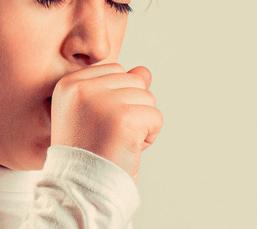
97 Beneath the Skin
Skincare products can contain many unfamiliar ingredients – so do you know what they are and what they can do for your epidermis?


98 Is Veganism Right For Your Child?
Veganism is a philosophical belief that avoids using animals for food and clothing. But is it the best way to bring up your child?
104 The Dangers of Whooping Cough
Data published by the UK Health Security Agency (UKHSA) shows cases of whooping cough continue to increase. Why is this, and what are the risks?
106 Lice and Easy
Head lice and nits are a bugbear, but can be dealt with either medically or by combing. We get down to the nitty-gritty
UP
108 Growing Up
All you need to know about the issues a ecting children’s health as they grow up and develop
112 Making Maths Fun
If the thought of maths lessons makes you run screaming, think what it’s like for the kids. Is there any way to make maths fun?
116 On the Trail of Better Health
How do you get your kids away from their digital devices and out in the fresh air? Try a treasure trail for a healthy family outing



118 Parenting
All you need to know about helping your children through adolescence and early adulthood
120 The Parent Trap
We all worry about children getting involved with drug or alcohol abuse, but many children live in households with parental substance misuse problems
123 Stimulating the Senses
How can play be designed to stimulate the senses and promote inclusivity for children of all abilities?
124 The Woof and the Smooth
Proper nutrition is fundamental to the health and well-being of dogs. Just like humans, dogs require a rich and balanced diet
127 Play and Learn



Toys play a crucial role in child development, providing more than mere entertainment. Which are the best types for your child?
129 Cooking With the Kids
It’s never too early to try to pass on some culinary skills – but how do you start getting the kids working in the kitchen?


PUBLISHER & CEO
Kevin Harrington
EDITOR
Chris Jenkins
SUB EDITOR
Emmanuel Berhanu
CONTRIBUTORS
Richard Wentworth
Thomas J Roberts
Patricia Savage
PRODUCTION
Ray Walsh
DESIGN
Joanna Harrington
ADMINISTRATOR
Joshua Ssempiira
PUBLISHED BY
COPYRIGHT © 2024, CELEBRITY ANGELS ALL RIGHTS RESERVED
COVER IMAGE Talent4Media
Healthy Child with Dr Ranj Singh Celebrity Angels 143 Caledonian Road London N1 0SL Tel: 020 7871 1000
For sales enquiries call: 020 7871 1000
All material in Healthy Child with Dr Ranj Singh is wholly copyright and reproduction without the written permission of the publisher is strictly forbidden. Products and services included in this publication do not imply endorsement by Dr Ranj Singh. The views expressed in this publication are entirely those of the writers and do not necessarily represent those of Celebrity Angels. The information in this publication is carefully researched and produced in good faith, however, neither the Publisher nor the Editors accept responsibility for any errors. The Celebrity Angels Series is published in the UK under licence by Damson Media Limited. Damson Media Limited is registered in England and Wales under registration no. 07869300.










Chris

HOW CAN GENERAL HEALTH AFFECT FUNCTIONS SUCH AS FERTILITY?
RS. General and reproductive health are closely intertwined because of many reasons. Firstly if you are generally unwell with anything, then your fertility usually reduces (because your body thinks that right now would be a bad time to try to create and raise offspring), and secondly because specific medical conditions can have a direct impact on fertility. For instance, fertility can be negatively impacted by lifestyle factors like smoking and excessive alcohol consumption, poor nutritional status resulting in an inadequate intake of essential vitamins and minerals, poor sleep, being very overweight or underweight, mental health problems like anxiety and depression, sexually transmitted infections, and chronic illnesses (like diabetes, thyroid conditions and cancer). As a general rule, maintaining good overall health through a balanced diet, regular exercise, adequate sleep, stress management, and avoiding harmful substances can significantly enhance fertility and improve reproductive outcomes.
WHAT IS THE IMPORTANCE OF EARLY YEARS CARE AND WHAT SHOULD A NURSERY BE PROVIDING?
RS. We are increasingly recognising the importance and lifelong implications of early years care and experiences. Early years care is crucial for a child’s development, laying the foundation for lifelong learning and behaviour, and
general health. During the first five years, the brain undergoes rapid growth, making it a critical period for cognitive, emotional, and social development. Quality early care provides a safe, stimulating environment that fosters language, motor skills, and emotional security. Positive interactions with caregivers help build trust and social skills, while structured activities promote problem-solving and creativity. Early care also identifies and addresses developmental delays and health issues, ensuring timely interventions.
While it would appear that places like nursery are ideally suited to provide this sort of input (and many do a fantastic job), there is so much that parents and carers can do at home too, which will also serve to increase the bond you have with your child.
RS. Children today face many health challenges, some of which have been around for a long time and some of which are emerging. Globally, infectious diseases have always posed a significant problem. We’ve seen evidence of this recently with measles outbreaks across Europe. Alongside infections, injuries represent a massive burden in children of all ages, emphasising the need for safety measures inside and outside the home. Respiratory conditions (like asthma) and allergies are more common in children, and seem to be getting more so. Likewise we are increasingly recognising
neurodevelopmental differences (like autism and ADHD which need to be approached is specific ways), as well as mental health issues (particularly anxiety, depression and eating disorders). And problems like obesity are getting worse globally, highlighting the need for better strategies to tackle this before it has long term health effects.
RS. Veganism is becoming increasingly popular, and if done with proper attention to ensure the right intake of nutrients, can be a really healthy way of living for everyone. However, without the proper knowledge and resources (and sometimes money), it can unknowingly result in things like deficiencies. Veganism can be healthy for children if carefully planned to ensure they receive all necessary nutrients for growth and development. A well-balanced vegan diet, rich in fruits, vegetables, whole grains, legumes, nuts, and seeds, can provide essential nutrients. However, certain nutrients require special attention at this time of life, but may get inadvertently neglected, such as: protein (needed for growth), calcium (for bone and dental health), iron (for blood health), vitamins D and B12 (for a range of functions), and omega-3 fatty acids (necessary for brain development). It’s always worth speaking to a healthcare professional if you’re worried about your child’s diet or intake. »
RS. Sensory play can be a game-changer for neurodivergent children (e.g. autism, ADHD, and sensory processing differences).
By offering essential sensory input, it helps these children better process and respond to stimuli, enhancing their cognitive development, motor skills, and social interactions. For autistic children in particular, sensory play can work wonders by reducing anxiety and improving focus through calming, predictable experiences. It also boosts communication and language skills through interactive activities.
Meanwhile, children with ADHD benefit from sensory play by giving them an outlet for their abundant energy and enhancing their attention spans with engaging, structured tasks. Beyond these benefits, sensory play is a cornerstone for emotional regulation. It provides a safe and supportive space for neurodivergent children to express themselves and manage their emotions. In short, sensory
play is not just fun, it’s a vital tool for promoting the overall developmental, emotional, and social well-being.
WHAT’S THE BEST WAY TO GET CHILDREN TO GO OUTDOORS AND TAKE MORE EXERCISE?
RS. In my experience, getting children interested in outdoor activities and taking part in physical activity rests on two key things: finding something they enjoy doing and building it into their routine, and role-modelling of that behaviour by others around them so it becomes a normal and social experience. Simply telling your children to get outside and do something is unlikely to build longer terms behaviours. But perhaps going out as a whole family and taking part in walks, runs, cycles, swims, or any kind of games or sports together is much more attractive and effective. Plus, it’s fun for the whole family. It doesn’t have to require lots of money or resources either. There are many outside spaces and activities you can do for free or even at low cost. It’s well worth checking out what your local council offers as a starting point.
DO YOU THINK THAT THE ROLLOUT OF MARTHA’S RULE WILL BE OF GREAT BENEFIT TO PATIENTS AND THEIR FAMILIES?
RS. Martha’s Rule is a health policy being phased in from April 2024, designed to give patients and their families the power to ask for a quick second opinion if they feel their concerns aren’t being properly addressed. It follows a campaign by the parents of Martha Mills, 13, who died of sepsis because her symptoms were missed. The rule aims to prevent such tragedies by making sure patients are listened to and their symptoms are taken seriously.
With Martha’s Rule, hospitals would need to set up an easy-to-use process for families to raise their concerns. This could mean getting in touch with a special team or an outside medical review panel. The idea is to create a safety net for patients, especially in tricky or serious cases where getting the right diagnosis and treatment quickly is vital. By pushing for patient advocacy and accountability in healthcare, Martha’s Rule hopes to boost patient safety, cut down on avoidable

mistakes, and make the healthcare system more responsive and transparent. In my opinion, this can only be a good thing.
THE SAD LOSS OF DR MICHAEL MOSLEY LOSS WAS A GREAT BLOW TO HIS MANY FANS, HOW WOULD YOU DESCRIBE HIS CONTRIBUTION TO THE HEALTH ARENA?




RS. The sudden and tragic death of Dr. Michael Mosley, one of the most wellknown doctors in the UK, has shocked both the medical profession and the general population at large. He was a much-loved and respected scientist and broadcaster, and certainly someone I’ve looked up to as a doctor who also works in the media. Michael has revolutionised the health landscape with his work as a television presenter, journalist, and author, making scientifically-backed health concepts more accessible and engaging for everyone. Many people credit him for turning their lives around. Famous for his captivating BBC documentaries, one of his standout contributions was his advocacy of intermittent fasting, particularly the 5:2 diet. This approach has now become a bit of a health phenomenon and changed the way we think about our diets and the impact on weight, metabolic health and even longevity.
Beyond fasting, he has shone a spotlight on the gut microbiome, mental health, and exercise, always emphasising practical, evidence-based strategies. I hope that one day I’m able to have just a fraction of the impact he has had. He will be sorely missed by so many.

TELL US ABOUT YOUR PART IN THE MUSICAL & JULIET – WHICH PART OF YOUR PERFORMANCE WILL MAKE YOU MOST NERVOUS?
RS. In what is a bit of a career change for me, I’m making my UK theatre debut by taking on the role of Lance in the hit jukebox musical & Juliet . I know it will come as a bit of a surprise to many, but it’s not my first foray into performing, and I’ve been working really hard behind the scenes to make this dream a reality. Romeo and Juliet is one of the most well-known love stories ever and people will have a good idea of what happens at the end. The twist in & Juliet is that it asks: what would have happened if Juliet didn’t die? What if she got to rewrite the story? It’s such a clever way of framing the story and also a very modern way of doing it in a femaleempowering, diverse way. Plus it’s full of everyone’s favourite music from one of the century’s most successful writers, Max Martin, who wrote for everyone from Britney Spears to the Backstreet Boys! It’s a party in a musical!
I’m definitely nervous because it is a
big deal for me. Also, I don’t come from an acting background which means I have a lot to prove. I have to show people that I can do this. So yes, I am feeling the pressure but I love a challenge. I’m nervously excited, or excitedly nervous!
WHAT ELSE HAVE YOU BEEN UP TO AND HAVE PLANNED FOR LATER IN THE YEAR?
RS. A er being a NHS doctor for over 20 years and having worked in my ultimate career goal as a Consultant in Paediatric Emergency Medicine for several of those years, I promised myself that in 2024 I would change things up, chase more joy, and put myself out of my comfort zone even further. So I took on a huge house renovation project up near Manchester to restore a beautiful water tower built in the 1800’s (and doing as much of it myself as possible!). On top of that I’m joining my first UK-wide musical theatre tour which will be a huge deal for me. And then at the end of 2024 I’ll be popping back into pantomime as the Man In The Mirror in Snow White ! It’s going to be a very creative and fun year, I hope! ■





An NHS survey reports that one in five children and young people in England aged eight to 25 had a probable mental disorder in 2023.
The Mental Health of Children and Young People in England 2023 report found that 20.3 percent of eight to 16-year-olds had a probable mental disorder in 2023. Among 17 to 19-year-olds, the proportion was 23.3 percent, while in 20 to 25-year-olds it was 21.7 percent. After a rise in rates of probable mental disorders between 2017 and 2020, prevalence continued at similar levels in all age groups between 2022 and 2023.
Participants were also asked about eating disorders for the first time since the 2017 survey. In 2023, 12.5 percent of 17 to 19-year-olds had an eating disorder, an increase from 0.8 percent in 2017. Between 2017 and 2023, rates rose both in young women (from 1.6 percent to 20.8 percent) and young men (from 0.0 percent to 5.1 percent) in this age group.
The survey also found 5.9 percent of 20 to 25-year-olds had an eating disorder, while eating disorders were identified in 2.6 percent of 11 to 16-year-olds, compared with 0.5 percent in 2017 –with rates in 2023 four times higher in girls (4.3 percent) than boys (1.0 percent).
NHS England has rolled out 398 Mental Health Support Teams within schools and colleges to provide
early support to young people with mild to moderate mental health issues – covering 35 percent of pupils and learners in further education.
A further 200 teams are currently in training and due to become operational by Spring 2025, which would ultimately cover five million (over 50 percent) of the country’s pupils and learners.
NHS Mental Health Director Claire Murdoch said: “Today’s report shows the continued unprecedented pressures faced by young people and reflects the increased demand for NHS children’s mental health services.
“The NHS is providing support for more children and young people than ever before – we have already supported over 700,000 children and young people with their mental health this year and also seen a 47 percent increase in young people being treated for eating disorders compared to pre-pandemic.
“NHS staff are working harder than ever to meet the increased demand and we have fast-tracked mental health support for millions of pupils in schools and colleges, as well as significantly expanding the children’s mental health workforce.... It is vital that any child or young person struggling, or their family, reaches out for help so they can get the care they need”.




Eating nutritious Brunswick Sardines is one step towards a healthy lifestyle. Other healthy lifestyle guidelines include achieving and maintaining a healthy body weight, and doing regular physical activity. Enjoy a variety of foods, emphasising cereals, breads, other whole grain products, vegetables and fruit. Eat fish, lower-fat dairy products, leaner meats and food prepared with little or no fat, include a small amount of unsaturated fat each day, and limit trans fats. www.brunswick.ca
The NHS is rolling out a new early warning system for doctors and nurses treating children to quickly identify deterioration, escalate care, and act on parental concerns.
The system allows doctors to track possible deterioration in a child’s condition on a chart, measuring things like blood pressure, heart rate, oxygen levels and levels of consciousness, with di erent scores representing the level of concern.
While many hospitals already have similar systems in place, this change will provide a single, national standardised process for patients, families, and sta to have a clear way of ensuring issues are detected and escalated quickly.
If a parent or carer raises a concern that their child is getting ill or sicker than the score shows, this will immediately escalate the child’s care regardless of other clinical observations.
The NHS will be rolling out a leaflet and video content for parents, letting them know how to communicate concerns to healthcare sta and encouraging them to escalate if needed. As the programme develops, the NHS will implement any guidance from Martha’s Rule within the early warning system.
A similar process for adults, the National Early Warning System, already exists.

RELIABLE SOURCE
VEG 1 is the nutritional supplement developed by The Vegan Society. It provides an a ordable, reliable source of vitamin B12, vitamin D, iodine and selenium. VEG 1 Baby and Toddler is a five-month supply (150ml) of our liquid multivitamin for children aged six months to four years. Also available are VEG 1 chewable multivitamin tablets in blackcurrant and in orange flavour. www.vegansociety.com
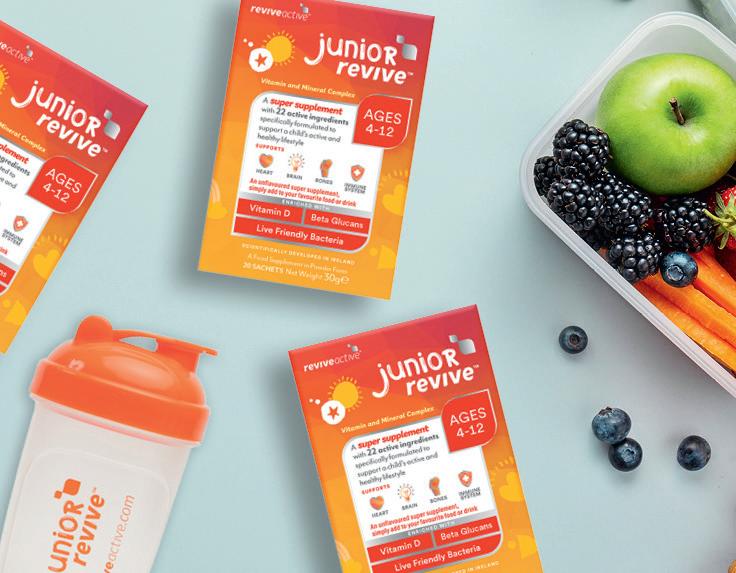
Junior Revive is a super supplement with 22 active ingredients to support a child’s immunity, energy and mental performance all in one daily sachet. Designed for 4-12-year-olds, simply add one unflavoured sachet to 100ml of water, juice or smoothie to provide the wide range of vitamins, minerals and antioxidants growing kids need. reviveactive.com
A report has highlighted declining standards of child health in the UK. What can policymakers do to fix it?
The Academy of Medical Sciences, a group of around 1,400 Fellows elected from fields across the biomedical sciences, has released a worrying report highlighting wide-ranging evidence of declining health among children under five in the UK. The report calls on policymakers to take urgent action to address the situation, warning that major health issues like infant mortality, obesity and tooth decay are not only damaging the nation’s youngest citizens and their future, but also its economic
prosperity, with the cost of inaction estimated to be at least £16 billion a year.
The report says that in recent years, progress on child health in the UK has stalled, with infant survival rates worse than in 60 percent of similar countries, and the number of children living in extreme poverty tripling between 2019 and 2022. It also highlights an “appalling decline” in the physical and mental health of children under the age of five, highlighting the rise in obesity and tooth decay in recent years. Those living in the most deprived areas
are twice as likely to be obese than in affluent areas, and one in four is affected by tooth decay.
Demand for children’s mental health services has surged, and vaccination rates have plunged below World Health Organization safety thresholds, threatening outbreaks of diseases such as measles. Issues such as the COVID-19 pandemic, increased cost of living and climate change compound widespread inequality and are likely to make early years health in the UK even worse.


Child health experts from across the UK produced the report, which includes perspectives from parents and carers with lived experience. Chaired by Professor Helen Minnis FMedSci and Professor Sir Andrew Pollard FMedSci, the group examined the positive impact of intervening in the early years on the health and future of the nation.
Drawing on an extensive body of evidence, the authors make five recommendations for governments and policymakers to urgently start addressing the issues raised. These include:
h Implementing effective early years interventions to improve child health and wellbeing and promote research to identify further approaches
h Establishing a unifying vision across Government for the early years to coordinate policies and resources
h Addressing the decline in child and family health workforce and fragmentation across sectors to deliver effective services
h Improving collection and access to data on the wider determinants of child health to enable research and policy implementation
h Ensuring diverse voices of children,
parents and carers are represented in developing early years policies and interventions
While stressing that no single age period determines health outcomes, the report presents robust data showing that investment in the earliest years, including preconception and during pregnancy, delivers lifelong benefits by establishing healthy foundations to reduce the risk of complex health issues. Early childhood is a cost-effective time to intervene compared to opportunities later in life.
Report co-chair, Professor Helen Minnis FMedSci, said: “Every child has the right to a safe and healthy childhood. It is shameful that the UK is failing to provide this. Child deaths are rising, infant survival lags behind comparable countries and preventable physical and mental health issues plague our youngest citizens. The science is clear – we are betraying our children. Unless the health of babies and young children is urgently prioritised, we condemn many to a life of poorer health and lost potential. The time to act is now.”
The UK branch of UNICEF, the United Nations Children’s Fund, endorsed calls for
early intervention. Claire O’Meara, Director of Advocacy (Interim), The UK Committee for UNICEF (UNICEF UK), said: “The first few years of a child’s life are vital for their development. This critical report further strengthens evidence that investment in this age group leads to huge lifelong benefits to children as well as economic benefits to wider society. It also makes it clear the Government needs to act on this evidence now to reverse already worrying declines in children’s health outcomes. UNICEF UK is calling on the UK Government to implement a National Baby and Toddler Guarantee to ensure every child is supported to thrive now, and for the future.”
The Royal College of Paediatrics and Child Health also welcomed the review.
Dr Mike McKean, Vice President for Health Policy of the Royal College of Paediatrics and Child Health, said: “This report provides alarming evidence that the UK is failing too many of its children. We are presiding over a crisis in child health that demands urgent action. As paediatricians, we witness daily the devastating consequences of these systemic failures. Without transformative intervention on child health, we condemn generations to a poorer future. The time for excuses is over – government must act decisively to address this crisis.” ■
Measles, once regarded as almost eliminated in the UK, is on the rise – why is that, and how should we approach this dangerous childhood illness?

NHS England, Public Health England, the Department of Health and local authorities across the country are urging parents of 10-16-year-olds to prevent measles by getting their children vaccinated with the MMR jab.
Figures published in April showed high numbers of confirmed measles cases in England in the first three months of 2013 (587 by the end of March), following a record number of almost 2,000 cases in 2012. The rise in measles cases is mostly due to 10-16-year-olds who missed out on vaccination in the late 1990s and early 2000s when concerns were raised by discredited fears of the MMR vaccine.
There are now one third of a million children in this age group in England who have not been immunised against measles and a further one third of a million who have only had one jab, instead of the two jabs needed to ensure they are fully protected.
Dr David Geddes, Head of Primary Care Commissioning at NHS England and a practising GP said:
“I would urge parents and guardians of 10-16-year-olds to think: has your child had their MMR jabs? If they have not had the required two doses of the vaccine or you are not sure, contact your local GP surgery and get the jabs. Young people who are 16 and over, but not had their jabs should also come forward to get themselves vaccinated. Everyone can have the vaccine as long as it is medically advisable for them to do so”.
“Measles is a very unpleasant, potentially fatal, but entirely preventable disease. To prevent an outbreak as we have seen in Wales recently it is
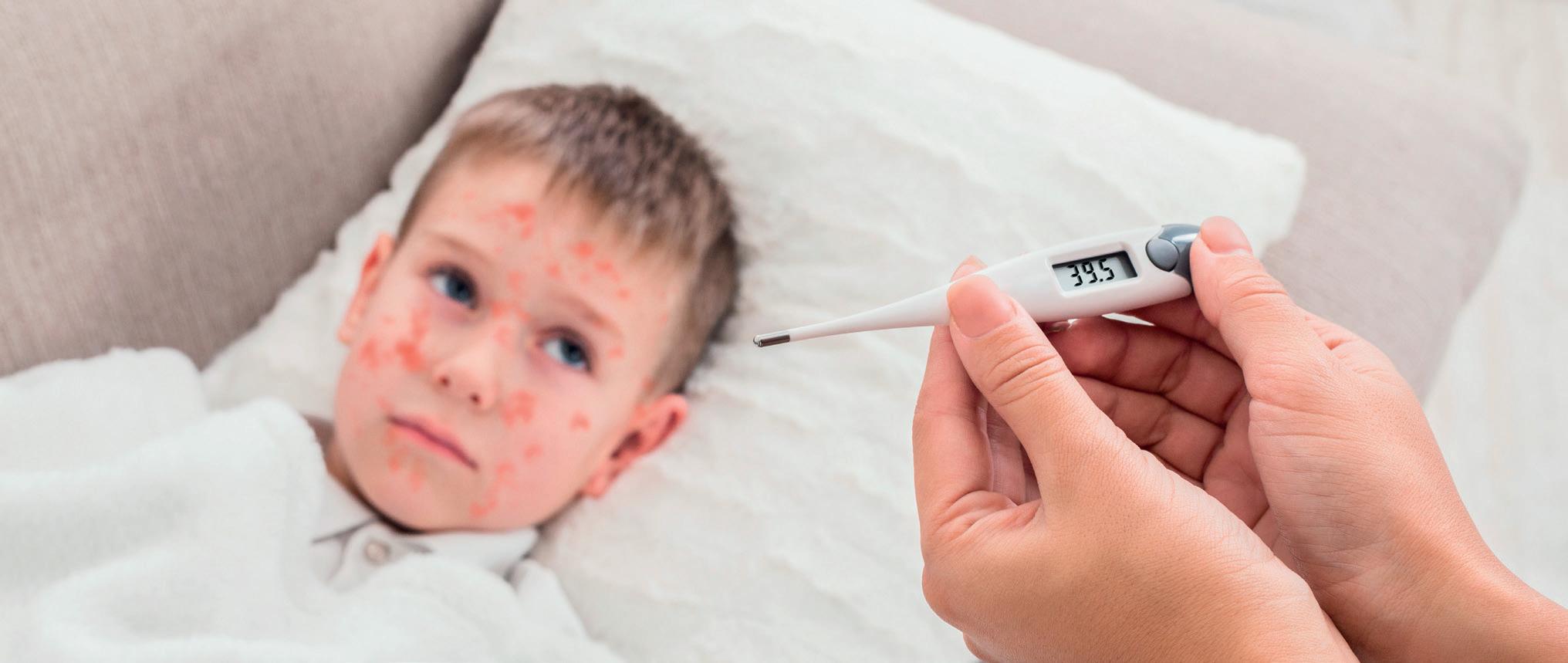
essential to protect our children and young people by making an appointment at the GP surgery and getting vaccinated.”
Measles is an infection that spreads very easily and can cause serious problems in some people. Having the MMR vaccine is the best way to prevent it. Measles usually starts with cold-like symptoms, followed by a rash a few days later. Some people may also get small spots in their mouth. The first symptoms of measles include:
h A high temperature
h A runny or blocked nose
h Sneezing
h A cough
h Red, sore, watery eyes
h Spots in the mouth
Small white spots may appear inside the cheeks and on the back of the lips a few days later, and usually last a few days. A rash usually appears a few days after the cold-like symptoms, starting on the face and behind the ears before spreading to the rest of the body. The spots of the measles rash are sometimes raised and join together to form blotchy patches. They’re not usually itchy. The rash looks brown or red on white skin but may be harder to see on brown and black skin.
It’s very unlikely to be measles if you’ve had both doses of the MMR vaccine or you’ve had measles before. Ask for an urgent GP appointment or get help from NHS 111 if:
h You think you or your child may have measles
h Your child is under 1 year old and has come into contact with someone who has measles
h You’ve been in close contact with someone who has measles and you’re pregnant or have a weakened immune system
h You or your child have a high temperature that has not come down after taking paracetamol or ibuprofen
h You or your child have difficulty breathing – you may feel more short of breath than usual
h Your baby or young child is not feeding well, or taking less feeds or fluids than usual
h You or your child are peeing less than usual (or your baby has fewer wet nappies)
h You or your child feels very unwell, or you’re worried something is seriously wrong
Measles can spread to others easily. Call your GP surgery before you go in, as they may suggest talking over the phone rather than risking spreading infection. You can also call 111 or get help from 111 online.
Measles usually starts to get better in about a week. After seeing a GP, there are things you can do to help ease the symptoms and
reduce the risk of spreading the infection. It can help to:
h Rest and drink plenty fluids, such as water, to avoid dehydration
h Take paracetamol or ibuprofen for a high temperature
h Give your child paracetamol or ibuprofen if they’re distressed or uncomfortable –check the packaging or leaflet to make sure the medicine is suitable for your child, or speak to a pharmacist or GP if you’re not sure
h Use cotton wool soaked in warm water to gently remove any crusts from your or your child’s eyes
Stay off nursery, school or work for at least four days from when the rash first appears. Avoid close contact with babies and anyone who is pregnant or has a weakened immune system.
Measles is spread when an infected person breathes, coughs or sneezes. You’re infectious from when you first have symptoms (around four days before the rash appears) until four days after you get the rash.
There are things you can do to reduce the risk of spreading or catching measles.
h Wash your hands often with soap and warm water
h Use tissues when you cough or sneeze
h Throw used tissues in the bin
h Don’t share cutlery, cups, towels, clothes, or bedding »








Measles can lead to serious problems if it spreads to other parts of the body, such as the lungs or brain.
Problems that can be caused by measles include:
❖ Pneumonia
❖ Meningitis
❖ Blindness

❖ Seizures (fits)





Call 999 or go to A&E if you or your child has measles and:
Has a seizure (fit)


Has severe di iculty breathing – you’re gasping, choking or not able to get words out (babies may make grunting noises or their stomach may suck under their ribcage)


Your child is limp, floppy or not responding normally – their head may fall to the side, backwards or forwards, or they may find it di icult to li their head and focus on your face


These problems are rare, but some people are more at risk. This includes babies and people with weakened immune systems. If you get measles when you’re pregnant, it could harm your baby, causing miscarriage or stillbirth, premature birth, or low birthweight. It’s important to get medical advice if you’re pregnant and have been in close contact with someone who has measles.




Are unable to stay awake – cannot keep their eyes open for more than a few seconds



Has a rash that does not fade when you press a glass against it
Has a sti neck, or find light uncomfortable or painful








Suddenly become confused – your child may be very unsettled, behaving di erently, or crying non-stop












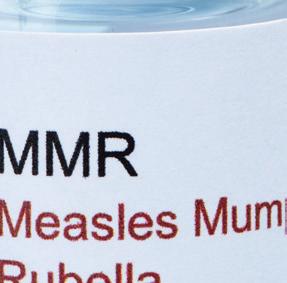



Do not drive to A&E. Ask someone to drive you or call 999 and ask for an ambulance. The MMR vaccine can prevent measles. It also protects you from mumps and rubella. The MMR vaccine is o ered to all children in the UK. Two doses can give lifelong protection against measles, mumps, and rubella. Ask at your GP surgery if you’re not sure you or your child have had the vaccine. They can give it for free on the NHS. ■

















When Katie was just two and a half years old, she became severely ill with tuberculous (TB) meningitis. This is her story.
Meet Katie. She’s a bright and bubbly 19-year-old from Lincolnshire who loves children and animals, enjoys trampolining, horse riding and public speaking, and would love to have a family of her own one day. Her mum, Sarah, her dad, Martin, and her two siblings, Oscar and Jessica, love her dearly.
And yet, Katie’s engaging and friendly nature conceals a daily struggle.
When she was just a year old, Katie was exposed to tuberculosis (TB) and, unbeknownst to her family, infected. Failings in the contact tracing procedure meant that Katie was never identified as a close contact or tested for TB – and that meant she never received the treatment she desperately needed. Sixteen months later, Katie was fighting for her life, her brain under attack from the TB infection, which had travelled through her bloodstream to the meninges, the membranes that protect the brain and spinal cord.
Sudden high fever
Stiff neck
Severe headache
Nausea or vomiting
Confusion or trouble concentrating
Seizures
Sleepiness or trouble waking
Sensitivity to light


In the weeks, months and years following Katie’s recovery, it slowly became apparent that she had suffered irreversible and life-changing damage to her brain.
Katie’s brain injury resulted in both physical difficulties, including balance issues, dyspraxia (a common disorder that affects movement and co-ordination) and left-sided hemiparesis (weakness on one side of the body), as well as neurological and cognitive deficits, including impaired executive function, problem-solving difficulties and behavioural difficulties.
She also underwent precocious (early) puberty at the age of just seven as a direct result of her injuries, and suffered damage to her hypothalamus, the area of the brain responsible for appetite control and satiety signals. This has led to a lifelong struggle with weight management and obesity. In addition, she lost the majority of her sight which, despite some initial improvements, mean that she is now registered as partially sighted and sometimes walks with a white cane. Sadly, this leaves her vulnerable to discrimination and abuse; she once had her phone stolen at a café by thieves who marked her out as an easy target.
Katie’s brain injury has had wide-reaching effects that affect every aspect of her life. Due to the extent of her sight loss and cognitive deficits, her independence is sadly limited at a time when most children are flying the nest, excited to start their adult lives.
Katie’s poor eyesight means that she struggles to do things on her own, and feels understandably stressed when navigating new and unfamiliar locations. Reading and writing is a huge effort, as she needs special tools and large fonts to make out the words clearly. Trips and falls are common as it’s not easy for Katie to see obstacles and trip hazards. Even getting a driver’s license, the dream of many teenagers craving independence, is out of reach for Katie.
Intensive physiotherapy as a child helped improve Katie’s strength and stability, but she still has issues with balance and coordination. Her frequent trips and falls, a result of dyspraxia as well as her sight loss, have knocked Katie’s confidence at times, and she’s especially prone to falls when she’s tired or stressed. She can find it tough to balance when reaching for objects in high or low places and has to hold on to a wall or banister when going up or down the stairs.
Katie’s brain injury means that she has developmental and cognitive disabilities and will need lifelong care and supervision. As she has shortterm memory issues, Katie’s mum and dad have to prompt her to do the simplest of tasks, like clean her teeth and look after her daily hygiene needs.


Without this constant encouragement guidance, Katie doesn’t have the ability or motivation to get things done on her own, and decision-making is difficult without parental guidance. Katie’s parents help her remember things by writing down tasks on her iPad, but she still needs regular supervision to ensure she has ticked things off her list.
Her brain injuries have impacted Katie’s ability to problem-solve, so she finds it hard to work out how to do things that fall outside her regular routine. For example, when her usual ticket machine was broken, she couldn’t work out a solution that might seem obvious to most of us (i.e., to use a different machine).
Most worrying for her parents and medical team, however, is Katie’s lack of control and impulsivity around food (caused by damage to her hypothalamus). Her brain injury means she’s struggled with weight management and obesity all her life. Although she knows all about healthy eating and what she needs to do to lose weight, she is simply unable to put this knowledge into practice when food is around; her parents have to meticulously plan her food and organise her eating as she finds it difficult to make healthy selections consistently. Sadly, this means that Katie is at high risk of developing type 2 diabetes and other obesity-related health issues, and she might need weight loss surgery in the future if she can’t lose the weight by herself. Katie will need lifelong support from her parents, dieticians and personal trainers to ensure she stays as healthy and happy as possible.
Despite the daily obstacles she faces, Katie’s story is one of resilience, determination and bravery. With the unwavering support of her mum and dad and the expert team surrounding her, she continues to press forward. Her brightness of spirit and zest for life touch everyone she meets.
Sadly, Katie’s complex needs have taken a financial toll on her mum and dad, who have at times struggled to make ends meet due the cost of looking after her.
So, with a view to ensuring Katie’s long-term health, happiness and safety, Sarah and Martin turned to the specialist Medical Negligence lawyers at Tees Law. The legal team, led by department head Janine Collier, helped the family reach a settlement designed to provide Katie with the lifelong medical care, therapy and support she will need to maximise her independence and quality of life.
The settlement means that she’ll be able to access adaptive aids and equipment, accommodation, medical treatment, therapies, holidays and leisure activities, and simply enjoy life like any other young woman her age.
Janine, who represented Sarah and Martin in their quest to achieve justice
for Katie, says: “These completely avoidable injuries have not only transformed Katie’s life, but the lives of her mum and dad, her siblings, and their extended family. Quite apart from her physical and cognitive disabilities, the sheer cost of caring for a young woman like Katie is always tough. This settlement can’t change or in any way make up for what has happened to Katie; it can, however, help to deliver her the best possible quality of life as she moves into adulthood.”
For Katie’s parents, the settlement has come as a huge relief. They said: “Although Katie’s case has been extremely long and at times very difficult for us as a family, Tees Law has kept us informed throughout and we have always found them friendly and reassuring.
At times, we felt so anxious and upset by the correspondence we received from the Defendant and the terminology that was used. Then we would speak to the lawyers at Tees and they would know exactly what to say to put our minds at ease.
Katie’s case has always been about securing her future and, now it is settled, we can finally rest assured that Katie will be cared for when we are no longer around. Without the support we have received from Tees, we would not be in this position.”
Tees is a major regional law firm with offices across Hertfordshire, Essex and Cambridgeshire that looks after clients across England and Wales. The firm’s Medical Negligence department has earned a stellar reputation across the industry, and has been rated as a Tier 1 practice by the respected legal directory, The Legal 500.
Tees truly understands the devastating impact that medical negligence can have, and will leave no stone unturned when fighting for the justice our clients so desperately need.
We offer support with a wide range of medical negligence claims, including brain injury, amputation, spinal injury, birth injury, delayed or misdiagnosed cancer, and many more.
Call our team on 01279 704 937



What do you do when something goes wrong with your child’s health care? It pays to have the help of an expert in medical negligence

Whether you are dealing with the overworked and underfunded NHS, or with private health care services, you still expect and deserve the best in health care. In most cases, people are happy with their health outcomes – but what do you do when something goes wrong?
Particularly in cases involving children, cases of medical or clinical negligence can be particularly distressing. Many of us
will have read about the case of 13-yearold Martha Mills, who died from sepsis in 2021, having been treated at King’s College Hospital, London, due to a failure to escalate her to intensive care and after her family’s concerns about her deteriorating condition were not responded to.
As a result the NHS has announced that Martha’s Rule, the right to bring in an independent team for an second opinion in cases where a patient’s health is deteriorating. The rule is being rolled out
initially at 143 sites. NHS national patient safety director and senior responsible officer for Martha’s Rule, Dr Aidan Fowler, said: “Working closely with Martha’s parents and colleagues across the NHS over the last few months on this rollout, I am in no doubt this programme will deliver clear change and it has been so encouraging to see how many hospitals have shown interest in being part of delivering these all-important patient safety measures this year. »
“With new processes that enable both patients and staff to raise concerns if they see someone’s condition worsening, and the inclusion of patients and their loved ones’ insights in medical records, these measures can help us better identify and manage deterioration as part of wider work, which is a key priority for us and will no doubt lead to improvements in the care patients receive.”
According to NHS England, there are three proposed components of Martha’s Rule:
h If a member of staff working within an NHS trust has concerns about a patient, they must, at any time, be able to contact a critical care outreach team for a rapid review.
h All patients, their families, carers, and advocates must also have access to the same 24/7 rapid review from a critical care outreach team if they are worried
about a patient’s condition. They should be able to contact the outreach team ‘via mechanisms advertised around the hospital, and more widely’.
h In addition, the NHS must implement a structured approach in order to obtain information about a patient’s condition directly from the patient themselves and from their family on at least a daily basis. NHS England states that initially, this will cover all inpatients in acute and specialist trusts.
But what happens when something goes wrong with your or your child’s health care and you think you may be entitled to financial recompense?
Clinical negligence, or medical negligence cases incorporate a broad variety of medical issues. Common ones include delays in medical diagnosis and
misdiagnosis, birth injuries, sub-standard surgical procedures, mental health negligence, faulty medical device claims and dental treatment negligence.
Medical negligence cases rarely go to court, as both parties will be keen to reach a settlement to avoid incurring the expense involved in undertaking court proceedings. Low-value claims (under £50,000) normally proceed to the County Court, whereas claims of a value above this will be heard in the High Court. But, in any case, you will want the advice of an experienced medical negligence legal practitioner to make sure your case is well supported.
There is a three-year limitation period in which an individual is required to issue court proceedings, starting from the date of the negligence or since the individual has become aware of the harm. Once proceedings are issued, parties exchange evidence and are encouraged to reach a


settlement in the interim before court. Complex medical negligence cases can take years to settle.
A child under the age of 18 cannot make a claim on behalf of themselves, so an adult would have to raise a claim on the child’s behalf.
A child may suffer from negligent treatment resulting in any kind of serious illness or injury. Paediatric negligence claims are not limited to treatment received from a specialist; a child may have suffered negligent treatment from a GP, a midwife or any other healthcare professional.
However, there are some kinds of clinical negligence which more commonly affect children, such as misdiagnosis or delayed diagnosis – failure to correctly identify and treat fractures or chronic illnesses such as asthma, epilepsy and diabetes; late diagnosis of serious conditions such as meningitis and septicaemia; birth injuries resulting in conditions such as cerebral palsy and Erb’s
palsy; or problems arising from negligent medical treatment of their mother during pregnancy.
Some medical negligence test cases have ruled in cases of ‘wrongful birth’ –where a mother who gave birth to a child with haemophilia and autism brought a case against her GP who had caried out blood tests – on patient confidentiality, where a mother brought a case against the NHS for not informing her that her father had inheritable Huntingdon’s disease – and on medical negligence, where an inexperienced junior doctor’s failure to give a child antibiotics resulted in permanent brain damage.
This last case is particularly interesting for the closing remarks made by Lord Justice Jackson, who said: “I must acknowledge that junior hospital doctors work long hours under considerable pressure. They are often involved in life and death decisions. The pressures can be even
The total number of all reported written complaints in the NHS in 2022-23 was 229,458, an increase of 3,888 (1.7%) from 2021-22 (225,570). From 1st July 2023 the way members of the public make a complaint about primary care services to the commissioner was changed. Rather than contacting NHS England, complaints are to directly to the local integrated care board (ICB). Members of the public will still be able to make a complaint to the provider.
greater when working all night…If mistakes are made, it is devastating for the patient and it is expensive for the NHS Trust.
“Doctors, however, are human. Even good and conscientious doctors may, from time-to-time, fall short. This is not a reason to lose heart or (even worse) to abandon medical practice. Those who have learned from past mistakes often have even more to offer.”
A Patient Advice and Liaison Service – or PALS – is usually your first point of contact when making an informal complaint directly to the NHS. They can also give you advice on the procedure for making a more formal complaint.
Should you be unsatisfied with the results of your complaint and have to resort to legal action, you may be entitled to two kinds of damages for your injurygeneral damages for pain, suffering and loss of amenity, or special damages to cover actual financial losses and expenses arising from your injury such as lost earnings, costs of caring for an injured person, costs of physiotherapy and so on.
More serious injuries, resulting in lifelong incapacity affecting someone’s ability to work and to care for themselves, will attract the largest awards. ■

In a world first, a young patient at Great Ormond Street Hospital has received a new device fitted in his skull to reduce epileptic seizures.
The device was fitted as part of the CADET Project, (Children’s Adaptive Deep Brain Stimulation for Epilepsy Trial), using a cranially-mounted Direct Brain Stimulation device called the Picostim with software called DyNeuMo-1, manufactured by Bioinduction Ltd. The neurostimulator, which sends electrical signals deep into his brain, has reduced 13-year-old Oran Knowlson’s daytime seizures by 80 percent.
Surgery was carried out in October last year when Oran was 12. Oran, from Somerset, has Lennox-Gastaut syndrome, a treatment-resistant form of epilepsy which he developed at the age of three. Since then he has suffered seizures ranging from two dozen to hundreds every day. At their worst the seizures can be life-threatening, with Oran losing consciousness and stopping breathing, requiring emergency medication to resuscitate him.
The Picostim neurotransmitter is made by UK company Amber Therapeutics. The device, which emits a constant pulse of current, aims to block or disrupt the abnormal electrical signals which trigger epilepsy seizures. Deep brain stimulation has been tried before for childhood epilepsy, but until now neurostimulators were placed in the chest, with wires running up to the brain. As part of the trial, three more children with Lennox-Gastaut syndrome will be fitted with the deep brain neurostimulator.
The NHS has reached a price deal with manufacturer Vertex for its Cystic Fibrosis drugs Kaftrio, Symkevi and Orkambi. The drugs were approved for use in the UK in 2019, but subsequently their roll-out was delayed while price negotiations took place. Other countries reportedly paid Vertex’s original price, while hundreds of doses of the drug were destroyed as they went out of date. The UK regulator NICE claimed the drugs were too expensive last year.
Now further discussions have led to a deal between NHS England and Vertex, with NICE’s independent committee using an updated method of appraising medicines, which gives extra weight to health benefits for treating more severe diseases like cystic fibrosis. It is one of the first times this has been used for noncancer medicines, recognising the severity of CF.
Vertex is also working with the NHS authorities in Scotland, Wales and Northern Ireland and it’s expected they will make similar access agreements shortly.
Cystic fibrosis is an inherited condition that causes sticky mucus to build up in the lungs and digestive system. This causes lung infections and problems with digesting food. In the UK, most cases of cystic fibrosis are picked up at birth using the newborn screening heel prick test.
While there is no cure yet for cystic fibrosis, people with CF are living longer, healthier lives than ever before. In fact, babies born with CF today are expected to live into their mid-40s and beyond. Life expectancy has improved so dramatically that there are now more adults with cystic fibrosis than children.


Up to 1,000 children in the UK are living with a hereditary condition called hypertrophic cardiomyopathy (HCM), which causes thickening of the heart muscle. There is currently no cure and, although rare, it can cause sudden death in children and young people.
Research results published in the journal Circulation: Genomics and Precision Medicine show that the new test, measuring seven proteins in the blood, can successfully act as a marker for HCM. The test can also identify four proteins which may indicate cases where there is a greater risk of sudden death, and there are now hopes this could be developed for use across the NHS to speed up diagnosis and treatment for children with the condition.
Professor Juan Pablo Kaski, from the UCL Institute of Cardiovascular Science and Great Ormond Street Hospital, said: “Hypertrophic cardiomyopathy is the commonest cause of sudden death in children and teenagers. Although our ability to diagnose the condition has improved considerably in the last few years, many of the tests we use are expensive and may not be routinely available throughout the world. The development of a simple blood test to both detect the disease and identify high-risk children with HCM, if confirmed and validated, could have a major impact on the care of children with this condition.”
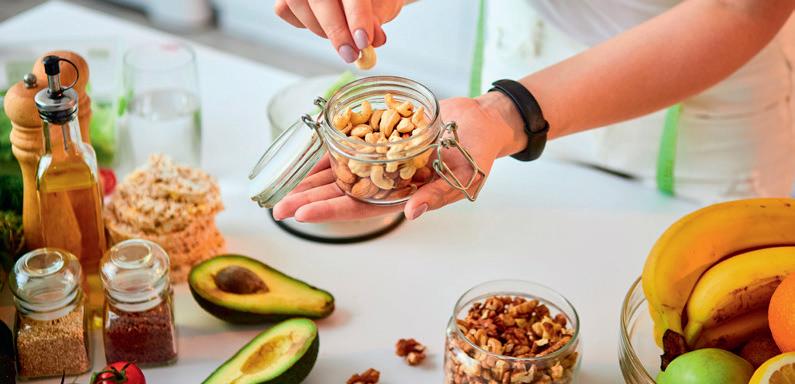
A great blend of some of the healthiest nuts, including almonds, cashews, walnuts, and Brazil nuts. Premium Mixed Nuts are packed with nutrients, protein, and fibre, and are a perfect snack food and healthy alternative to sweet treats. www.grapetree.co.uk/premium-mixed-nuts-1kg

Foco canned beverages are made with premium quality Asian fruits, herbs and nutritious vegetables. Exotic and refreshing, this range of Thai soft drinks are exported around the world and are rapidly gaining popularity in the UK. chadhaorientalfoods.co.uk/brands/foco

For over 180 years, BRAND’S® Essence of Chicken is the Original Essence of Chicken. It is made of an all-natural extract of fine quality chicken hygienically processed under high temperatures. Fat-free and cholesterol-free with no added artificial chemicals or preservatives, the goodness of BRAND’S® Essence of Chicken is sealed airtight and packaged in an easily digestible form. brandsessencedirect.co.uk
Choosing the right nursery for your child can be a challenge. What do you look for and how can you make sure that your child will be well cared for?












Choosing the right nursery for your child is a significant decision that impacts their early development, social skills, and overall well-being.
The EYFS (Early Years Foundation Stage) statutory framework covers children from birth to the age of five.
You are under no legal obligation to send your child to nursery - keep them at home if that’s what suits you, or get an all-day childminder if you have to go out to work.
If that doesn’t suit you, and o en in the cases of single parents or where both parents go out to work, your choices are between playgroups or pre-school groups run in the community for a few hours a day, private nursery schools, or state nursery schools (sometimes the nursery unit of a primary school).
Gill Jones, Busy Bees Group Chief Quality O icer, says: “Choosing the right nursery for your child can feel daunting – how can you be sure this place will give your child everything they need, away from your care? Firstly, it’s helpful if you can get recommendations from other parents who share your values. Don’t forget to check Ofsted reports, for a professional view of what the nursery does well.
“But most importantly, book a visit to your chosen centre. All good nurseries will welcome your questions and show you around. A good nursery will want to show you the rooms, so that you can see for yourself how well the sta care for and educate the children.
“And vitally, you will meet the people who will be caring for your child. You should also be o ered settling in sessions, where you can accompany your child and

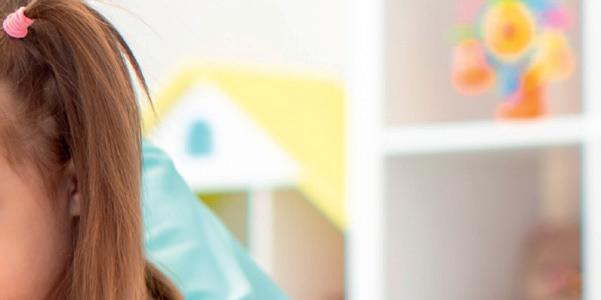


both receive reassurance that you’ve made a great choice.”
With the exception of workplace nurseries, your starting point to search online for nurseries (or other forms of childcare) with vacancies should be Gov.uk or Direct.gov. Your GP or health visitor may also know of nurseries in your area, plus there will be information in your local phone directory and library.
There are many factors to be considered to ensure that your chosen nursery provides a safe, nurturing, and stimulating environment, such as health and safety, activities, sta training, diet and nutrition, hygiene, sta -to-child ratio, and First Aid. All these must be taken into consideration to help you make an informed choice – of course location and convenience are important, but don’t make the mistake of just settling for the nearest nursery.
Among several others, you may come across some of these educational ideas, particularly in the private sector.
Montessori schools aim to develop the child’s whole personality and attach particular importance to the child’s appreciation of their surroundings.
Steiner schools aim to foster imagination and creativity; they don’t introduce formal education before the age of six, concentrating on creative play rather than the ‘three Rs’ from around four years old.
The Reggio Emilia approach to early years education puts children in the driver’s seat and sees them as curious individuals with the power and potential to develop and learn from their environment and the relationships they build with others.
Health and safety are paramount in any childcare setting. Ensuring that a nursery complies with the UK’s stringent health and safety regulations is crucial for your child’s well-being.
In terms of safety measures, the nursery should have secure entry and exit points to prevent unauthorized access.
Check if visitors are monitored. The building should be childproofed with safety gates and secure furniture. Fire safety procedures, including regular drills, should be well-established and clearly displayed.
Nurseries must conduct regular risk assessments to identify and mitigate potential hazards. These assessments should cover indoor and outdoor areas, equipment, and activities.
Ask to see recent risk assessment reports to ensure thoroughness and regularity.
Inquire about the nursery’s emergency procedures, including evacuation plans
in case of fire, how they handle natural disasters such as flooding, and their communication plan for informing parents during emergencies.
A nursery should provide a broad range of activities that cater to the development of cognitive, emotional, social, and physical skills.
In terms of educational activities: The curriculum should include a balance of structured learning and free play. Activities like storytelling, singing, and basic numeracy and literacy tasks are essential for cognitive development. Ensure that the nursery follows the Early Years Foundation Stage (EYFS) framework, which sets the standards for learning, development, and care for children from birth to five years old.
Creative play activities such as painting, drawing, and role-playing foster imagination and fine motor skills. Check if the nursery has dedicated areas for arts and crafts and provides diverse materials for children to explore their creativity.
Physical play is also crucial for developing motor skills and overall health. The nursery should have both indoor and outdoor play areas with age-appropriate equipment. Activities should include running, climbing, and ball games, and there should be a variety of toys that encourage physical movement.
Social skills are developed through
interaction with peers. The nursery should encourage group activities that promote teamwork, sharing, and empathy. Look for evidence of structured group activities and opportunities for children to play together.
The qualifications and training of nursery staff are critical in providing highquality care and education and the EYFS statutory framework explains more about requirements for group and school-based providers - you can find it on the website at assets.publishing. service.gov.uk .
Ongoing training, known as Continuous Professional Development (CPD), is essential for staff to stay updated with the latest childcare practices and educational methodologies.
Ask if the nursery invests in CPD opportunities for its staff, including training in first aid, safeguarding, and child development.
Experienced staff are better equipped to handle various situations and provide a nurturing environment. Inquire about the average tenure of staff members and look for nurseries with low staff turnover, as this often indicates a positive working environment and stability for the children. Ensure all staff members have undergone thorough background checks, including DBS (Disclosure and Barring Service) checks, to guarantee they are suitable for working with children. »


Proper diet and nutrition are vital for your child’s growth and development. Nurseries should provide balanced and nutritious meals and snacks. The nursery should accommodate special dietary needs, such as allergies, intolerances, or cultural preferences. They should have clear policies on managing food allergies, including steps to prevent cross-contamination.
The nursery should offer a menu that includes a variety of fruits, vegetables, proteins, and whole grains. Meals should be prepared in a hygienic environment and align with the NHS Eatwell Guide.
Mealtimes should be structured and supervised, ensuring that children eat properly and learn good table manners. The environment during meals should be positive and relaxed, encouraging children to enjoy their food.
Nurseries often involve parents in menu planning or provide regular updates about the food being served.
Maintaining high standards of hygiene is crucial in a nursery to prevent the spread of illness and ensure a clean environment for children. The nursery should have regular cleaning schedules for all areas, including playrooms, sleeping areas, and bathrooms. Toys and equipment should be cleaned frequently to prevent the spread of germs.
To encourage good hand hygiene practices among staff and children, handwashing stations should be easily accessible, and children should be taught the importance of washing hands before meals, after using the bathroom, and after playing outside.
The nursery should have a clear sickness policy to prevent the spread of contagious diseases. This policy should include guidelines on when children should stay home and how long they should remain at home after being sick.
If your child is in the process of toilet training, ensure the nursery has appropriate facilities and supportive practices.
Adequate supervision is essential for safety and personalized care. The staffto-child ratio varies depending on the age group.
h Babies (Under 2 years): The recommended ratio is 1:3, ensuring that each caregiver is responsible for no more than three babies. This allows for individualized attention and proper care
h Toddlers (2 to 3 years): The ratio should be 1:5, providing a balance of supervision and independence as children start to explore more and engage in group activities
h Preschoolers (3 to 5 years): For older children, the ratio can be 1:8 (or 1:13 if there is a person with Qualified Teacher Status, Early Years Teacher Status, or
another approved Level 6 qualification working directly with children, and at least one other member of staff holds an approved Level 3 qualification)
Ensure that the nursery adheres to these staff ratios consistently throughout the day, including during peak hours and during staff breaks.
Accidents can happen, so it is crucial that nursery staff are trained in first aid and that appropriate first aid measures are in place.
Ensure that several staff members are trained in pediatric first aid. This training should be refreshed regularly to ensure that skills are up to date.
The nursery should have well-stocked first aid kits readily available in various locations, including classrooms, play areas, and outdoor spaces. Check that these kits are regularly inspected and replenished.
The nursery should have a clear procedure for reporting and recording accidents. This should include informing parents promptly about any incidents involving their child and documenting the details for future reference.
Ensure that the nursery has up-to-date emergency contact information for all children. Staff should know the procedures for contacting emergency services and parents in case of serious incidents. ■





















Every parent wants to give their child the best start in life, and choosing the right nursery can make all the difference.
Busy Bees is the UK’s leading early years educator, with 40 years’ experience providing children with a safe, nurturing environment where they can develop, learn and play.
We have almost 400 specially-designed nurseries across the UK and Ireland, but we know every child is unique and our care is tailored to your child’s individual needs.
Our story starts back in the 1980’s, when three families decided there was an opportunity to make childcare better, with a range of rich learning opportunities as well as providing a warm, caring home from home environment.
Today, our trusted and experienced teams work to nurture, develop and encourage every child through their early years, leading to happy, sociable, confident and independent children, giving them a head start when they move onto school.
Our size means there is a Busy Bees nursery close to you and that we can invest in creating state-of-the-art facilities with all the latest equipment and amenities.
And we know that we have to help protect our amazing planet for the next generation, so everything we do is designed to minimise our impact on the environment.
Choosing a nursery is a big decision, but it doesn’t have to be stressful.
Here are our five top tips:
Start early - Nursery waiting lists can vary a lot depending on where you live. You should start your research well before your desired start date.
See for yourself – Book a tour and meet the team. Is there a happy atmosphere? Are the staff caring and enthusiastic? What about the facilities, like outdoor areas?
Live and learn - A nursery isn’t just a place to stay and play. It should offer a comprehensive range of educational activities, tailored to your child’s age and interests.
What’s on the menu? - A healthy diet is important for learning and development. Is the food freshly prepared and nutritionally balanced?
Stay in touch – Will the nursery keep you informed about your child’s progress? Most nurseries will have a digital platform to share updates on things like naps, mealtimes, development and more.


The Early Years Foundation Stage framework (EYFS) is a set of rules laid out by the Government for childcare providers, including nurseries.
It lays out the standards that nurseries in England must meet to make sure children up to the age of five are kept healthy and safe, and there are similar frameworks in Scotland, Wales, Northern Ireland.
It includes the services childcare settings must deliver to ensure that children learn and develop well, so that they have the knowledge and skills they need to start school. In that way, it’s a bit like the national curriculum for schools, except for nurseries.
The EYFS includes seven areas of learning:
• Communication and language
• Personal, social and emotional development
Learn more about UP!















• Physical development
• Literacy
• Mathematics
• Understanding the world
• Expressive arts and design
Because we recognise how important these early years are in every child’s development, we’ve developed our own enhanced set of standards that go above and beyond the EYFS in each of the seven areas. We can do that because all our nursery teams receive enhanced training and development courses, so they are equipped to give every child the very best learning experience.
We have worked with early years experts to create bespoke programmes for Makaton sign language, communication, dance and yoga, among other areas, which are available exclusively to Busy Bees educators and parents. All backed up by our internal quality assurance programme, which ensures every centre is meeting our standards of excellence.
Our support for learning doesn’t stop there. We’ve developed a first of its kind, digital learning platform, UP! which gives parents exclusive access to essential guidance, resources, and information on how to deliver effective learning experiences for your children at home too.
UP has a wealth of bespoke and interactive activities, all designed to help you work in partnership with us to unleash your child’s potential.
Every child needs a nutritionally balanced diet to help aid their growth and development.

Each Busy Bees nursery has a dedicated on-site chef preparing fresh food every day and our menus are accredited by NHS nutritionists, so you can be confident every recipe is healthy as well as tasty.



We serve a wide range of diverse dishes, from childhood favourites to meals inspired by cuisines from around the world, including Italian, Indian and Mexican.



Every day children receive a healthy breakfast and a mid-morning snack, and every lunchtime includes a main course and either a starter or dessert.


Then there’s an afternoon snack and a light tea before home time.

And we can support your child’s weaning journey as they make the switch to solid foods.



We use fresh, seasonal, and – wherever possible –local ingredients, and there’s always a vegetarian option available, as well as catering for specific dietary needs.



Our chefs pay special attention to reducing salt and sugar, and our menus are published online, so you can see what treats we are serving up in nursery, as well as keep track of what your child has been eating throughout the day via our parent app.








How about a starter of onion bhaji and raita dip or hummus with pitta bread and carrot dippers? Followed


How about a starter of onion bhaji and raita dip or hummus with pitta bread and carrot dippers? Followed by vegetarian toad-in-the-hole or Tex Mex burritos? And we know you could never turn down dessert! Yoghurt and mango coulis or pear and ginger loaf anyone? and sugar, and our menus are published online,















12th accreditation of working alongside the NHS







Giving your child the best start in life means making sure they are as ready as they can be to start school.

We work hard to support this transition, making sure every child is ready to step up to the next stage of learning with confidence.

We know that starting school comes with a number of emotional and practical challenges for children and their families, but we have years of experience helping you to make the transition as smooth as possible.
That includes helping children’s socialisation, so they can enjoy interacting with other children and adults.
Learning to communicate and connect with others is a vital life skill that starts in early childhood, and developing children’s confidence, self-esteem and social skills is fundamental to this process.


We love serving delicious healthy meals in our nurseries, and we want to support families to eat well at home too.
That’s why we share our regular free recipe books, packed with seasonal meals that are developed by our team to be nutritionally balanced and full of flavour.
Our latest Spring and Summer edition is available to download now, with recipes you can enjoy cooking together.
Scan the QR code to download our Spring and Summer 2024 Recipe Book









Our nurseries support this through structured social interaction with other children and nursery care teams, as well as group activities and play. This helps our children to communicate with confidence, resolve conflicts, regulate their emotions and build healthy relationships.
Toilet training is another important milestone in a child’s early years.
This takes time and practice, and every child is different, but your child’s key person in nursery is ready to support you both through this journey, using our innovative new Toilet Training Scheme.
It’s all about helping your child become more independent, so they can start school with a spring in their step.

With nearly 400 nurseries in the UK and Ireland, there’s a Busy Bees that’s perfect for you.
You’re welcome to come and visit us, meet the team and have a chat.
There’s lots to see and do. We’d love to show you around and answer any questions you might have.
Give us a call on 0330 333 8133 or visit busybeeschildcare.co.uk any time to book your visit.
See you soon!













Looking after a sick child can be worrying and exhausting. We look at the advice from the NHS

Looking after a sick child can be an exhausting and worrying business. Many parents need to go out to work while their child is at nursery or school, so having them at home ill
causes disruption to normal routines. Of course, the greater worry is for the health of the child, and conflicting advice on health care from medical sources or family doesn’t help.
No-one wants to take risks with the health of a child, while at the same time it can be an issue calling on the services of the over-stretched NHS. So what is the best advice for basic care of sick children? »
The NHS says that if your child is ill, the most important thing to do is to listen to them. If they say they don’t need to be in bed, they probably don’t. They might feel better on the sofa with a blanket or duvet. Whether they’re in bed or on the sofa, the following will help them feel more comfortable.
h Keep the room airy without being draughty. If the room is too warm, they’ll probably feel worse
h Give your child plenty to drink. For the first day or so don’t bother about food unless they want it. After that, start trying to tempt them with bits of food and encouraging them to have nutritious drinks like milk
h Try to give your child time for quiet games, stories, company and comfort
Sick children get very tired and need plenty of rest. Encourage your child to doze off when they need to, perhaps with a story read by you or on a mobile device or CD.
Never fall asleep with a sick baby on the sofa with you, even if you’re both exhausted. This increases the chances of sudden infant death syndrome (SIDS).
Looking after a sick child, even for a couple of days, can be exhausting. Get rest and sleep when you can, and try to get somebody else to take over every now and then to give you a break.
Your health visitor, practice nurse, nurse practitioner, GP and pharmacist can all give you advice on how to treat your child’s illness.
The GP can treat your child and prescribe medicines. Some health visitors, nurses and pharmacists can also diagnose illness and prescribe medicines for your child.
If your child is ill, you can try your local pharmacy first. They’ll tell you if your child needs to see a GP. If your child has signs of serious illness, contact your GP surgery directly or take them straight to the A&E
Children do not often need antibiotics. Most childhood infections are caused by viruses. Antibiotics only treat illnesses caused by bacteria, not viruses.
If your child is prescribed antibiotics for a bacterial infection, they may seem better after two or three days. But it’s important to always finish the whole course to make sure all the bacteria are killed off. If you do not finish the whole course, the infection is more likely to come back. It also increases the risk of the bacteria becoming resistant to antibiotics. Antibiotics work best if they are given at regular intervals. Giving them to your child at the same times each day may help you to remember.

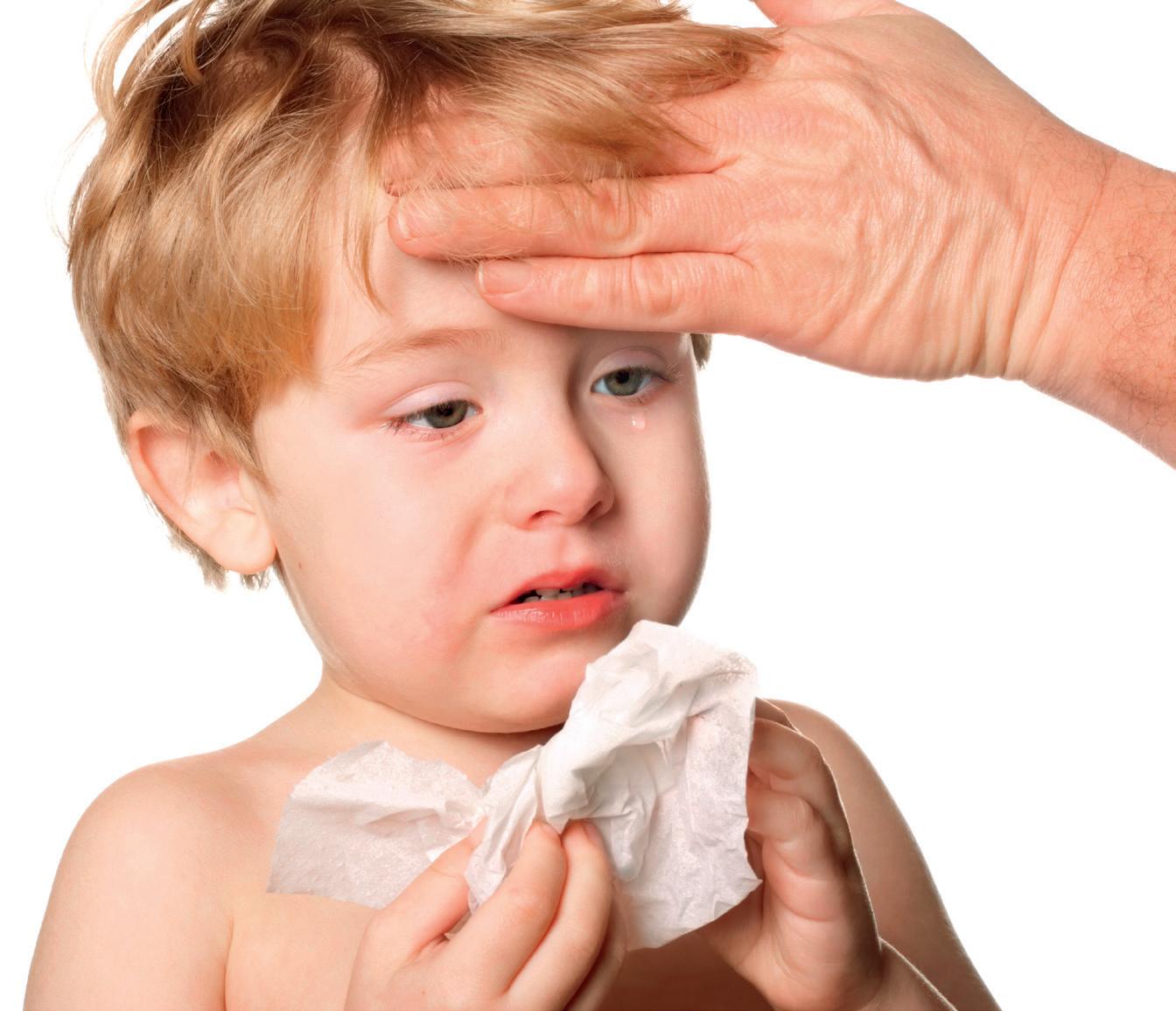
department of your local hospital.
Most GP surgeries are very supportive towards parents of small children. Some will fit babies into surgeries without an appointment or see them at the beginning of surgery hours. Many GPs will also give advice over the phone.
If you find it difficult to contact your doctor or get to the surgery, you can call NHS 111 for medical advice, 24 hours a day.
Diarrhoea and vomiting are common in children and babies, as well as in adults. The most common causes of diarrhoea and vomiting are stomach bugs and food poisoning. In either case, symptom should stop in a few days. The advice is the same if you have diarrhoea and vomiting together or separately. Diarrhoea and vomiting can usually be treated at home. The most important thing is to have lots of fluids to avoid dehydration.
DO
✔ Stay at home and get plenty of rest
✔ Drink lots of fluids, such as water or squash – take small sips if you feel sick
✔ Carry on breast or bottle feeding your
baby – if they’re being sick, try giving small feeds more often than usual
✔ Give babies on formula or solid foods small sips of water between feeds
✔ Eat when you feel able to – it may help to avoid foods that are fatty or spicy
✔ Take paracetamol if you’re in discomfort – check the leaflet before giving it to your child
✘ Do not have fruit juice or fizzy drinks –they can make diarrhoea worse
✘ Do not make baby formula weaker – use it at its usual strength
✘ Do not give children under 12 medicine to stop diarrhoea
✘ Do not give aspirin to children under 16
In adults and children, diarrhoea usually stops within five to seven days, and vomiting usually stops in one or two days. But diarrhoea and vomiting can spread easily, so stay off school or work until you’ve not been sick or had diarrhoea for at least two days. If you have a high temperature or do not feel well enough to do your normal activities, try to stay at home and avoid contact with other people
You can get treatment for some common childhood conditions, such as sore throat and earache, from a pharmacy without needing a GP appointment. The pharmacist will be able to recommend the best treatment for your child and prescribe medicine if they need it. You will not pay a prescription charge for children under 16.
✤ Always check the expiry date – if you have any medicines at home that are out of date or your child no longer needs them, take them to a pharmacist to dispose of safely.
✤ Never give your child medicines that have been bought or prescribed for someone else.
✤ Always keep medicines out of your child’s reach and out of sight.
✤ Ask a pharmacist about storing the medicine – some need to be kept in the fridge or out of direct sunlight.
until you feel better.
To help avoid spreading an infection:
h Wash your hands with soap and water frequently
h Wash any clothing or bedding that has poo or vomit on it separately on a hot wash
h Clean toilet seats, flush handles, taps, surfaces and door handles every day
h Do not prepare food for other people, if possible
h Do not share towels, flannels, cutlery or utensils
h Do not use a swimming pool until at least 48 hours after your symptoms stop »

A pharmacist can help with diarrhoea and vomiting. Speak to a pharmacist if:
h You or your child (over five years) have signs of dehydration, such as dark, smelly pee or peeing less than usual
h You’re an older person, have a weakened immune system, or have other health conditions that increase your risk of dehydration
h You need to stop diarrhoea for a few hours
They may recommend oral rehydration powder that you mix with water to make a drink medicine to stop diarrhoea for a few hours, like loperamide (not suitable for children under 12).
Call 999 or go to A&E if you or your child:
h Vomit blood or have vomit that looks like ground coffee
h Have green vomit (adults)
h Have yellow-green or green vomit (children)
h May have swallowed something poisonous
h Have a stiff neck and pain when looking at bright lights
h Have a sudden, severe headache
h Have a sudden, severe tummy ache
h Have blue, grey, pale or blotchy skin, lips or tongue - on brown or black skin this may be easier to see on the palms of the hands or soles of the feet
h Are having severe difficulty breathing, or taking lots of quick, short breaths
h Are confused or not responding as usual
Call 111 immediately if
h You are worried about a baby under 12 months
h Your child stops breast or bottle feeding while they’re ill
h A child under 5 years has signs of dehydration, such as fewer wet nappies
h You or your child (over 5 years) still have signs of dehydration after using oral rehydration sachets
h You or your child keep being sick and
cannot keep fluid down
h You or your child have bloody diarrhoea or bleeding from the bottom
h You or your child have diarrhoea for more than seven days or vomiting for more than two days
111 will tell you what to do. They can arrange a phone call from a nurse or doctor if you need one.
Medicines are not always needed for minor illnesses like coughs and colds in children.
If your child does need a medicine, it’s important they have one that’s right for their age and you know how to give it to them safely.
Paracetamol and ibuprofen are safe for treating pain in babies and children or a high temperature if they’re distressed or unwell. Both are available as liquid medicines for young children. It’s best to
choose a sugar-free version. Medicines that contain sugar can harm your child’s teeth.
Make sure you get the right strength for your child’s age and check the label for the correct dose. Or you can ask a pharmacist for advice. It’s a good idea to keep one or both medicines stored in a safe place at home.
You can give paracetamol to children aged two months or older for pain or a high temperature. You can give ibuprofen to children who are aged three months or older and who weigh more than 5kg (11lb).
Many GP surgeries, minor injury units, walk-in centres and pharmacies are equipped to deal with minor casualties, such as cuts or items trapped in the nose or ear. In this situation, ask a GP or NHS 111 for advice on where to go before you go to A&E.
It can be difficult to know when to call an ambulance and when to take your child to the accident and emergency department (A&E).
Call an ambulance if your child:
❖ Stops breathing
❖ Is struggling for breath (for example, you may notice them breathing fast, panting, becoming very wheezy, or see the muscles just under their ribcage sucking in when they breathe in)
❖ Is unconscious or seems unaware of what’s going on
❖ Has a cut that will not stop bleeding or is gaping open
❖ Will not wake up
❖ Has a fit for the first time, even if they seem to recover
Take your child to A&E if they have a leg or arm injury and cannot use the limb, or have swallowed a poison or tablets.
Always read the instructions carefully, or check with a pharmacist or doctor. If your child has asthma, get advice from a GP or pharmacist before giving them ibuprofen. Do not give your child ibuprofen if they have chickenpox or are dehydrated.
Do not give aspirin to children under 16 unless it’s prescribed by a doctor. It’s been linked with a rare but dangerous illness called Reye’s syndrome. If you’re breastfeeding, aspirin is not usually recommended as a painkiller. Ask your health visitor, midwife or GP for advice before taking it.
A high temperature (fever) is very common in young children. The temperature usually returns to normal within one to four days. A normal temperature in babies and children can vary slightly from child to child. A high temperature is 38C or more. If your child has a high temperature, they might:
h Feel hotter than usual when you touch their back or chest
h Feel sweaty
h Look or feel unwell
h Have a seizure or fit, called a febrile seizure
If your child or baby has a high temperature, you can usually look after them at home. The temperature should go down over one to four days. Use a digital thermometer, which you can buy from pharmacies and supermarkets, to take your child’s temperature. Call 111 or your GP surgery if your child is under three months old and has a temperature of 38C or more, is three to six months old and has a temperature of 39C or more, or has other signs of illness such as a rash, dehydration, of loss of appetite. Call 999 if symptoms include a stiff neck, cold hands and feet, blue or blotchy skin, a rash which does not fade when a glass is pressed against it, drowsiness, agitation, breathing difficulties or lack of response. ■
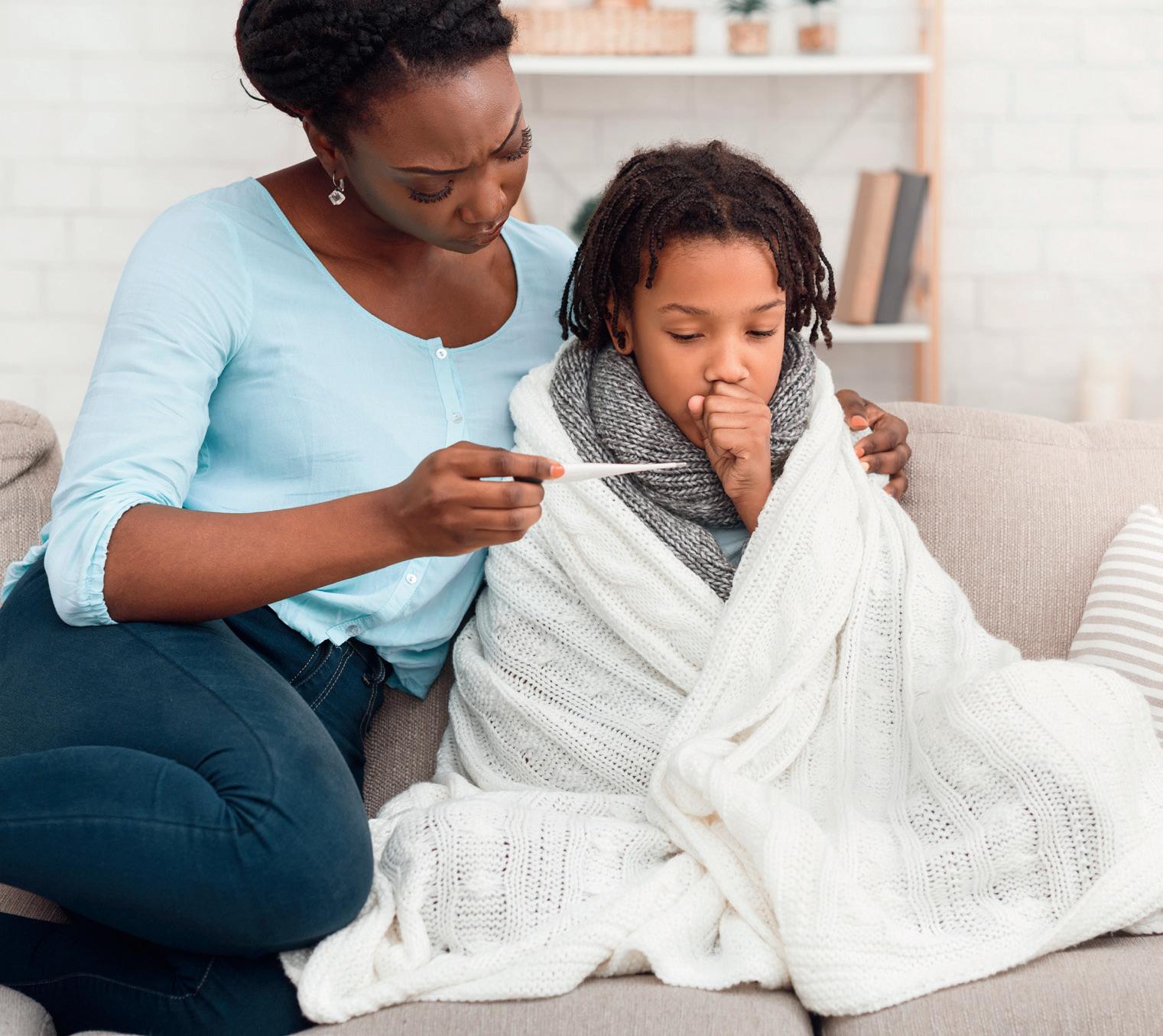



Teething can be a distressing time for babies and parents, so here are some top tips to get through the period without pain
Teething can be distressing for some babies, but there are ways to make it easier for them. Every baby is different, and you may have to try a few different things until you find something that works for your baby.
Teething can start at the age of around three months, but it’s most likely you’ll see the first tooth start pushing through your baby’s gum line at between four and seven months old. The first teeth to appear usually are the two bottom front teeth, known as the central incisors.
One of the signs that your baby is teething is that they start to chew on their fingers, toys or other objects they get hold of. Other symptoms can include irritability, disrupted sleep, swelling or inflammation of the gums, drooling, loss of appetite, rash around the mouth, mild temperature, diarrhoea, increased biting and gumrubbing and even ear-rubbing.
Comforting or playing with your baby can distract them from any pain in their gums, and gently rubbing their gums with a clean finger may also help.
If your baby is six months or older, you can give them healthy things to chew on, such as raw fruit and vegetables, and soft fruit like melon which can soothe gums. You could also try giving your baby a crust of bread or a breadstick.
Avoid any foods that contain lots of sugar, as this can cause tooth decay, even if your child only has a few teeth. It’s best to avoid rusks because nearly all brands contain some sugar. Always watch when your baby is eating in case they choke.
One popular way of soothing a teething baby is a teething ring. This gives them something to chew safely and may ease their discomfort. Some teething rings can be cooled first in the fridge, but you should
follow the timing instructions and never put a teething ring in the freezer, as it could damage your baby’s gums if it gets frozen. Do not tie a teething ring around your baby’s neck, as it may be a choking hazard.
Teething gels contain a mild local anaesthetic and are only available from pharmacies. Speak to a pharmacist for further advice. If your baby is in pain, you may want to give them a sugar-free painkilling medicine - paracetamol or ibuprofen can be given to relieve teething symptoms in babies and young children aged three months or older, but children under 16 years old should not have aspirin. Register your baby with a dentist as soon as their teeth start coming through, and start brushing your baby’s teeth with a suitable fluoride toothpaste as soon as their first milk tooth appears. ■









When you have a new baby, one of the most overwhelming things, apart from worrying about their health and safety, is the sheer amount of stu you need to buy to feed, clothe and care for them. Here’s some handy advice from the NHS on the basics.
Babies grow very quickly. All you need for the first few weeks are enough clothes to make sure your baby will be warm and clean.
You’ll probably need:
6 stretch suits (all-in-ones) for both day and night
2 cardigans, wool or cotton rather than




“Help!” – is probably your first response when you have to buy products for a new baby. Here’s some advice from the NHS on where to start






nylon, and light rather than heavy –several light layers of clothing are best for keeping your baby warm
6 vests

a shawl or blanket to wrap your baby in
a wool or cotton hat, mittens, and socks or bootees for going out if the weather is cold – it’s better to choose close-knitted patterns rather than those with a loose knit, so your baby’s fingers and toes will not get caught
a sun hat for going out if it’s hot or the sun is bright
There’s no evidence that using washing powders with enzymes (bio powders) or fabric conditioners will irritate your baby’s skin.
For the first few months, you’ll need a crib, carrycot or Moses basket (a light, portable bassinet). Your baby needs to sleep somewhere that’s safe, warm and not too far from you.


‘Baby nests’ are not suitable for your baby to sleep in because of the danger of su ocation.
If you’re borrowing a crib or a cot, or using one that’s been used by another of your children, you should ideally buy a new mattress.
If you cannot do this, use the cot mattress you have, as long as it’s firm (not so ), flat, fits the cot with no gaps, is clean, dry, waterproof and not ripped or torn. Make sure it has a label showing that

it’s fire-resistant. The mattress should be protected by a waterproof cover. You’ll need:
A firm mattress that fits the cot snugly without leaving spaces round the edges so your baby cannot trap their head and su ocate
Sheets to cover the mattress – you need at least four because they need to be changed o en. Fitted sheets can make life a lot easier but can be quite expensive, so you could use pieces of old sheet
Light blankets for warmth
Do not use pillows and duvets – they’re not safe for babies less than a year old because of the risk of su ocation. Duvets can also make your baby too hot. Sheets and layers of blankets tucked in firmly below your baby’s shoulder level or a baby sleeping bag are safe for your baby to sleep in. Your baby will spend many hours In a cot, so make sure It’s safe. If you’re buying a new cot, look for one that meets British safety standard BS EN 716. The BS number should be in the instructions or marked on the cot itself.
The mattress must fit snugly, with no space for the baby’s head to get stuck
The bars must be smooth, securely fixed, and the distance between each
bar should not be more than 6.5cm (2.5 inches), so your baby’s head cannot get trapped
The cot should be sturdy.
The moving parts should work smoothly and not allow fingers or clothing to get trapped
Cot bumpers are not recommended as babies can overheat or get tangled in the fastenings
Never leave anything with ties, such as
bibs or clothes, in the cot as they might get caught around your baby’s neck
The safest place for your baby to sleep is on their back in a cot in the same room as you for the first six months.
See the NHS.uk website for advice on reducing the risk of sudden infant death syndrome (SIDS).
Before buying a pushchair or a pram, check that the brakes are in good working order, the handles are at the right height for pushing, and the frame is strong enough.
Baby carriers – also called slings – are attached with straps and your baby is carried in front of you. Most babies like being carried like this because they’re close to you and warm.
Check that buckles and straps are secure. Older babies who can hold up their heads and whose backs are stronger – at about six months old – can be carried in carriers that go on your back. When using a sling or carrier do not let the material cover your baby’s head.
Wait until your baby can sit by themselves before using another type of pushchair. Choose a light pushchair if you’ll be li ing it on to trains or buses. »

Prams give your baby a lot of space to sit and lie comfortably, but they take up a lot of space and are hard to use on public transport.
If you have a car, look for a pram that can be dismantled easily. Consider buying a pram harness at the same time, as you may need it to strap your baby securely into the pram.
A carrycot is a light, portable cot with handles, similar to but smaller than the body of a pram, and often attachable to a wheeled frame. Your baby can sleep in the carrycot for the first few months, and the cot can be attached to the frame to go out.
A carrycot and transporter (a set of wheels) that can be converted into a pushchair when your baby outgrows the carrycot is often called a 3-in-1 system.
If you have a car, you must have a baby car seat. Your baby must always go in their seat, including when you bring them home from the hospital. It’s illegal and also very dangerous to carry your baby in your arms in a vehicle.
The best way for your baby to travel is in a rear-facing infant car seat on the back seat, or the front passenger seat so long as it’s not fitted with an airbag. The car seat is held in place by the adult safety belt.
The following advice should help make sure your baby’s car seat is as safe as possible:
h Ideally, buy a new car seat. If you’re planning to get a secondhand seat, only accept one from a family member or friend so you can be sure it has
not been involved in an accident and is not too old. Do not buy one from a secondhand shop or through the classified ads
h Make sure the car seat is fitted correctly by referring to the instructions
h It’s illegal and extremely dangerous to put a rear-facing infant car seat in the front passenger seat if your car is fitted with an airbag
h Look for the United Nations ECE Regulation number R44.03 or R44.04, or the new i-size regulation R129, when you buy a car seat. Look for the E-mark label on the car seat
For more advice on choosing and fitting baby car seats safely, go to the RoSPA website on child car seats. ■












How can your overall health affect your fertility? If you are struggling to get pregnant, awareness can be key to success
Many couples find it a struggle to get pregnant, and can perhaps assume that something is wrong if they have no success after a few months trying. But it’s often the case that a more holistic approach to health can also benefit the process of getting pregnant. In fact, checking your full body health can give insight into a wide range of conditions and suggest paths to treatment.
A full body health ‘MOT’ can measure hundreds of data points linked to key health areas, including genetic disorders, cardiac conditions, and risks of cancer. There are also specialised health tests available for many areas of health concerns, such as Type 1 Diabetes risk, hormonal health, gut health, liver health, and indeed fertility issues.
In most cases, a full health check will be carried out in a clinic, but it is often
possible to conduct tests yourself at home, and send samples off for analysis. Results are then made available via a passwordprotected online portal, or by mail.
It’s always best for both partners to have a health check, as fertility problems can affect either or both partners. Trying to conceive can be an emotional process, so it’s important to support each other as much as possible. Stress is just one factor that can affect fertility.
It’s estimated that one in seven heterosexual couples in the UK are affected by infertility problems, and as we suggested, in around one in four of these cases, the cause is unknown. More than eight out of ten couples, where the woman is under 40, will conceive naturally within a year if they have regular unprotected sex (every two or three days), but for couples who have been trying to conceive for more than three years without success, the likelihood of getting pregnant naturally within the next year is one in four, or less. In fact about a quarter of cases are defined as unexplained infertility. Tests can often narrow down the possibilitiis though – for instance problems with the regulation of reproductive hormones, leading to ovulation disorders, are a common cause of fertility problems in women. Testing for these hormones can help understand potential causes for fertility issues, such as polycystic ovary syndrome (PCOS) and primary ovarian insufficiency.
There are two types of infertility: h Primary infertility – where someone who’s never conceived a child in the past has difficulty conceiving h Secondary infertility – where someone has had one or more pregnancies in the past, but is having difficulty conceiving again
A full fertility health check for women will include a range of tests designed to help better understand some of the key factors associated with female reproductive health, including testing key hormones involved in regulating the menstrual cycle and reproductive function, as well as thyroid hormone levels, which can affect fertility. Another possible test is Anti-Mullerian Hormone (AMH) testing, which can help evaluate ovarian reserve – the number of eggs a woman has left. More general health testing which could be significant in fertility problems could include a full blood count as an indicator of general health and to identify signs of anaemia, as well as markers of nutritional status, such as iron, folic acid, vitamin B12 and vitamin D.
As well as identifying conditions that can impact on fertility, such as PCOS, thyroid disfunction and reduced ovarian reserve, a complete range of checks could include tests for iron deficiency anaemia, haemochromatosis, inflammation, diabetes and metabolic syndrome, heart disease, liver damage, inflammatory bowel disease, coeliac disease, autoimmune disease, and many more.
Infertility is commonly caused by problems with ovulation (the monthly release of an egg from the ovaries). Some

problems stop an egg being released at all, while others prevent an egg being released during some cycles but not others. Ovulation problems can be a result of polycystic ovary syndrome (PCOS), thyroid problems – both an overactive thyroid gland and an underactive thyroid gland can prevent ovulation – and premature ovarian failure, where the ovaries stop working before the age of 40. »
In men, a common cause of infertility is poor-quality semen, the fluid containing sperm that’s ejaculated during sex. Abnormal semen can involve a low or zero sperm count, abnormally shaped sperm, or sperm lacking motility (movement).
It seems that there is a link between increased temperature of the scrotum and reduced semen quality, but it’s not at all clear that wearing loose-fitting underwear can improves fertility.
Damage to the testicles from infection or cancer, congenital defects such as undescended testicals, ejaculation disorders, hypogonadism (low level of the male sex hormone testosterone), tumours, abuse of drugs such as anabolic steroids, marijuana and cocaine, some medicines such as sulfasalazine (used in cases of Crohn’s disease), and Klinefelter syndrome (a rare syndrome involving an extra female chromosome) can all affect male fertility.
Pelvic surgery can damage and scar the fallopian tubes, which link the ovaries to the womb, and cervical surgery can also sometimes cause scarring or shorten the neck of the womb (the cervix), and non-cancerous growths called fibroids in or around the womb can affect fertility. In some cases, they may prevent a fertilised egg attaching itself in the womb, or they may block a fallopian tube.
Endometriosis is a condition where tissue, similar to the lining of the womb (the endometrium), grows in other places outside of the womb. This can damage the ovaries or fallopian tubes and cause fertility problems.
Pelvic inflammatory disease (PID) is an infection of the upper female genital tract, which includes the womb, fallopian tubes and ovaries. It’s often caused by a sexually transmitted infection (STI). PID can damage and scar the fallopian tubes, making it virtually impossible for an egg to travel down into the womb.
The side effects of some types of medicines and drugs can affect your fertility. These include:
h Non-steroidal anti-inflammatory drugs (NSAIDs) – the long-term use or a high dosage of NSAIDs, such as ibuprofen or aspirin, can make conception harder
h Chemotherapy – medicines used for chemotherapy can sometimes cause ovarian failure, which means your ovaries will no longer be able to function properly
h Neuroleptic medicines – antipsychotic medicines, often used to treat psychosis, can sometimes cause missed periods or infertility
h Spironolactone – a type of medicine used to treat fluid retention (oedema); fertility should recover around two months after you stop taking spironolactone
The National Institute for Health and Care Excellence (NICE) recommends that women with unexplained infertility who have not conceived after two years of having regular unprotected sex should be offered IVF treatment, though how much this costs can be something of a postcode lottery. ■
Anti-Mullerian Hormone (AMH) provides valuable information about ovarian reserve, but it cannot tell you how many viable eggs you have left or predict the likelihood of becoming pregnant. AMH is produced by developing ovarian follicles. As women age, the number of follicles decreases and AMH levels fall. A low AMH indicates diminished ovarian reserve, which means that fewer eggs are available. A higher AMH level indicates greater ovarian reserve; however high levels can also occur in women with PCOS. Measurement of AMH is particularly useful in women considering fertility treatment, as it can help identify women who may respond poorly (those with low AMH) and women who may respond excessively (those with high AMH) to ovarian stimulation.

FERTILITY HEALTH
Get unrivalled insights on your ovarian reserve and hormone levels. Ideal for anyone trying to conceive or thinking about having a baby
MENOPAUSE
A simple blood test can help provide you with information on your hormone levels and other health areas that may be affected by menopause
POLYCYSTIC OVARY SYNDROME
Measure the levels of several key hormones linked to Polycystic Ovary Syndrome (PCOS) and better understand your risk of associated conditions
AMH
Learn more about your ovarian reserve and if it’s normal for your age. This test may help you make informed decisions on IVF or egg freezing
FEMALE HORMONE
Test for 8 key hormones and find out if you have an imbalance that could be affecting your fertility, mood, weight and energy levels


What are the best ways to ensure a safe and healthy sleeping environment for your youngsters?
Ensuring a safe sleeping environment for babies and children is paramount to their health, safety, and development.
There are many aspects of the environment which can affect the sleep of babies and toddlers. As sleep is vital to health and development, it’s essential to create the ideal conditions for it; and this of course, includes considerations of safety. So how do you go about creating the perfect sleeping environment for your youngsters?
Maintaining the right room temperature is vital for a baby’s safety. The NHS recommends keeping a baby’s room between 16°C and 20°C (60°F to 68°F).
Overheating is a significant risk factor for Sudden Infant Death Syndrome (SIDS), so it’s essential to avoid heavy bedding and too many layers. Instead, use a lightweight sleep sack or baby-grow, and regularly check the baby’s temperature by feeling their tummy or the back of their neck. They should feel warm, but not hot or sweaty.
For babies, using a firm, flat, and waterproof mattress in a safety-approved cot is crucial. The mattress should fit snugly within the cot with no gaps. Avoid soft bedding, including pillows, quilts, and duvets, which can increase the risk of suffocation and SIDS. For older children, the bedding can be more flexible, but it should still prioritize safety and comfort. Ensure the mattress remains firm and supportive as the child grows.
Light management is essential for creating an environment conducive to sleep. Babies and children typically sleep better in a dark room, as darkness helps the body produce melatonin, the sleep hormone. Using blackout curtains can help block external light, especially during the longer daylight hours in UK summers. For toddlers and older children who may be afraid of the dark, a nightlight with a soft, warm glow can provide comfort without being disruptive. Avoid bright or blue lights, which can interfere with the sleep cycle.
A quiet sleeping environment is beneficial, but complete silence isn’t necessary. White noise machines or apps can help mask household sounds that might wake a baby. For example, the sound of a fan or a specific white noise machine designed for infants can be soothing. For older children, consider their preferences - some might sleep better with a low level of background noise, while others may prefer quiet. It’s essential to keep noise levels low and consistent to avoid startling the child awake.
When choosing sheets for your child’s bed, opt for breathable, soft materials like cotton. For babies, ensure the sheets fit tightly around the mattress to avoid any loose fabric that could pose a suffocation risk. For toddlers and older children, prioritize comfort and durability. Hypoallergenic materials can also be beneficial, especially for children with allergies or sensitive skin. Regularly washing the sheets in hot water helps maintain hygiene and reduce allergens.
Pillows are not recommended for babies under one year old due to the risk of suffocation and SIDS. After the age of one, if you choose to introduce a pillow, select one
that is small, firm, and designed specifically for toddlers. For older children, pillows should provide good support to promote proper spinal alignment. Memory foam or hypoallergenic pillows can be good options, but avoid overly thick or fluffy pillows that can cause neck strain.
As with pillows, blankets should be used with caution for infants. Instead of loose blankets, use sleep sacks or wearable blankets designed for babies. These provide warmth without the risk of suffocation. For toddlers and older children, choose blankets that are appropriate for the season and temperature of the room. Lightweight, breathable blankets are ideal for warmer months, while thicker blankets can be used in colder weather. Always ensure that the child can move freely under the blanket and that it’s not too heavy.
For babies, the cot should be free of toys during sleep to prevent suffocation risks. Soft toys, pillows, and loose bedding should be kept out of the cot. For toddlers and older children, a favourite stuffed animal or security blanket can provide comfort and aid in falling asleep, but ensure that the bed isn’t overcrowded with toys. Any toys in the bed should be soft and free of small parts that could pose a choking hazard. »

The type of bed used is also important. For infants, a safety-approved cot is essential. The cot bars should be spaced no more than 6.5 cm (2.5 inches) apart to prevent the baby’s head from getting trapped. As children transition to toddler beds, ensure the bed is low to the ground and has guardrails to prevent falls. For older children, choose a bed that is sturdy and appropriately sized. Bunk beds are popular but ensure they have guardrails and that the child using the top bunk is old enough to do so safely. The UK has specific safety standards for bunk beds, so check that any bed purchased meets these requirements.
A good mattress is essential for proper spinal support and overall comfort. For babies, a firm mattress is crucial to reduce the risk of SIDS. Ensure it fits snugly within the cot frame with no gaps. For toddlers transitioning to a bed, a medium-firm mattress is typically best to provide the necessary support for growing bodies. Older children can have more flexibility in their mattress choice, but it should still offer good support.
Consider hypoallergenic options to minimize exposure to allergens. In the UK, mattresses must meet specific
fire safety standards, so ensure any mattress purchased complies with these regulations.
Here are a few additional tips:
h Routine: Establish a consistent bedtime routine to help signal to your child that it’s time to sleep. This can include activities like reading a book, taking a bath, or singing a lullaby. Consistency helps children feel secure and understand what to expect, making bedtime smoother.
h Cleanliness: Keep the sleeping area clean and free from dust and allergens. Regularly wash bedding and vacuum the room. Using mattress and pillow protectors can also help reduce allergens and keep the sleeping area hygienic.
h Safety Checks: Periodically check the cot, bed, and mattress for any signs of wear or damage. Ensure that the bed frame is sturdy and that guardrails are secure. Regularly inspect for loose screws or broken parts that could pose a danger.
h Temperature Monitoring : Use a room thermometer to keep an eye on the temperature, especially during extreme weather conditions. Adjust clothing and bedding as needed to ensure the baby or child is not too hot or cold.


h Air Quality: Good ventilation is important for a healthy sleep environment. Ensure that the room is well-ventilated and consider using a humidifier if the air is too dry. Fresh air helps maintain a healthy environment, reducing the risk of respiratory issues.
Regular monitoring and adjustments as the child grows will help maintain a safe environment, contributing to their overall health and well-being. ■
In the UK, safety standards for children’s sleep products are stringent and aim to protect against potential hazards. Always check that products meet British Standards (BS) or European Standards (EN) to ensure they comply with safety regulations. For example, BS EN 716-1:2017+A1:2018 specifies safety requirements for children’s cots, and BS 187710:2011+A1:2012 covers the requirements for mattresses for use in children’s cots.






















































































































































The NHS has announced the 143 hospital sites that will test and roll out “Martha’s Rule” in its first year. Named after 13-year-old Martha Mills, who died of sepsis at King’s College Hospital, London following a cycling accident, the rule gives patients and families a way to get an urgent review of a patient’s condition.
Confirmation of the first sites to test implementation of Martha’s Rule is the next step in a major patient safety initiative, following the announcement in February of NHS funding for this financial year.
NHS England is working with Martha’s parents to develop materials to advertise and explain the initiative in hospitals across the country, to ensure it is something that all patients, staff, and their families can recognise.
The initial target was to enrol at least 100 sites, but due to significant interest from frontline clinicians this has been expanded, meaning this first phase of the programme will be in place at 143 locations across the country by March 2025.
Evaluation of how the system works in these sites over the course of this year will inform proposals for Martha’s Rule to be expanded further across all acute hospitals, subject to future government funding.
Martha’s Rule is to be made up of three components to ensure concerns about deterioration can be swiftly responded to.
Firstly, an escalation process will be available 24/7 at all the 143 sites, advertised throughout the hospitals on posters and leaflets, enabling patients and families to contact a critical care outreach team that can swiftly assess a case and escalate care if necessary. Secondly, NHS staff will also have access to this same process if they have concerns about a patient’s condition.
Finally, alongside this, clinicians at participating hospitals will also formally record daily insights and information about a patient’s health directly from their families, ensuring any concerning changes in behaviour or condition noticed by the people who know the patient best are considered by staff.
Extensive campaigning by Martha’s parents, Merope and Paul, supported by the cross-party think tank Demos, saw widespread support for a single system that allows patients or their families to trigger an urgent clinical review from a different team in the hospital if the patient’s condition is rapidly worsening.
Merope Mills and Paul Laity, Martha’s parents, said: “We are pleased that the roll-out of Martha’s Rule is off to a flying start and that the need for it has been so widely recognised.
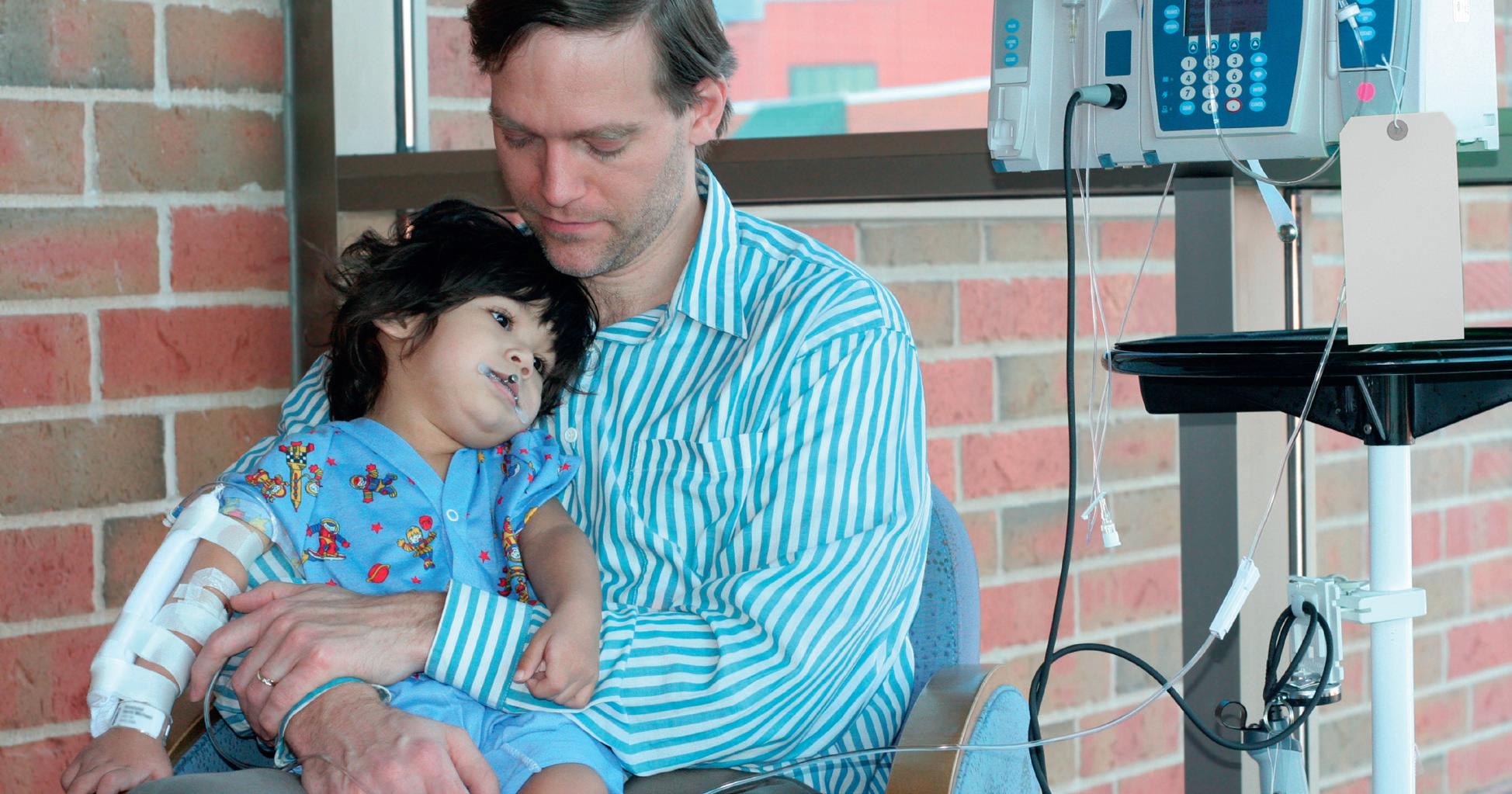

The NHS is set to roll out the first ever targeted treatment for brain tumours in children and young people in England, which can be taken at home and has been shown to significantly slow the progression of the disease, allowing them a better quality of life for longer.
Dabrafenib with trametinib has been found to stop the disease progressing for more than three times as long as standard chemotherapy for children with low-grade gliomas that have a specific genetic mutation, while helping many be spared the harsh side effects that can come with chemotherapy.
The treatment will be available on the NHS in the coming months for young people aged 1-17 with lowgrade or high-grade gliomas that have a BRAF V600E mutation, following a green light from the National Institute for Health and Care Excellence (NICE).
The combination treatment, which is given at home rather than in hospital, works by targeting the proteins made by the altered BRAF gene that are responsible for uncontrollable tumour growth. Around 150 children are diagnosed with low grade gliomas every year in the UK and around 30 are diagnosed with high grade gliomas.
After a headline campaign from RCPCH, the Royal College of Paediatrics and Child Health, England and Scotland have announced a rollout of a vaccine for RSV this autumn. Respiratory Syncytial Virus (RSV) causes infections of the lungs and respiratory tract. It’s so common that most children have been infected with the virus by age of two.
England and Scotland will see the roll out of two new RSV vaccination programmes from September and August 2024 (respectively), for older adults and during pregnancy for infant protection.
In March 2024 over 2,000 healthcare professionals signed an open letter urging Governments across the UK to implement an immunisation programme in time for next winter. Announcements for Wales and Northern Ireland are expected to follow.
RSV infections usually peak in December, when the health service is already at capacity, and is responsible for around 33,000 NHS hospitalisations of under-fives annually and death of between 20 and 30 young children every year.










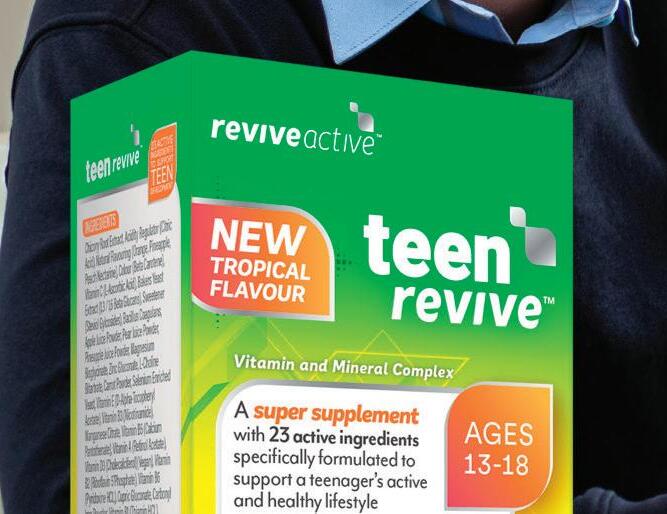


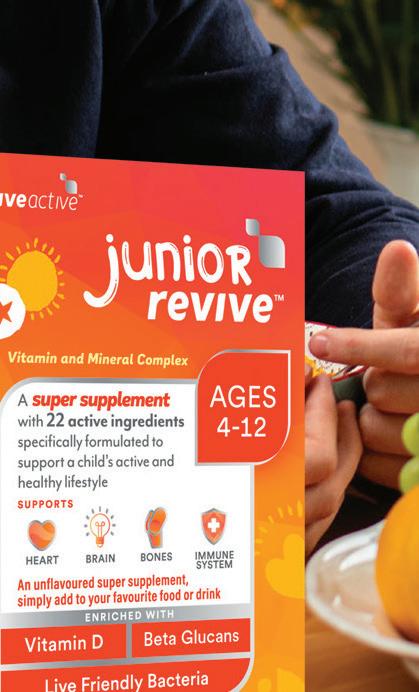




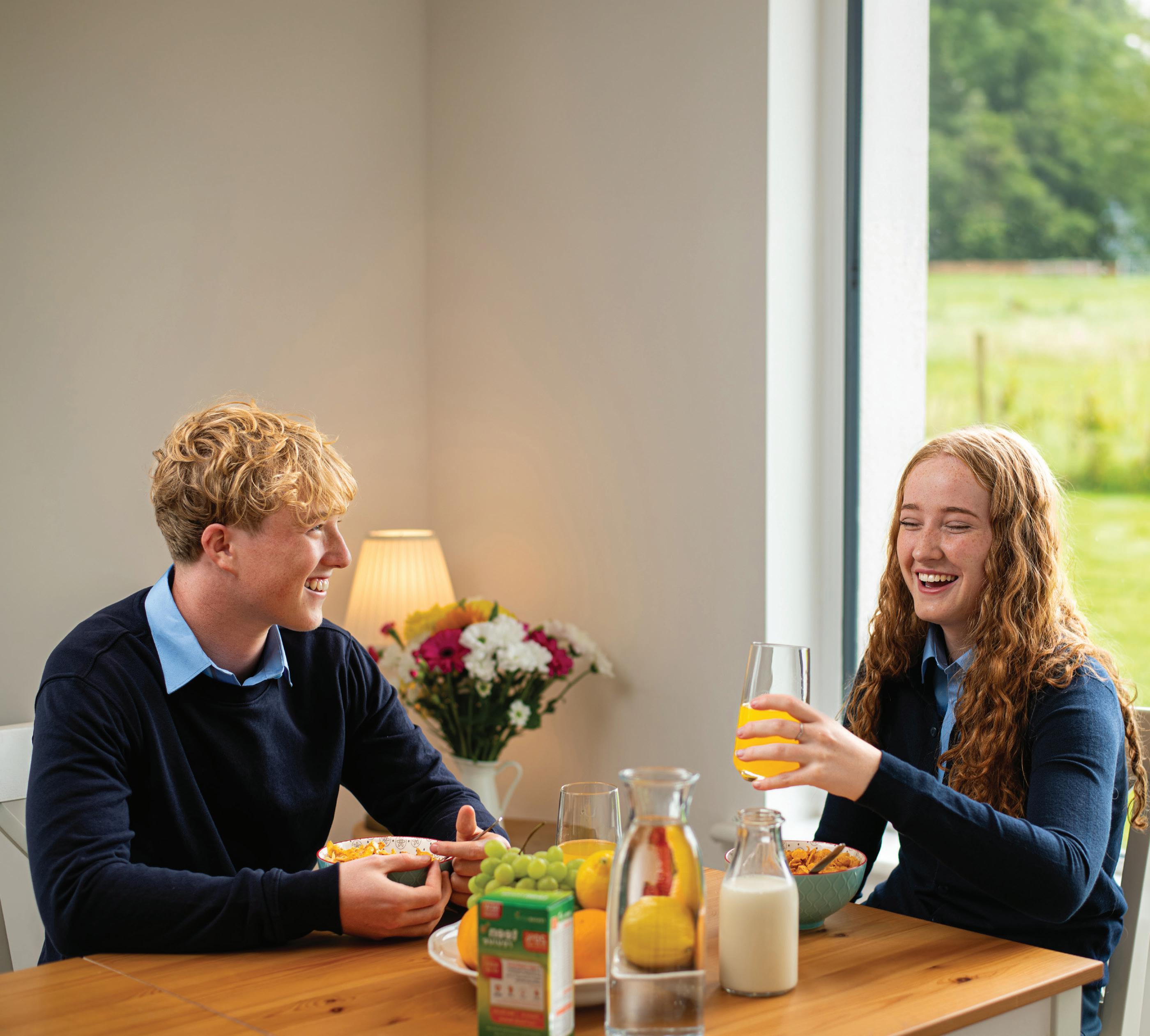



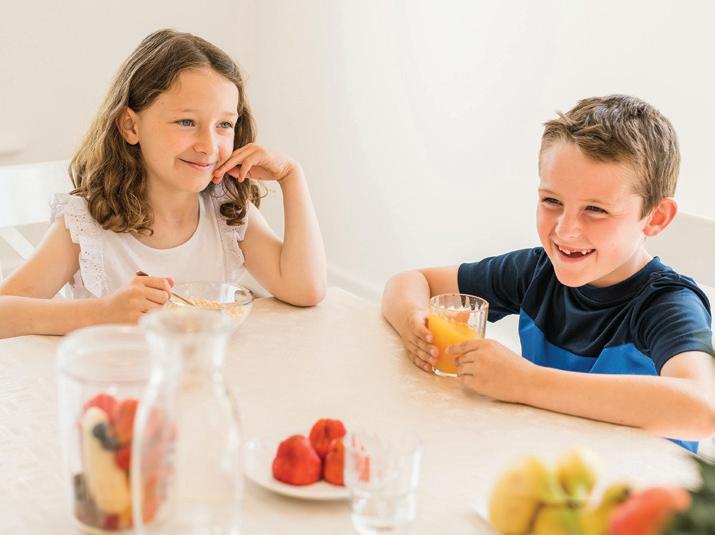
Infants and children need a lot of nutrients to support their rapid growth and development, so give them the right nutrition from the very start.
Provides all the essential amino acids, required for muscle growth and bone maintenance.
Required to transport oxygen around the body, helping reduce tiredness.
Children’s bodies can absorb haem iron more easily than iron from plant based sources. DID YOU KNOW?
Omega 3
Essential for brain health, is a type of polyunsaturated fat that the body cannot make by itself. Grass fed red meat can contribute to intakes.
For more information, recipes and tips on how to include red meat in a healthy and balanced diet, visit:
Including red meat as part of a balanced diet can ensure children get enough key nutrients such as protein, haem iron, zinc, some healthy fats, Vitamin A, D and a range of B vitamins.
Helps keep the eyes functioning healthily.
Helps the body absorb calcium for strong bones and teeth.
2 main types of fat found in red meat:
Mainly found in animal products and processed foods. Less healthy as can raise cholesterol levels.
Associated with growing, learning, healing wounds and supporting bone health.





Only found naturally in meat and animal source foods. Helps the nervous system. Helps convert the food we eat into energy.
Generally found in plant foods and lean red meat. Can either be polyunsaturated or monounsaturated. Fat contents of fully trimmed raw: 4%


Before you think about giving up meat, consider whether it should be part of a healthy, balanced diet
Meat has always been a fundamental component of the human diet, providing essential nutrients that support overall health and well-being. While there are varying opinions on the role of meat in a healthy diet, and some people are inclined towards a vegetarian or vegan diet for health or philosophical reasons, scientific evidence underscores the benefits of including moderate amounts of red and white meat.
Protein is an essential macronutrient necessary for the growth, repair, and maintenance of body tissues. It also plays a crucial role in immune function, hormone production, and energy provision.
Meat, including beef, pork, and lamb, is an excellent source of complete protein, meaning it contains all nine essential amino acids that the body cannot produce on its own. The high biological value of meat protein ensures efficient absorption and utilization by the body.
Meat is packed with a variety of vitamins and minerals that are vital for health. Some of the key nutrients found in beef, pork, and lamb include:
h Iron: Meat is a rich source of heme iron, which is more readily absorbed by the body compared to non-heme iron found in plant-based foods. Iron is crucial for the production of hemoglobin, a protein in red blood cells that transports
oxygen throughout the body. Adequate iron intake helps prevent anemia and supports overall energy levels
h Zinc: Essential for immune function, wound healing, DNA synthesis, and cell division. It also supports normal growth and development during pregnancy, childhood, and adolescence. Meat, especially beef, is a significant source of bioavailable zinc
h Vitamin B12: This vitamin is necessary for nerve function, red blood cell formation, and DNA synthesis. Vitamin B12 is found almost exclusively in animal products, making meat an important source for those who do not consume other animalderived foods »

Beef is particularly noted for its high iron and zinc content. Lean cuts of beef, such as sirloin, tenderloin, and silverside, offer these nutrients while being lower in fat. Grass-fed beef may offer additional benefits, including higher levels of omega-3 fatty acids and antioxidants like vitamin E.
Beef’s heme iron is highly bioavailable, making it an excellent choice for individuals at risk of iron deficiency, such as women of childbearing age, pregnant women, and growing children.
The high-quality protein in beef helps maintain muscle mass, which is particularly important as we age. Adequate protein intake can prevent sarcopenia, the agerelated loss of muscle mass and strength.
Pork is a versatile meat rich in thiamin (vitamin B1), which plays a key role in
energy metabolism and nerve function. Lean cuts, such as pork tenderloin and loin chops, provide essential nutrients without excessive fat.
Thiamin is crucial for converting carbohydrates into energy and for the proper function of the heart, muscles, and nervous system. Pork is one of the best dietary sources of this important vitamin.
Contrary to some misconceptions, lean pork can fit into a heart-healthy diet. It is relatively low in saturated fat when lean cuts are chosen and consumed in moderation.
Lamb is a flavourful meat that provides high-quality protein, iron, zinc, and B vitamins. It is also a good source of conjugated linoleic acid (CLA), a type of fat that has been associated with various health benefits.
The unique flavour of lamb, particularly

from grass-fed sources, is complemented by a rich nutrient profile, making it a valuable addition to a varied diet.
Conjugated linoleic acid (CLA) found in lamb has been studied for its potential benefits in reducing body fat and improving immune function. While more research is needed, CLA adds to the nutritional value of lamb.
While meat provides numerous health benefits, it is important to consume it in moderation and as part of a balanced diet that includes a variety of other food groups such as vegetables, fruits, whole grains, and legumes.
Selecting lean cuts of meat and using healthy cooking methods can enhance the health benefits of meat while reducing the intake of unhealthy fats. Here are some tips:
h Lean Cuts: Choose cuts labelled as “loin” or “round” for beef and pork, and “leg” or “shoulder” for lamb. Trim visible fat before cooking
h Opt for grilling, broiling, baking, or steaming instead of frying. These methods help reduce the amount of added fat and calories
h Limit consumption of processed meats such as sausages, bacon, and deli meats, which often contain high levels of salt, preservatives, and unhealthy fats
In addition to health considerations, many people are concerned about the ethical and environmental impacts of meat consumption. Choosing meat from sources that practice sustainable farming and humane animal treatment can help address these concerns.
Grass-fed and organic meats are often produced using more sustainable practices and with greater attention to animal welfare. These options may also have a better nutritional profile, including higher levels of omega-3 fatty acids and antioxidants.
Supporting local farmers who use sustainable practices can reduce the environmental footprint associated with meat production and transportation. ■
Prep time - 25 mins Cook time - 1 hrs 15 mins Serves - 5+

INGREDIENTS
h 1.5kg PGI Welsh Beef sirloin joint
h 1 tbsp oil
h Handful thyme and rosemary sprigs, chopped
h 2 garlic cloves, crushed
h Seasoning
h 1 red onion, cut into wedges
h 2 carrots, halved lengthways
h Sprigs of thyme and rosemary
h 1 garlic bulb, halved and brushed with oil
For the glaze:
h 1 glass red wine
h Dash red wine vinegar
h 1 tbsp brown sugar
h 1 tsp malt/yeast paste
h 1 heaped tbsp cranberry sauce
h Handful fresh or frozen cranberries (optional)
h ½ tsp black peppercorns, crushed
h Small carton of ready-made crispy onions, crushed
1. Remove the beef from the fridge 1 hour before cooking and allow to reach room temperature.
2. Preheat the oven to 220˚C / 200˚C fan / Gas 7.
3. In a small bowl, mix the oil, chopped herbs, garlic and seasoning together.
4. Place the onion and carrots in the bottom of a roasting tin to create a trivet. Sit the beef on top and smear the herby mixture over the beef. Add the sprigs of herbs and garlic bulb.
5. Place in the oven for 20 minutes.
6. Reduce the oven temperature to 180˚C / 160˚C fan / Gas 4 and calculate the remaining cooking time (10-15 minutes per 450g for medium-rare, 15-20 minutes per 450g for medium, and 20-25 minutes per 450g for well done).
7. Make the glaze by placing all the ingredients into a small pan and bring to the boil, reduce and simmer until a syrupy consistency.
8. When 15 minutes of cooking time is left, pour most of the glaze over the beef and return it to the oven.
9. Check to see if the beef is cooked to your liking, remove, brush with the remaining glaze and scatter the crispy onions on top. Allow to rest before carving.








Eaten in the right proportions, with a little preparation, and using healthier cooking methods, red meat can play an important role in a healthy balanced diet.
Beneficial for all ages, red meat can support the growth and development of infants and children, the cognitive and physical function of older adults, and the health of pregnant women.
Red meat provides high quality protein, which is essential for muscle mass and cell repair, as well as iron, which is important for blood formation and oxygen transport.
Not only is red meat beneficial to your health at every stage of life, but it is also easy to prepare, it is very versatile and lends itself well with many cuisines.
Good for your little ones. Good for you.


Try this Welsh Beef Chow Mein recipe for a wholesome and satisfying family meal. It’s packed with nutritious deliciousness and is guaranteed to please.
Prep time: 30 mins
Cook time: 15 mins
Serves: 4
Ingredients
450g PGI Welsh Beef rump steak, cut into very thin pieces
For the marinade
1 tbsp cornflour
3 tbsp reduced salt soy sauce
4 tbsp cold beef stock
1 tsp dark brown sugar
1 tsp sesame or vegetable oil
½ tsp black pepper
For the chow mein
1 tbsp vegetable oil
3 garlic cloves, crushed or grated
4cm piece fresh ginger, grated
2 carrots, peeled and sliced thinly
150g tenderstem broccoli or broccoli florets
100g beansprouts
8 spring onions, peeled and chopped
400g pack noodles (cook as instructed and toss in 1 tsp sesame oil)
Method
1. To make the marinade, mix the cornflour and soy sauce, whisk until smooth. Add the beef stock, brown sugar and oil. Then add black pepper to taste and whisk well. Add the meat and leave to marinate for at least 1 hour (longer if possible).
2. Next, let’s make the chow mein. Heat the oil in a large frying pan or wok, take the beef out of the marinade (keeping the marinade) and brown the beef in the wok, then transfer to a plate.
3. Add the garlic and ginger to the wok and stir-fry for 1 minute. Add the broccoli and stir-fry for 2 minutes over high heat, the add the carrots and half the spring onions and stir for 1 minute.
4. Add the beansprouts and stir for 1 minute.
5. Stir in the remaining marinade, and bring to the boil for 1 minute. Add the noodles and beef, stir well for a few minutes until the noodles are piping hot.
6. Serve immediately, with the rest of the spring onions sprinkled on top.



1
Trim excess fat off meat and avoid adding extra oil to dishes 2
Wash your hands thoroughly before and after handling raw meat 3
Use a designated chopping board for raw meat. Clean all utensils well after contact with raw meat 4
Keep raw meat on the bottom shelf of the fridge, separate from cooked food and non-meat products
5 DO NOT
eat meat after its ‘use by’ date
6 REMEMBER
you can only reheat leftovers once and always ensure they are piping hot

7
Limit your family’s intake of processed meat e.g. salamis, pâté, sausages and beef burgers
8
Serve red meat with plenty of wholegrain food and vegetables as part of a healthy and balanced diet
Preparing a healthy, balanced meal for your child is essential to their growth and development, but have you showed them what healthy cooking looks like?
Cooking is an essential life skill, so get them involved in preparing and cooking healthy nutritious meals with tasty lamb and beef.
Try this easy Crispy Welsh Lamb Lettuce Cups recipe for starters!
Prep time: 15 mins
Cook time: 15 mins
Serves: 4
Ingredients
450g lean PGI Welsh Lamb mince
1 bunch spring onions, chopped
100g mushrooms, chopped
1 small tin sweetcorn
2 tbsp less salt teriyaki sauce
Squeeze of honey
1 baby gem lettuce, leaves removed
To serve
Spring onion curls and sesame seeds
Method
1. Prepare and chop the vegetables into small pieces.
2. Fry the minced lamb in a frying pan over a low heat to allow the juices and fat to be released. Increase the heat and fry the mince until brown.
3. Add the spring onion and mushrooms and fry for a few minutes.
4. Add the sweetcorn, sauce and honey and bring to the boil.
5. Fill the lettuce cup with the mixture and top with the spring onion curls and a sprinkle of sesame seeds. Serve immediately to keep the lettuce crisp.
Welsh Lamb and Welsh Beef is produced from grass-fed animals that are raised in natural and sustainable conditions, giving the meat a high nutritional value, a distinctive flavour, and a lower environmental impact.
For more information, recipes and tips on how to include red meat in a healthy and balanced diet, visit: eatwelshlamb.com | eatwelshbeef.com










As parents, we take responsibility for our children’s health – and nowhere is that more important than in the issue of obesity
If your child is a healthy weight, there’s lots you can do as a parent to help them stay a healthy size as they grow. Research shows children who stay a healthy weight tend to be fitter, healthier, better able to learn, and more selfconfident. They’re also much less likely to have health problems now and in later life.
Children whose parents encourage them to be active and eat healthily are more likely to stay a healthy weight and grow up healthy. So what can you do to instil good eating habits in your child?
h Check their BMI (Body Mass Index) every now and then using the NHS
BMI calculator for children and teenagers (search for NHS Health Assessment Tools)
h Be a good role model. Children learn by example. You can encourage your child to be active and eat healthily by doing so yourself. Set a good example by going for a walk or bike ride instead of watching TV or surfing the internet. Playing in the park or swimming with your children shows them being active is fun. It’s also a great opportunity for you all to spend time together
h Find easy ways to eat well and move more as a family on
the Better Health website at www.nhs.uk/healthier-families or www.nhs.uk/live-well/exercise
Any changes you make to your child’s diet and lifestyle are much more likely to be accepted if the changes are small and involve the whole family. Schoolaged children need about 60 minutes of physical activity a day for good health. Activity does not need to be all at once, it can be spread throughout the day. It could include riding a bike, skateboarding, walking to school, skipping, swimming, dancing and martial arts. »

Children under five years old need more than three hours’ activity a day. It can take the form of active play, such as ball games, chasing games like “it” and “tag”, riding a bike or scooter, using playground swings, climbing frames and see-saws. Activities should make children breathe faster and feel warmer.
Walking or cycling short distances instead of using the car or bus is a great way to be active together as a family. And you’ll save money, too.
There’s very little official guidance on precisely how much food children require, so you’ll need to use your own judgement on child-size portions. A good rule of thumb is to start meals with small servings and let your child ask for more if they’re still hungry.
Avoid making your child finish everything on the plate or eat more than they want to. Use smaller plates for younger children, as adult-size plates could encourage them to eat oversized portions.
It may also help if you encourage your child to eat slowly and have set mealtimes. You can use mealtimes as an opportunity to catch up on what’s happened during the day.
Explain to your child how to get the balance of their diet right using the Eatwell Guide (search for NHS UK Eatwell Guide). It shows how much we should all eat from each food group.
Children, just like adults, should aim to eat five or more portions of a variety of fruit and vegetables every day. They’re a great source of fibre and vitamins and minerals. Getting Five A Day should not be too difficult. Almost all fruit and vegetables count towards your child’s Five A Day, including fresh, tinned, frozen and dried. Discourage your child from having sugary or high-fat foods like sweets, cakes, biscuits, crisps, chocolate, some sugary cereals, and sugar-sweetened soft and fizzy drinks. These foods and drinks tend to be high in calories. Aim for your child to get most of their calories from foods like
fruit and vegetables, and starchy foods like bread, potatoes, pasta and rice (preferably wholegrain versions).
They should also have some beans, pulses, fish, eggs, meat and other protein foods, and some dairy or dairy alternatives.
Finally, help your children avoid sitting and lying around too much, as it makes it more likely for them to put on weight. Limit the amount of time your child spends on inactive pastimes such as watching television, playing video games and playing on electronic devices. There’s no hard and fast advice on how much is too much, but experts say children should have no more than two hours of screen time each day. Remove all screens (including mobile phones) from their bedroom at night.
The less children sleep, the greater the risk of them becoming overweight. Lack of sleep can also affect their mood and behaviour.
It also helps children stay trim if they sleep well. It’s been shown children who don’t have the recommended amount of sleep are more likely to be overweight. ■
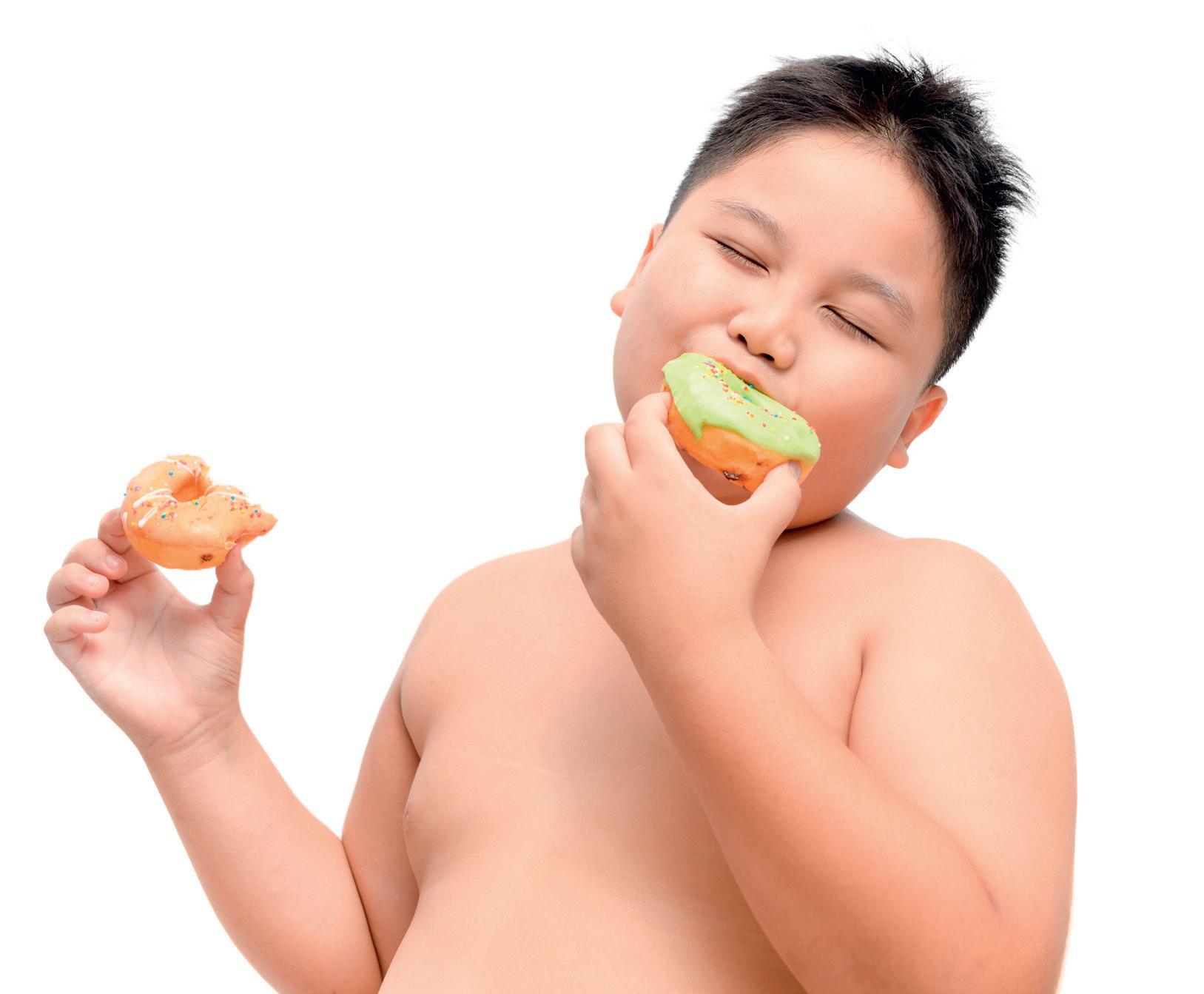






































































































As new parents, you want nothing but the best for your little one, especially when it comes to their delicate skin.
A Harvey Water Softener gives you a gentle touch that’s perfect for your baby’s sensitive skin and precious hair. Enjoy bigger, bubblier baths that turn every bath time into a soothing experience for both you and your baby. What’s more, with softened water, you’ll use fewer products like shampoo and detergents, ensuring your baby’s skin remains soft and smooth without excessive and harsh chemicals.
With a water softener, give your bundle of joy the tender care they deserve with softened water, the secret to happy, healthy skin from day one.












































We all worry about our skin as we age, but it’s important to care for it when we’re young too. Here are some top tips from water quality to sun protection
To some extent it’s inevitable that our skin quality will decline with age; changes in the body’s hormones and the supply of nutrients and supportive chemicals such as collagens mean that we can expect skin to lose elasticity, and to dry out and wrinkle. But if we look after our skin when we are young, we can keep it in good condition as long as possible. In fact it’s particularly important to care for young skin, as this can help prevent skin problems like acne, and in later years, premature aging and health problems such as skin cancer. Here are our top tips. »
As new parents, you want nothing but the best for your little one, especially when it comes to their delicate skin. Softened water offers a gentle touch that’s perfect for your baby’s sensitive skin and precious hair. Enjoy bigger, bubblier baths that turn every bath time into a soothing experience for both you and your baby. What’s more, with softened water, you’ll use fewer products like shampoo and detergents, ensuring your baby’s skin remains soft and smooth without excessive and harsh chemicals. With a water softener from www.harveywatersofteners.co.uk , give your bundle of joy the tender care they deserve with softened water, the secret to happy, healthy skin from day one.
Right after a bath or shower, apply a moisturizer to lock in and replenish fluids. Drinking plenty of water is essential for skin health, and you should aim to drink eight glasses per day, though of course that varies a lot depending on sex, age and activity. Keep alcohol intake to a minimum, as alcohol can make the skin look pale, dry, and prone to wrinkling.
Skin naturally exfoliates itself, shedding 30-40,000 dead cells every minute, but factors such as weather, lifestyle, age, and dehydration can slow or halt this process, resulting in dull, flaky, congested skin. Removing dead skin layers brings out the glow in the skin beneath. Don’t exfoliate too harshly; use a non-irritating acid cleanser or exfoliant to smooth skin texture, increase absorption rate of skin care products, and brighten complexion. Physical exfoliants typically use some type of granule such as salt, while chemical exfoliants use chemicals, usually alpha-hydroxy acids (AHAs) to break apart and remove dead skin cells.
A safe, mineral-based sunscreen should be used daily - even in the winter when the sun might not be bright, but damaging ultraviolet light can still damage skin cells.

UV light is the primary cause of colour changes and visible skin ageing, and is also carcinogenic, so for both looks and health you should slap on the sunscreen. Look for a mineral-based sunscreen with active ingredients like zinc oxide or titanium dioxide which is SPF 30 or higher, and apply it as the final step in your skin care routine every morning. Damage from UV radiation is cumulative: children spend more time outdoors, young skin is more susceptible to damage, and UV damage in childhood may have profound consequences later. Sunburn in childhood or adolescence doubles the risk of melanoma later in life, according to the Skin Cancer Foundation. Cancer Research UK warns people to do more to protect themselves from the sun as the number of melanoma skin-cancer cases rises. The charity predicts that there will be a record 20,800 cases diagnosed this year – up from a yearly average of 19,300 between 2020 and 2022. Analysis shows cases rose by almost a third between 2009 and 2019, from 21 to 28 cases per 100,000 people.
The rise in diagnoses is due partly to a growing ageing population and an increase in awareness of the signs of skin cancer. The report suggests around 17,000 melanoma cases every year are preventable - with almost nine in 10 caused by too much ultraviolet (UV) radiation.
The skin often needs supplements containing the protein collagen or vitamins including Vitamin C. Vitamin C deficiency leads to impaired wound healing, issues with collagen formation, and other negative effects on the skin. Many people use topical vitamin C treatments to improve the appearance of their skin, and some promote vitamin C supplements too.
While following a healthy diet high in nutrient-dense foods is key for healthy skin, it’s sometimes suggested that supplements including vitamins, minerals, and fatty acids like fish oil can improve the skin’s appearance. Scientists are still
researching how collagen supplements affect the skin, but there is some evidence that they may help improve certain aspects of skin health, including wrinkle depth, elasticity, and hydration.
Research suggests that omega-3 supplements can benefit those with skin conditions such as atopic dermatitis, psoriasis, acne, and skin ulcers. Omega-3 supplements may also help protect against skin cancers.
Underlying gut health issues can affect skin health in many ways, the so-called ‘gut-skin axis’. Maintaining the health of your gut microbiome is a whole subject in itself, but in terms of skin care, the best tips are to cut down on your intake of sugar and processed foods, and incorporate healthy fats such as those found in nuts, avocados and flaxseed into your diet.
Other healthy-fat foods for glowing skin include salmon, olive oil, and whole eggs. Eat plenty of antioxidant-rich foods such as fruits and vegetables, and, as a bonus, some dark chocolate.
The skin also has its own microbiome, or colony of bacteria which keep skin hydrated and supple, so avoid harsh soaps
and scrubbing which can strip away the essential oils and bacteria that make up the skin microbiome. Cut out potentially irritating foods that are packaged, processed, or high in sugar or dairy. It’s particularly essential to cut down on high sugar foods which are associated with acne and inflammatory conditions.
A facial massage routine is enjoyable, reduces tension and increase circulation and lymphatic drainage. You can use a jade roller or a gua sha scraper for a few minutes in a daily routine. You’ll get an immediate post-facial glow as well as the long-term benefits of increased circulation. Also try a face mask with hydrating ingredients like hyaluronic acid, sodium hyaluronate, and vitamin E.
Any activity which increases blood flow throughout the body and brings oxygen, nutrients, and minerals to the skin will be of benefit. Exercise will also help you to sleep better, and lack of sleep is notoriously bad for your skin. Eight hours of sleep a night is the standard, but of course this will vary according to the needs of your body. ■
The skin, or cutaneous membrane, covers the external surface of the body and is the largest organ in surface area and weight.
In adults, skin covers about two square meters, weighs about 4.5-5kg and is approximately 16 percent of our body weight, with ranges in thickness from 0.5mm for eyelids to 4.00mm on the heels. Covering most of the body, the skin is 1-2mm thick. The epidermis in infants and babies is about 20% thinner than in adults. The primary function of the skin is to act as a barrier. The skin provides protection from mechanical impacts and pressure, variations in temperature, micro-organisms, radiation, and chemicals.

By making simple yet effective food swaps, you can give your kids delicious meals while nourishing their bodies
In a world where fast food and processed snacks are more accessible than ever, making healthy food choices for you and your children can be challenging. However, adopting healthier eating habits doesn’t mean you have to give up your favourite dishes. Healthy food swaps and dietary choices tips can provide nutritious meals for children to set them on the path to a healthy lifestyle.
Healthy food swaps involve replacing less nutritious foods with healthier alternatives that provide more vitamins, minerals, and other essential nutrients. These swaps help reduce the intake of unhealthy fats, added sugars, and empty calories, contributing to better overall health and well-being.
Smart food swaps for everyday meals could include:
Swap sugary cereals for porridge. Many breakfast cereals are high in sugar and low in fibre. Opt for oatmeal porridge, which is rich in fibre and can be flavoured with fresh fruits, nuts, or a drizzle of honey for sweetness.
Replace white bread with whole grain bread. Whole grain bread contains more fibre and nutrients than white bread, keeping you fuller for longer and providing sustained energy throughout the morning.
Choose Greek yogurt instead of fruitflavoured yogurt. Greek yogurt is higher in protein and lower in sugar compared to regular yogurt, and some regular yogurts are also flavoured with high levels of sugar. Greek yogurt also has a thicker,
creamier texture that kids like and makes it a satisfying breakfast choice.
Choose leafy greens over iceberg lettuce: Swap iceberg lettuce for nutrient-dense leafy greens like spinach, kale, or rocket in your salads. These greens are packed with vitamins A, C, and K, as well as antioxidants.
Whole wheat instead of flour. Whole wheat used in wraps such as tortillas offers more fibre and nutrients than traditional flour-based warps. They can be filled with lean proteins, vegetables, and healthy fats for a balanced meal.

Choose quinoa instead of white rice. Quinoa is a protein-rich grain that is also high in fibre and essential amino acids. It can be used in place of white rice for a more nutritious option.
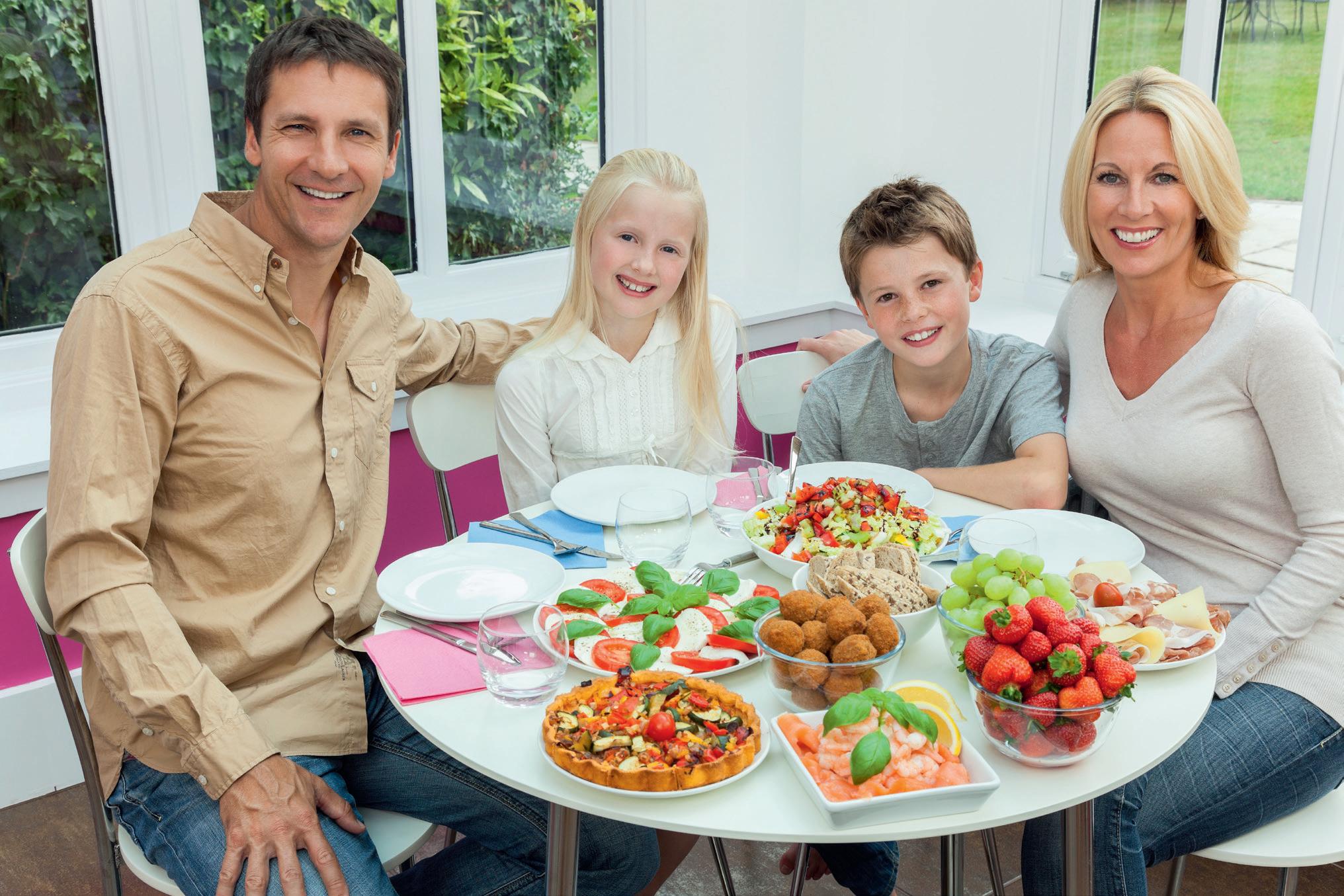
Courgette noodles over pasta. Replace traditional pasta with courgette noodles (sometimes called zucchini noodles or zoodles) to reduce calorie and carbohydrate intake while increasing vegetable consumption. Zoodles can be paired with marinara sauce, pesto, or other healthy sauces.
Lean meats over fatty cuts. Choose lean cuts of meat like chicken breast, turkey, or fish instead of fatty cuts or red meat. Leaner options are lower in saturated fats and higher in essential nutrients.
Cauliflower rice instead of regular rice. Cauliflower rice is a low-carb alternative to regular rice that also provides additional vitamins and minerals. It can be easily made by pulsing cauliflower florets in a food processor.
Choose nuts and seeds over crisps. Swap out potato crisps for a handful of nuts or seeds. They offer healthy fats, protein,
and fibre that help keep you satisfied between meals.
Fruit instead of sweets. When craving something sweet, reach for fresh fruit like apples, berries, or oranges instead of candy. Fruits provide natural sugars along with essential vitamins and fibre. Dried fruit snacks from Urban Fruit (www.urbanfruit. co.uk) are great at any time of day, and a 30g portion of dried fruit counts as one of your five-a-day requirement of fruit and vegetables. Urban Fruit snacks are suitable for vegans, contain no sulphites and are gluten-free.
Hummus and vegetables instead of crackers and dips. Pair fresh vegetables like carrots, celery, and bell peppers with hummus for a nutritious and satisfying snack. This swap reduces processed food intake and increases vegetable consumption.
Planning meals for you and your kids means that you can keep control of your and their
diet and avoid spontaneous snacking.
Planning meals in advance helps ensure that you have healthy ingredients on hand and reduces the temptation to opt for less nutritious options. Create a weekly meal plan, make a shopping list, and prepare meals ahead of time to stay on track.
Drinking enough water is crucial for overall health. Sometimes, thirst is mistaken for hunger, leading to unnecessary snacking. Aim to drink at least eight glasses of water a day and incorporate hydrating foods like cucumbers, watermelon, and oranges into your diet.
Even healthy foods can contribute to weight gain if consumed in large quantities. Use smaller plates, measure servings, and listen to your body’s hunger and fullness cues to avoid overeating. »
Eating a variety of foods ensures you get a wide range of nutrients. Incorporate different fruits, vegetables, whole grains, lean proteins, and healthy fats into your diet to support overall health.
Processed foods often contain added sugars, unhealthy fats, and sodium. Try to minimize your intake of processed foods and opt for whole, unprocessed foods whenever possible.
Encouraging children to eat healthily can set the foundation for lifelong good habits, but sometimes it’s difficult to get them to eat food they think of as boring. Here are some nutritious meal ideas specifically for kids.
Banana pancakes. Make pancakes using mashed bananas, eggs, and oats. These pancakes are naturally sweet and packed with nutrients. Serve with fresh fruit and a dollop of Greek yogurt.
Smoothie bowls. Blend together frozen fruits, spinach, Greek yogurt, and a splash of milk to create a thick smoothie. Top with granola, nuts, and seeds for added texture and nutrition.
Turkey and avocado wraps. Use whole wheat tortillas and fill them with sliced turkey, avocado, lettuce, and tomatoes. These wraps are a great source of protein, healthy fats, and fibre.
Veggie-packed pasta salad. Mix whole grain pasta with a variety of vegetables like cherry tomatoes, bell peppers, cucumbers, and carrots. Toss with olive oil and a sprinkle of cheese for a kidfriendly lunch.
Baked chicken tenders. Coat chicken strips in wholewheat breadcrumbs and bake until crispy. Serve with sweet potato fries and a side of steamed broccoli for a balanced meal.
Mini veggie pizzas. Use whole wheat pitta bread as the base and top with tomato sauce, shredded cheese, and a variety of vegetables. Bake until the cheese is melted and bubbly.
Apple slices with almond butter. Slice apples and serve with a side of almond butter for dipping. This snack is rich in fibre and healthy fats.
Yogurt parfait. Layer Greek yogurt with
fresh berries and a sprinkle of granola. This snack is not only delicious but also provides protein and essential vitamins.
Follow these simple guidelines and you’ll soon find that mealtimes are healthier, the family is happier, and it’s easier to get the kids to clear their plates! ■
As a leading brand in the kids’ fruit snacking category, our goal is simple: to continue making greattasting, healthy snacking exciting to more and more kids. And that starts from a young age, encouraging positive associations with fruit - with learning, engagement, imagination, and creativity. Made with real fruit, and providing one of your five a day, our products undergo a gentle baking process, meaning nutrients are retained, cellular structures are kept intact, and the processing level is minimal. From day one, we’ve been baking products that are 100 percent natural, and that commitment remains true today. www.bearsnacks.co.uk








All parents worry about the safety of their children, but it can be hard to protect them constantly. What can we do to make sure they stay safe at home, at school and in the outside world?
Ensuring the safety of children is a multifaceted challenge that requires concerted efforts from parents, schools, clubs, sports organizations, and the community at large. Both at home and at school, various measures and practices have been implemented to safeguard children, but when they get older and venture into the outside world unsupervised, it can be harder to ensure their safety. Let’s look at some of the challenges and solutions.
The home should be a sanctuary for children, but it is also a place where hazards can exist, from the dangers of fires
and falls to physical or emotional abuse.
Childproofing the home is a crucial step in physical safety. This includes securing furniture to prevent tip-overs, using safety gates for stairs, covering electrical outlets, and ensuring that dangerous items like sharp objects, medications, and cleaning supplies are out of reach. The Royal Society for the Prevention of Accidents (RoSPA) provides extensive resources on home safety practices.
Installing smoke alarms on every floor, practicing fire drills, and keeping a fire extinguisher handy are essential measures. Educating children about the dangers of fire and the importance of not playing with matches or lighters is
equally important. Be particularly aware of dangers in the kitchen with flames or hot surfaces.
Make sure that medicines, dangerous chemicals and items such as washing tablets which children might try to eat are sealed in child-proof packages, put out of sight or locked away.
Equally important for mental and emotional health is creating an environment where children feel loved and secure. Open communication, listening to their concerns, and being supportive helps in building trust. Teaching children about body autonomy and encouraging them to speak up if they feel uncomfortable is also important.


Schools play a critical role in child development and safety, and school staff play a vital part in ensuring a safe environment. This involves both physical safety measures and policies to protect against bullying and abuse.
Schools should adhere to strict building safety regulations, conduct regular emergency drills, and have clear procedures for dealing with incidents. Ensuring playground equipment is safe and regularly inspected is also crucial.
Anti-bullying policies should be enforced rigorously. This includes having clear reporting mechanisms, supporting victims, and educating students about the effects of bullying. Online safety education is also vital, as cyberbullying can have severe emotional impacts.
Schools must have robust safeguarding policies, including background checks for staff and regular training on identifying and responding to signs of abuse or neglect.
After-school clubs offer valuable opportunities for children to develop new skills and interests. However, these environments must also be secure. Clubs should maintain appropriate adult-tochild ratios and ensure that all staff and volunteers are properly vetted through the Disclosure and Barring Service (DBS).
The premises should be child-friendly, with safety measures such as First Aid kits, emergency contact information, and clear evacuation plans. Activities should be age-appropriate and supervised to prevent injuries.
Clubs should have a code of conduct for both children and staff, promoting respect, inclusion, and safety. This helps in creating a positive environment where children can thrive.
Sports activities are beneficial for physical health and social development, but they also pose risks if not properly managed.
Proper training, use of appropriate safety gear, and adherence to rules can significantly reduce the risk of sportsrelated injuries. Coaches should be trained in first aid and injury management, and should be aware of changes in safety advice; for instance after two seasons of trials in English football, a new rule has been introduced to phase out deliberate heading in matches in all affiliated grassroots youth football between U7-U11 level. This includes all leagues, clubs and any affiliated school football matches –starting with U7-U9 level from the 2024-25 season, then increasing to include U10 level from 2025-26, and U11 level from 2026-27.
Coaches and staff must be DBS checked and trained in safeguarding. Policies should be in place to protect children from abuse and harassment, and sports organizations should promote an inclusive environment, where all children, regardless of their abilities, feel safe and encouraged to participate. »

Of course the internet is an integral part of children’s lives, offering educational resources and social connections, but it also presents significant risks. Teaching children about online safety is crucial. This includes understanding privacy settings, recognizing phishing scams, and knowing how to report inappropriate content. Using parental controls can help monitor and limit children’s online activities. Setting up safe search filters and time limits on device use are effective strategies.
Encourage children to talk about their online experiences and ensure they know they can approach a trusted adult if they encounter something disturbing or confusing.
Mental health issues are often made worse by material found on the internet. Early intervention and support can prevent long-term issues, and schools and parents should educate children about mental health, reducing stigma and promoting open discussions. Recognizing the signs of mental distress, such as changes in behaviour, mood, or performance, is vital. Parents should foster an environment where children feel comfortable expressing their feelings. Encouraging healthy lifestyles, including regular exercise, adequate sleep, and balanced nutrition, supports mental well-being.
Protecting children from sexual abuse is a critical component of safeguarding.
Teaching children about consent, body autonomy, and the difference between appropriate and inappropriate touching helps them understand their rights and how to protect themselves. All individuals working with children should undergo thorough background checks and receive training on recognizing and responding to signs of abuse, and clear, accessible reporting mechanisms should be in place for children to disclose abuse. Ensuring that children know how to access these resources and feel supported in doing so is essential.
Preventing drug abuse among children requires education, early intervention,
and supportive environments. Schools should incorporate comprehensive drug education programs that cover the risks and consequences of drug use. This includes understanding the dangers of prescription drug misuse. Parents play a crucial role in preventing drug abuse. Open communication about the risks of drugs, setting clear expectations, and being involved in their children’s lives are key strategies. Access to counselling and support services for children at risk of or struggling with drug abuse can prevent escalation. Early intervention programs and peer support groups are effective in addressing these issues.
Once children get older and are confident enough to go out and about by themselves, they will learn techniques for keeping themselves safe in the outside world. However it’s still a comfort to parents if they have some means of keeping in touch, which is where a mobile phone can be a vital tool. To avoid constant phone calls or text messages though, try an app such as MyFirstAlert , an easy-to-use system using SMS to notify chosen contacts throughout a journey automatically, not only when the user has safely arrived somewhere, but more importantly, also when they are delayed or diverted. ■






‘Let us know you’ve arrived?’
It is something that we all ask, or have been asked, but how often do we remember to send that message?
With the ‘My First Alert’ app you can let your friends and family know that you are safe every step of the way; even better, the app sends automated
alerts and updates throughout your journey, so you don’t need to worry about sending that message at the end of your journey again.














































Designed to be simple to navigate and ensure that people of all ages can easily use it, you simply need to decide which friends or family you want to stay in contact with, next you put in your destination and set your route deviation parameter. The app will then send your nominated contacts automatic updates throughout your journey.
If your journey isn’t going as planned, it will send notifications including a location pin of any detours away from your route, if your battery is low, or even when you

are stationary for too long. Then when you have arrived safely your contacts will receive a final notification.
A simple app that can be used by parents wanting to know that their children have made it safely to and from school, by people travelling home at night, or friends wanting to know that everyone made it home safely.
At only £1 a year, we can all feel safer during our own journeys and of those of our loved ones each and every time!










Sleep, an essential component of human health, is profoundly influenced by the structure of our beds. How do you plan for the best night’s sleep?
From the bed base to the coverings, each element of a bed plays a critical role in ensuring a restful night. Understanding the different types of beds and sleeping styles can help create the perfect sanctuary for slumber.
The bed base is the foundation of a bed and comes in several varieties:
h Platform Bed: Known for its simplicity and minimalistic design, a platform bed has a solid or slatted base that supports the mattress directly, eliminating the need for a box spring. Ideal for a modern look and a firmer sleeping surface.
h Divan Bed: A divan bed consists of a sturdy wooden frame covered in fabric. There are different types of divan bases:
h Platform Divan: Offers a solid top, providing firm support.
h Sprung Top Divan: Features springs on the top, offering a softer feel and enhanced comfort.
h Low Divan: Lower to the ground, these are ideal for minimalist aesthetics or rooms with limited headroom.
h Reinforced Divan: Designed for extra durability and support, suitable for heavier individuals or those seeking a longer-lasting option.
h Ottoman Divan: Provides additional storage space underneath, accessible by lifting the mattress base.
Each type of divan base caters to different needs, balancing comfort, support, and practicality.
The mattress is where comfort meets support, and choosing the right one can make a significant difference in sleep quality:
h Innerspring Mattress: These mattresses use a network of steel springs to provide support. They are popular as they are durable and often more affordable.
h Memory Foam Mattress: Made from viscoelastic foam, these mattresses conform to the body, providing personalized support and
pressure relief.
h Latex Mattress: Natural or synthetic latex provides a responsive and supportive sleep surface, is durable and has hypoallergenic properties.
h Hybrid Mattress: Combining innerspring coils with foam or latex, hybrid mattresses offer the best of both worlds—support and comfort.
h Airbed Mattress: Adjustable air chambers allow users to customize the firmness, ideal for couples with different sleep preferences.
h Gel Mattress: Featuring a gel support layer that provides body temperature regulation, and a soft durable feel which moulds to your body.
Also part of a bed, though more concerned with aesthetics than functionality, are headboards and footboards, which are commonly either upholstered for comfort when you are sitting up, or made of metal for its decorative qualities and ease of cleaning. »
Pillows come in various types to cater to different sleep needs: memory foam pillows contour to the head and neck; down pillows offer plush comfort; latex pillows provide firm support and hypoallergenic properties; and body pillows support the entire body, ideal for side sleepers and pregnant women.
The last essential element is of course the bed covering. Sheets, typically made from cotton, linen, or synthetic blends, can be either fitted with elastic corners, or flat. Blankets provide an additional layer of warmth and can be made from wool, cotton, fleece, or synthetic materials.
h Comprising three layers - top, batting, and backing - quilts are often decorative and can be used as a light blanket or a bedspread.
h Lightweight and decorative, coverlets are used over sheets and blankets and can add a touch of elegance to the bed.
h Designed to cover the entire bed, including pillows, bedspreads are often used for decorative purposes and can add a finished look to the bedroom.
The fashionable choice these days, though, is often for a duvet. Filled with down, feathers, or synthetic fibres, duvets offer warmth and are encased in a removable cover. An increasingly popular idea is the ‘baa-vet’, or wool-filled duvet. Wool might not be the first material you think of for sleeping under, as you may imagine it’s hot and scratchy; but in fact the designs from www.baavet.co.uk are claimed to be far superior to polyester, feather, down duvets silk duvets, and particularly suitable for asthma or eczema sufferers and for anyone with overheating problems in bed.
A well-chosen bed and coverings are essential for achieving restful and restorative sleep. From the bed base and mattress to the coverings, each component contributes to the overall sleeping experience. By understanding the different types of beds and coverings, you can create a personalized sleep environment that promotes comfort, support, and tranquillity. Invest time in selecting the right elements for your bed, and you’ll enjoy the profound benefits of a good night’s sleep. ■
The best beds for children prioritise safety, comfort, and adaptability. Bunk beds and loft beds are popular for saving space and adding fun elements to the room. Platform beds with low profiles minimize the risk of falls, making them ideal for younger children. Twin beds provide ample space for growing kids and can be paired with trundle options for sleepovers. Mattresses should be medium-firm to support proper spinal alignment. Additionally, beds with built-in storage, such as captain’s beds or those with drawers, help keep the room tidy and organized, promoting a clutter-free and restful environment for children.


The secret to a better night’s sleep and a way to improve your health
Discover how Wool is better for you, and for the Envi ronment















“Exceptional service. These people care”

“I wanted a wool duvet and when I read Baavet’s story, I thought, these are my kind of people: British products made from British wool supporting British farmers and maintaining British jobs.
Just seeing the parcel put a big smile on my face. I’ve slept well under my duvet and am pleased that I found Baavet. If you want to make a purchase from a company who cares about its products look no further”
Trusted Customer








“Super product , like sleeping in heaven! Fantastic!”
“Have recently bought a mattress topper & was so impressed went for a duvet…. Perfect! Excellent service too, ordered & delivered in 2 days!”
Trusted Customer

Wool regulates your temperature in bed even 2 different temperatures in the same bed.
Wool is naturally antibacterial.
Wool is so dry Dust Mites hate it.
Wool is naturally breathable and will wick away moisture leaving the duvet dry and mould free.
It’s so clean and cooling it makes it ideal for Asthmatics, eczema, and allergy sufferers.
And you don’t need to wash it, just air it on a nice sunny day.
A Baavet is made from completely natural and sustainable materials.


Love your Baavet and it will last you a lifetime






Baavet buys its wool directly from British farmers paying them a premium price for their wool. We give you a 30 day no quibble money back guarantee.
Your Baavet is available in 4 different weights and prices start at £110 for a Super Light single


We also make wool pillows, mattress protectors, and wool mattresses. All our products are British made using British wool. To buy online or for further details visit:



Mushrooms have been valued for their medicinal properties for thousands of years, particularly in traditional Asian medicine. Modern research is now validating these traditional uses, revealing that mushrooms can have profound health benefits, particularly for the immune system. There’s even a name for the use of mushrooms in medicinal applications – mycotherapy, which refers to using extracts from medicinal mushrooms for therapeutic purposes.
The key components of mycotherapy are:
h Immune Support: Medicinal mushrooms such as Reishi (Ganoderma lucidum), Shiitake (Lentinula edodes), and Maitake (Grifola frondosa) contain beta-glucans and other
Can supplements based on mushrooms benefit overall health and particularly the immune system? Research suggests it’s a growing field...
polysaccharides that stimulate the immune system. These compounds enhance the activity of macrophages, natural killer (NK) cells, and other immune cells, bolstering the body’s defenses against pathogens and diseases.
h Anti-Inflammatory Properties: Many mushrooms possess anti-inflammatory compounds that help reduce chronic inflammation, a root cause of numerous health issues. For instance, Reishi and Chaga (Inonotus obliquus) mushrooms are known for their potent anti-inflammatory effects, which can alleviate conditions such as arthritis and inflammatory bowel disease.
h Antioxidant Effects: Mushrooms like Chaga and Cordyceps (Cordyceps sinensis) are rich in antioxidants,
which protect cells from oxidative stress and damage. This protection is crucial for maintaining cellular health and preventing chronic diseases, including cancer.
h Cognitive and Neurological Benefits: Lion’s Mane (Hericium erinaceus) is renowned for its neuroprotective properties. Compounds like hericenones and erinacines in Lion’s Mane stimulate the production of nerve growth factor (NGF), supporting brain health, enhancing memory, and potentially offering therapeutic benefits for neurodegenerative diseases.
Three types of mushrooms - Reishi, Lion’s Mane, and Cordyceps - stand out particularly or their immune systemboosting properties.
Reishi mushrooms (Ganoderma lucidum), also known as Lingzhi, have been used in East Asian medicine for over 2,000 years. Known as the “mushroom of immortality,” Reishi is revered for its ability to promote health and longevity.
The immune system boosting properties of Reishi mushrooms include:
Polysaccharides: Reishi mushrooms are rich in polysaccharides, particularly beta-glucans, which enhance immune function by activating macrophages and natural killer (NK) cells. These cells play a critical role in the body’s defense against pathogens and cancer cells.
Triterpenes: These compounds have been shown to possess anti-inflammatory and anti-tumor properties. Triterpenes can help modulate the immune system, reducing the risk of chronic inflammation and boosting overall immune response.
Antioxidants: Reishi mushrooms are high in antioxidants, which protect the body from oxidative stress. This protection helps maintain the integrity of immune cells, ensuring they function optimally.
Adaptogenic Properties: Reishi is an adaptogen, which means it helps the body adapt to stress. Chronic stress can weaken the immune system, so reducing stress with adaptogens can indirectly support immune health.
Lion’s Mane (Hericium erinaceus) is not only known for its unique appearance, resembling a lion’s mane, but also for its powerful health benefits. Traditionally used in Chinese medicine, Lion’s Mane is praised for its cognitive and neurological benefits, as well as its immuneboosting properties.
Polysaccharides: Like Reishi, Lion’s Mane is rich in polysaccharides, which stimulate the activity of the immune system. These compounds enhance the activity of macrophages and other immune cells, improving the body’s ability to fight infections.
Hericenones and Erinacines: These compounds are unique to Lion’s Mane and have neuroprotective and anti-


inflammatory effects. By reducing inflammation, these compounds help maintain a balanced immune response.
Antioxidants: Lion’s Mane contains potent antioxidants that protect immune cells from damage, ensuring they function efficiently.
Gut Health: A significant portion of the immune system resides in the gut. Lion’s Mane has been shown to promote the growth of beneficial gut bacteria, which supports overall immune health.
Research indicates that Lion’s Mane can enhance the production of nerve growth factor (NGF), which supports the growth and maintenance of neurons. A healthy nervous system is crucial for the regulation of immune responses. Additionally,
studies have found that Lion’s Mane can improve immune function in older adults, who often experience a decline in immune activity.
Cordyceps (Cordyceps sinensis) is a parasitic fungus that grows on the larvae of insects. Used in traditional Chinese and Tibetan medicine, Cordyceps is renowned for its ability to enhance energy, stamina, and immune function.
Cordycepin: This unique compound found in Cordyceps has been shown to have antiviral, anti-tumour, and antiinflammatory properties. It can modulate the immune system by promoting the activity of macrophages and NK cells.































Polysaccharides: Cordyceps contains immune-enhancing polysaccharides that activate various immune cells and enhance the production of cytokines.
Sterols: These compounds have been shown to support immune health by reducing inflammation and balancing immune responses.
Energy and Stamina: By increasing the production of ATP (adenosine triphosphate), Cordyceps enhances cellular energy levels. This boost in energy can improve the function of immune cells, making the body more resilient to infections.
Studies have demonstrated that Cordyceps can improve the function of immune cells in both healthy individuals and those with compromised immune
Liquid food supplement with extracts of Reishi, AbM, Oyster mushroom, Chaga and Shiitake.
Rich in natural Vitamins C and D, containing prebiotics and vitamins that support the normal function of the immune system.
- Perfect for the change of seasons, periods of low immunity or high stress
- With 5 of the best medicinal mushrooms providing bioactive compounds such as beta-glucans, terpenes and amino acids.
Liquid children’s syrup: supports the gut-brain axis helping to improve digestive and immune health with prebiotics that contribute towards balancing the intestinal microbiota.
- Reishi and Lion’s Mane provide erinacines, hericenones, beta-glucans, and more, with prebiotics and Vitamins C and A contributing to cognitive function.
- Ideal for calming sensitive tummies, improving mood, concentration and restful sleep.
http://hifasdaterra.co.uk
systems. Research has also shown that Cordyceps can enhance the effectiveness of conventional treatments for certain infections and immune disorders.
While each of these mushrooms offers unique benefits, they can also be used together for synergistic effects. Combining Reishi, Lion’s Mane, and Cordyceps can provide comprehensive support for the immune system, as they complement each other’s strengths.
Mushroom supplements are widely available in various forms, including capsules, powders, and extracts. These supplements often contain standardized extracts to ensure consistent and effective dosages of active compounds.
Mushroom teas and tonics are another popular way to consume medicinal
mushrooms. These beverages can be a soothing way to integrate the immuneboosting benefits of mushrooms into your daily routine.
Mushrooms like Lion’s Mane can also be used in cooking. Their unique flavour and texture make them a delicious addition to various dishes, allowing you to enjoy their health benefits in a more traditional culinary context.
The immune system is a complex network that requires proper support to function optimally. Medicinal mushrooms like Reishi, Lion’s Mane, and Cordyceps offer a natural way to boost immune health through their unique compounds and properties. Incorporating these mushrooms into your diet or supplement regimen can enhance your body’s defence mechanisms, reduce inflammation, and promote overall health and well-being. ■



DRY, SENSITIVE
HEALTHY

W e a r e a n A w a r d - w i n n i n g f a m i l y r u n b u s i n e s s
t h a t m a n u f a c t u r e s s k i n c a r e p r o d u
f
l
n
O
i
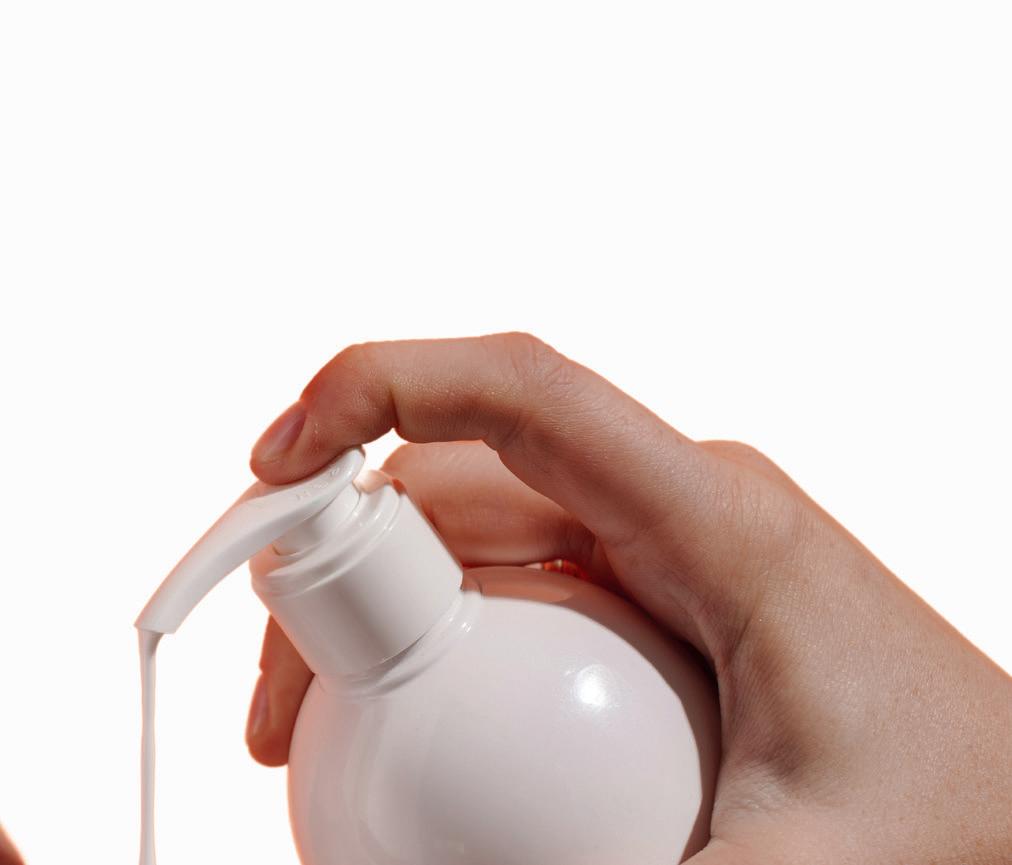


Natural ingredients Palm Oil free Water free Cruelty free











Skin problems such as eczema and psoriasis can be distressing to adults or children. We look at the causes and treatments
Eczema, also known as atopic dermatitis, is a common skin condition characterised by inflammation, redness, and itching. Though not contagious it is a chronic condition that can affect people of all ages and is often seen in infants and children.
As explained by charity Allergy UK (www.allergyuk.og ), eczema often results from a combination of genetic and environmental factors. People with a family history of allergic conditions, such as asthma or hay fever, may be more prone to developing ‘atopic’ eczema.
The most common types of eczema is a result of an allergen. Atopic dermatitis, the most prevalent form, often begins in childhood and is associated with a family history of allergic conditions. Contact dermatitis is triggered by contact with specific substances or allergens such as soaps or certain plants.
Symptoms of eczema often include itching, red or inflamed skin, dry and sensitive skin which may become cracked and scaly, and skin inflammation.
Eczema most often affects the hands, insides of the elbows, backs of the knees and the face and scalp in children.
Common treatments include the use of emollients (moisturisers) – used every day to stop the skin becoming dry, and topical corticosteroids – creams and ointments used to reduce swelling and redness.
As explained by the Psoriasis Association (www.psoriasis-association.org.uk), psoriasis is an immune condition, which causes symptoms on the skin and sometimes the joints.
When a person has psoriasis, their skin replacement process speeds up, taking just a few days to replace skin cells that usually take 21-28 days.
This accumulation of skin cells builds up to form raised ‘plaques’ on the skin, which can also be flaky, scaly, red on caucasian skin, darker patches on darker skin tones, and itchy.
Treatments for psoriasis include topical creams and ointments, phototherapy, where the skin is exposed to certain types
of ultraviolet light, and oral and injected medications that work throughout the entire body. ■
Goat To it
Goats’ milk has the same pH as human skin, so when you cleanse with a goat milk product, you do not disturb the acid mantle, or the skin’s natural microbiome. Goats milk contains many beneficial nutrients including Vitamin A and Lactic acid which helps to break down dead skin cells, and when blended with natural oils helps moisturize and rejuvenate the skin. This makes goat milk products a great option for people with sensitive skin issues, like eczema or psoriasis. Goats’ milk skin products from Goats of the Gorge (www.goatsofthegorge.com) are cruelty free, palm oil free, surfactant free and water free.





ADHD can be di cult to diagnose, and even harder to treat. But there are alternatives to the medications which can often have undesirable side-e ects
ttention Deficit Hyperactivity Disorder, or ADHD, is a developmental neurological condition which a ects behaviour. People with ADHD can seem restless, may have trouble concentrating and may act on impulse. Symptoms of ADHD tend to be noticed at an early age and may become more noticeable when a child’s circumstances change, such as when they start school.
Most cases of ADHD are diagnosed when children are under 12 years old, but sometimes it’s diagnosed later in childhood. In many cases, ADHD is not recognised when someone was a child, and they are diagnosed later as an adult.
Sharon Bardsley, founder of Cognitively (www.cognitively.co.uk), says: “I’m determined to help those with ADHD, and I developed Cognitively Focus supplement for those who like my daughter have a di icult journey with traditional ADHD medication and don’t know where to turn. Her side e ects gave her hallucinations and crippling anxiety. It helps the whole person, from focus to the o en overlooked areas of emotional
regulation, anxiety and mood, and the ingredients are all at therapeutic doses. As a mum, I knew how important this was and its why my product is unique. It can help those waiting years for a diagnosis, those struggling from medication side a ects, those struggling with supply and those who want a medication holiday. It’s a synergy of vitamins, minerals, amino acids, Chinese and Ayurvedic remedies and is all in one daily dose given in a chocolate flavoured drink.”
The symptoms of ADHD may improve with age, but many adults who were diagnosed with the condition at a young age continue to experience problems. People with ADHD may also have additional problems, such as sleep and anxiety disorders.
The important thing to understand is that many children go through phases where they are restless or inattentive, but this does not necessarily mean they have ADHD. The first step to diagnosis, though, is to discuss your concerns with your child’s teacher, their school’s special educational needs co-ordinator (SENCO)
or a GP if you think their behaviour may be di erent from most children their age.
Looking a er a child with ADHD can be a challenge, as they may have problems in areas such as sleeping, listening to and carrying out instructions, being organised and dealing with social occasions.
The exact cause of ADHD is unknown, though there may be a genetic element, and an association with premature birth, low birthweight, smoking or alcohol or drug abuse during pregnancy.
Though there is no ‘cure’ for ADHD, appropriate educational support, advice and support for parents and a ected children can be given along with medicines such as methylphenidate or lisdexamfetamine.
Unfortunately these medical treatments have common side-e ects –methylphenidate for instance can cause increase in blood pressure and heart rate, loss of appetite, trouble sleeping, headaches, stomach aches, depression, anxiety and aggressiveness; but cognitive enhancement supplements, known as nootropics, present a promising alternative line of treatment. ■





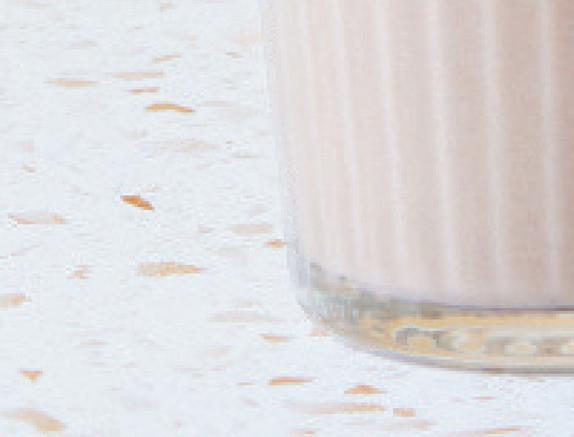












































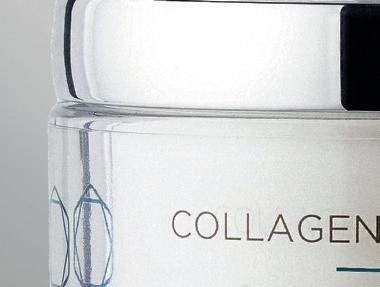
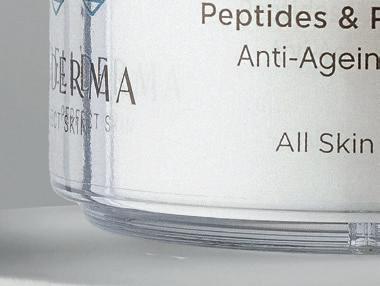










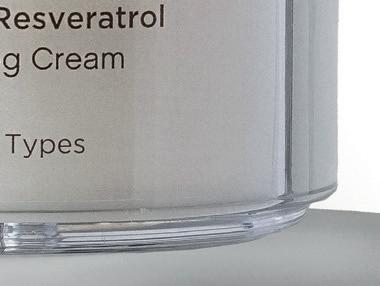





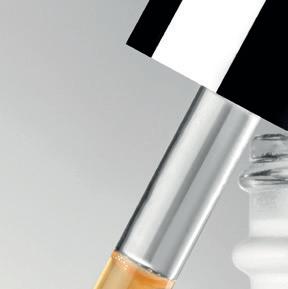
































Skincare products can contain many unfamiliar ingredients – so do you know what they are and what they can do for your epidermis?
kincare has become an integral part of modern self-care, with a focus on achieving healthy, radiant skin through scientificallybacked ingredients. But some of the ingredients in skincare products aren’t immediately familiar – so what are they, and what can they do for you? We look at some of the most common and beneficial.


Collagen is the most abundant protein in the human body, providing structure and elasticity to the skin. Dr Dev Patel of Cellderma (www.cellderma.com) says: “Collagen creams primarily fill lines, o ering the illusion of wrinkle reduction but not true skin regeneration. For e ective collagen renewal, I recommend bio-peptides and growth factors, which stimulate the skin’s natural collagen production, resulting in firmer and more youthful skin. These advanced ingredients provide lasting benefits beyond surfacelevel improvements.”

regenerating properties, helping to repair and strengthen the skin barrier. Darutoside promotes collagen synthesis, enhancing skin elasticity and firmness, and has antiinflammatory benefits, making it useful for soothing damaged or irritated skin.
Neuropeptides are small protein-like molecules that act as messengers in the skin, promoting communication between cells. They play a crucial role in regulating various skin functions, including collagen production, inflammation response, and cell turnover. By stimulating the skin’s natural repair processes, neuropeptides help reduce the appearance of fine lines and wrinkles.





Ceramides are lipids (fatty or waxy molecules) naturally found in the outermost layers of the skin. They are essential for maintaining the skin’s barrier function, protecting against environmental aggressors, and preventing moisture loss. With age and exposure to harsh elements, the natural ceramide levels in the skin diminish, leading to dryness, irritation, and increased sensitivity. Topical ceramides in skincare products help to restore the skin’s barrier.
So, next time you are choosing a skin care product, take a look at the ingredients, and hopefully you will now understand their unique benefits, and how you can use them to tailor your skin care routine for optimal results. ■


Hyaluronic acid (HA), naturally occurring in the skin, has the ability to hold up to 1,000 times its weight in water, making it an exceptional moisturiser. HA not only hydrates but also helps to create a protective barrier for the skin, locking in moisture and giving the skin a smooth, dewy appearance.




Derived from the plant Siegesbeckia orientalis, darutoside is a lesserknown but highly e ective ingredient, renowned for its skin-




Veganism is a philosophical belief that avoids using animals for food, clothing and any other purpose as far as is possible and practicable. But is it the best way to bring up your child?

Veganism is becoming increasingly popular as people realise that eating meat can be bad for your health and for the environment, as well as being morally questionable. But can a vegan diet, and indeed a vegan lifestyle, be a healthy and developmentally sound one for your child?
Veganism is a philosophical belief that avoids using animals for food, clothing and any other purpose as far as is possible and practicable. This means that anybody following a vegan diet avoids any ingredients derived wholly or partly from an animal, including meat, fish, eggs, dairy and honey. It’s certainly a more demanding dietary and lifestyle choice than, say, vegetarianism, which can include dairy products, or pescatarianism, which excludes red meat and poultry but includes seafood.
There are many reasons one might choose to follow a vegan diet/lifestyle, including:
h Animal welfare – the use of animals in farming and slaughter practices go against vegan beliefs
h Health reasons – well-planned vegan diets are associated with a reduced risk of heart disease, diverticular disease, type 2 diabetes and some forms of cancer
h Planetary health – vegan diets can reduce land use by 76% and cut greenhouse gas emissions in half h Religion – some religions such as Buddhism and Rastafarianism encompass a vegan diet
Before 2015, veganism accounted for around 0.25 percent of the UK adult population, quadrupling to around 1 percent by 2018. By 2022 about 1.35 percent of the adult population were vegan – more than 700,000 people. This makes veganism one of the fastest growing lifestyle movements, with almost half in the 15–34 age category. This suggests that the number of parents raising vegan children is also likely to be increasing and, as with any diet, nutritional planning is key. Veganism falls within the scope of international human rights provisions, which means in the UK
vegan rights are protected under human rights and equality laws, specifically the Equality Act of 2010.
Well-planned vegan diets can support healthy living in people of all ages, a statement supported by the British Dietetic Association. The Vegan Eatwell Guide gives a visual overview of food groups including carbohydrates, protein, fats and fruit and vegetables. The guide also gives examples of foods within these groups and should be included in a balanced vegan diet. Like the original Eatwell Guide, this is not applicable to children under two, whose nutritional needs slightly differ to account for the rapid growth and development that occurs during this life stage.
The table below shows how children’s nutritional requirements vary from ages 1–10, reflecting the growth and development needs of each age group. Many of us were not raised on vegan diets, and making smart nutritional swaps
Recommended
is an essential part of well-planned vegan diets for everyone, especially children. So how do vegan families make sure they aren’t missing key nutrients?
Calcium is important to keep your bones strong. For children not eating dairy, they can get enough calcium in their diets from calcium-fortified dairy alternative drinks and yoghurts. Other rich sources of calcium include fortified ready oats and calcium set tofu (check the ingredients list for calcium firming agents e.g. calcium sulphate). In the UK, wheat flour (except wholemeal) has additional nutrients added to it, including calcium, during the manufacturing process. Some varieties of shop-bought bread also have extra calcium added, making them a particularly rich source.
Other plant foods containing lower amounts of calcium make useful contributions to overall intake, including haricot beans, okra and kale, but should not be relied on as main sources. »
Source: https://assets.publishing.service.gov.uk/media/5a749fece5274a44083b82d8/government_dietary_recommendations.pdf
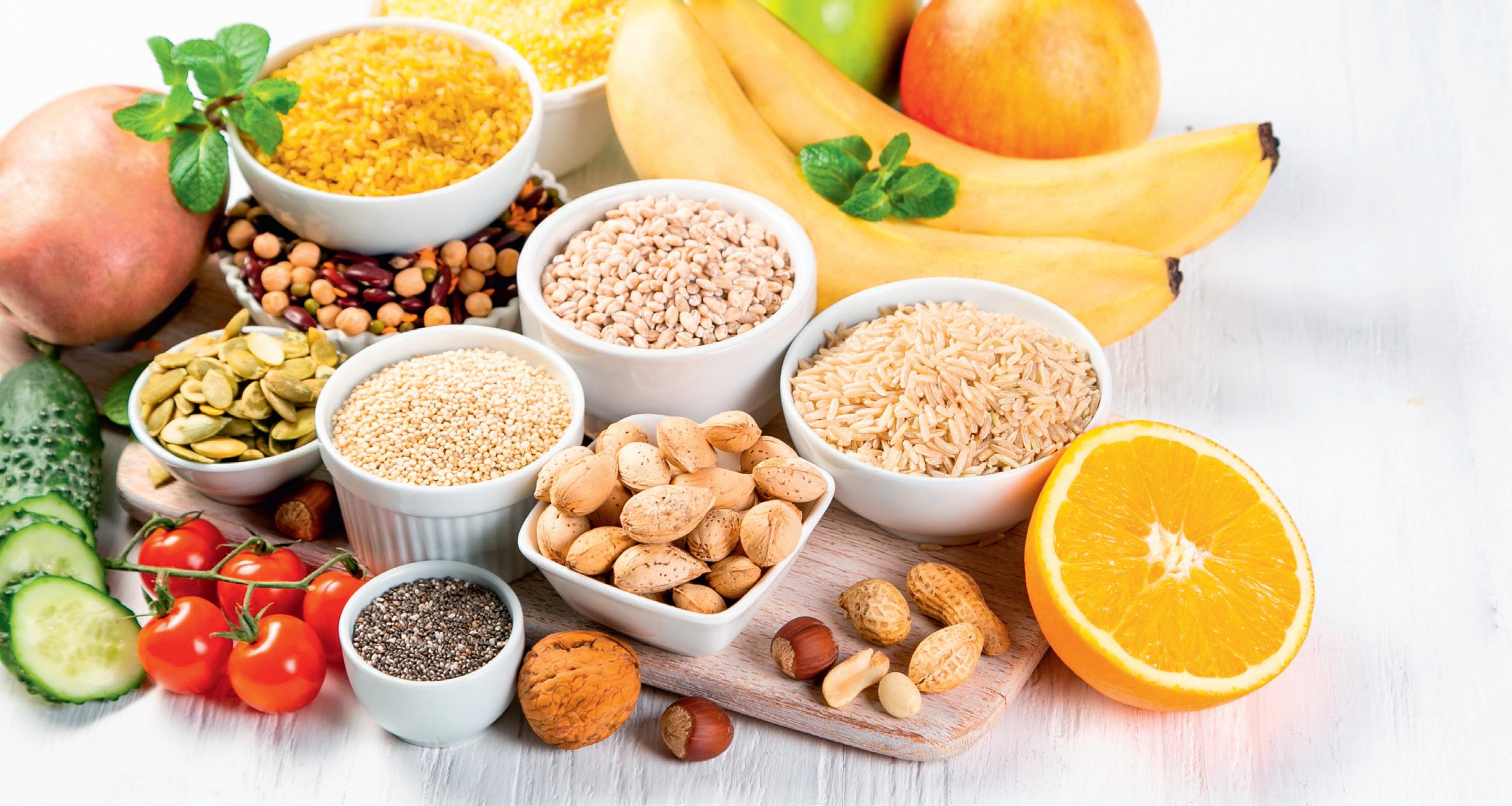
Protein helps children’s bodies to grow and repair, giving structure to their muscles and bones and contributing towards a healthy immune system. Quality plant proteins contain essential amino acids, which are protein building blocks that we must get from food as our bodies do not make them automatically.
Children do not have high protein requirements, and too much animal protein in early years has been associated with the development of overweight and obesity in later life. Vegan children can easily get enough protein by eating quality sources such as beans, peas, lentils, nuts, seeds and tofu in daily meals and snacks. A varied diet featuring starchy carbohydrates and quality sources of protein will ensure they get some of every essential amino acid across the day without needing to search for ‘complete’ proteins at every meal. Many of these foods are also rich in fibre and micronutrients, including zinc and iron.
Zinc helps to support our immune system, which is important for fighting infections and keeping us well. Rich sources of zinc include peas, lentils and wholemeal bread.
Iron helps to make sure our bodies have enough oxygen. If we don’t have enough iron, we could become very tired, limiting our daily activity. Children of all ages can get enough iron in their diets without eating meat by eating fortified breakfast cereals, peas, lentils, quinoa, tofu, dried figs and apricots.
The iron we get from plants is known as non-haem iron, which our bodies absorb less efficiently than haem iron from animal products. Despite this, there is no evidence that vegans are more at risk of iron deficiency, and combining iron-rich foods with a source of vitamin C can boost the amount of iron our bodies absorb from plant foods. Examples of vitamin C rich foods include bell peppers, broccoli, Brussels sprouts, kiwi fruit, pineapple, berries and citrus fruit.
Eating a variety of vegetables also helps our bodies get the vitamins and minerals it needs. The colour of a plant is often an indicator of the vitamins it contains. Orange coloured fruits and vegetables such as butternut squash, carrots and cantaloupe melon provide our bodies with vitamin A, which is needed to keep our eyesight healthy. Leafy greens such
as kale and spinach can also provide vitamin A, but focussing on these types of vegetables is a great way to get enough vitamin K. Vitamin K plays a role in keeping your bones and kidneys healthy and is found in Brussels sprouts, cabbage, kale, broccoli, spinach, spring greens, spring onions and kiwi fruit. Eat plenty of fruit and vegetables to make sure you meet your needs – ‘eating a rainbow’ is a good way to ensure you get a variety of vitamins from your food.
The UK Department of Health advises vitamin D supplementation for all breastfed babies from birth, and vitamin A, C and D supplementation for all infants six months to five years of age consuming less than 500 ml of infant formula daily.
Other nutrients deserving attention in a vegan diet, including in childhood, are iodine, vitamin B12 and selenium.
Vitamin B12 is needed to speed up chemical reactions, and it is really important to include a reliable source of vitamin B12 in a child’s vegan diet. Deficiency can develop more rapidly in infants, who are more vulnerable to permanent damage. Symptoms of deficiency include loss of appetite and failure to thrive.
Vitamin B12 is not produced by plants, and fortified foods and supplements are the only reliable sources for vegans. Fortified foods include dairy alternatives, breakfast cereals, vegan spread and nutritional yeast flakes, but it is always worth checking the label as there is no standard requirement for fortification.
Vitamin B12 is better absorbed in frequent small amounts, which is why recommendations vary considerably for fortified foods and supplementation. Although recommended daily allowance (RDA) may be lower, research suggests that aiming for a daily intake of 1 mcg (microgram) of vitamin B12 from fortified foods from one year of age and increasing to 2 mcg by the time they are seven years old will help your child to absorb enough vitamin B12, especially if their intake of fortified foods is spread out across the day as much as possible.
In practical terms, 1 mcg of vitamin B12 can be achieved by drinking 300 ml
of fortified plant milk, which typically contains 30–40 mcg per 100 ml. Sprinkling a teaspoon of nutritional yeast flakes over a pasta dish or baked beans adds over 2 mcg of vitamin B12.
Alternatively, a vitamin B12 supplement, such as VEG 1 Baby and Toddler, is an option to meet vitamin B12 needs. Research has not shown vitamin B12 to have toxic effects in high doses, so there are no upper limits set.
Selenium is a mineral that makes up important enzymes to support the body’s chemical reactions, but it is not an abundant mineral in plant-based foods, as most plants do not require selenium for growth.
Whilst one ground Brazil nut may meet the daily selenium needs for children, this can be impractical for little ones, and supplementation is usually considered the most reliable option.
Iodine is essential for making thyroid hormones, particularly needed for brain growth and development in childhood. Similar to selenium, many plants do not require iodine for growth, making it a scarce mineral in vegan diets.
Some seaweed varieties are iodinerich, but amounts vary significantly and, in some cases, can be too high, making it dangerous for both adults and children to rely on. Nori and fortified plant milks can be a good source of iodine, however, again supplementation is considered the most reliable option in vegan diets.
Vitamin D aids calcium absorption for strong healthy bones. Vitamin D deficiency is common in the UK across all dietary patterns. Breastfed infants should be given vitamin D drops from birth as they will not be obtaining vitamin D from sunlight or formula. »

For formula fed infants, supplementation is not required until they are drinking less than 500 ml daily.
Supplements containing vitamin D2 or vitamin D3 from lichen are vegan friendly sources, but many supplements contain vitamin D3 from lanolin in sheep’s wool, making it unsuitable for a vegan diet.
VEG 1 Baby and Toddler provides the nutrients deserving attention for vegans from six months to five years old.
We all need some fat in our diets, including the essential omega-3 fat alpha-linolenic acid (ALA). We have to consume ALA because our bodies cannot make this nutrient. It is used to make long-chain omega-3 fats, such as eicosapentaenoic acid (EPA) and docosahexaenoic acid (DHA) which for non-vegans are found in oily fish. Omega-3 fats have an important role in supporting eye health, skin health, our immune system, and brain and nerve development.
Ground linseeds, chia seeds, hemp seeds and walnuts are all rich sources of omega-3 fats for vegans.
Although there are no UK government RDAs for omega-3 fats until the age of four, the European Food Safety Authority (EFSA) recommends a daily DHA intake of 100 mg (milligrams) for infants from six months to two years old, and a daily EPA and DHA intake of 250 mg for older children.
Although children may be able to meet this by eating a variety of foods rich in ALA, omega-3 supplementation in the form of micro-algae is available and should certainly be considered, particularly if your child is not regularly consuming rich sources of ALA.
Now that we’ve considered how to avoid nutritional pitfalls in a vegan diet, how do we put this into practice? The table at right shows an example of a daily meal plan for a vegan toddler using the following principles:
1. Prioritising iron-rich foods in each meal, choosing fortified ready oats, tofu, hummus and lentils
2. Opting for calcium-fortified alternatives

when offering plant-based milk and yoghurt
3. Including a rich source of omega-3 fat e.g. chia jam
4. Including a variety of different coloured fruits and vegetables in meals and snacks
h Vegan diets provide children with an opportunity to increase fibre and lower saturated fat intake, but do not assume that any vegan diet is healthy. It is still important to limit highly processed foods high in salt, fat and sugar
h Opt for calcium-fortified plant milks to help your child reach their daily calcium target
h Choose an appropriate supplement to
An Example Meal Plan for a Vegan Toddler
obtain nutrients deserving attention for little ones, such as The Vegan Society’s VEG 1 Baby and Toddler for children under five
h Make sure that your child’s daily diet includes a really rich source of vegan omega-3 fats, and/or consider a microalgae supplement
h Prioritise iron-rich foods and pair them with foods high in vitamin C
h For more information you can go to vegansociety.com/nutrition where we have nutrition guides available for all life stages
You can find out more about veganism and the VEG 1 Baby and Toddler multivitamin product from the website at www.vegansociety.com ■
Breakfast Ready oats made with fortified unsweetened soya milk + frozen berries mixed with chia seeds (chia jam)
Snack Plain fortified soya yoghurt + mango strips
Lunch Baked firm tofu fingers with spaghetti + carrot and courgette ribbons
Snack Rice cake, hummus and cucumber sticks
Dinner Red lentil and sweet potato dhal with cauliflower florets
Drinks Water, calcium-fortified plant milk










Whooping cough, clinically known as pertussis, is a bacterial infection which a ects the lungs. The first signs of infection are similar to a cold, such as a runny nose and sore throat, but after about a week, the infection can develop into coughing bouts that last for a few minutes and are typically worse at night. Young babies may also make a distinctive ‘whoop’ or have di culty breathing after a bout of coughing, though not all babies make this noise which means whooping cough can be hard to recognise.



Data published by the UK Health Security Agency (UKHSA) shows cases of whooping cough continue to increase. Why is this, and what are the risks?
Data published in May by the UK Health Security Agency (UKHSA) showed cases of whooping cough continue to increase with 1,319 cases confirmed in March. This follows 556 cases in January and 918 in February, bringing the total number of cases in 2024 to 2,793.
Sadly, in the first quarter of 2024 (January-March), there have been five infant deaths. Young infants are at highest risk of severe complications and death from whooping cough. Updated estimates of vaccine e ectiveness in pregnancy shows high levels of protection (92 percent) against infant death.
During this quarter, while most cases (50.8 percent, 1420) were in those aged 15 years or older who usually get a mild illness, the rates of whooping cough remain highest in babies under three months of age.
important to protect vulnerable young babies from serious disease.
Dr Gayatri Amirthalingam, Consultant Epidemiologist at UK Health Security Agency, says: “Vaccination remains the best defence against whooping cough and it is vital that pregnant women and young infants receive their vaccines at the right time.


Whooping cough cases have been rising across England, as well as in many other countries, since December 2023 due to a combination of factors. Whooping cough is a cyclical disease that peaks every three to five years. The last cyclical increase occurred in 2016. However, in common with other diseases, cases fell to very low numbers during the pandemic due to restrictions and public behaviours. A peak year is therefore overdue. The impact of the pandemic also means there is reduced immunity in the population.
Uptake of vaccinations that protect against whooping cough have fallen in recent years across the country – in both the programme for pregnant women and the infant programme. Timely vaccination in pregnancy and in infancy are both
“Pregnant women are o ered a whooping cough vaccine in every pregnancy, ideally between 20 and 32 weeks. This passes protection to their baby in the womb so that they are protected from birth in the first months of their life when they are most vulnerable and before they can receive their own vaccines.
“All babies are given three doses of the 6-in-1 jab at 8, 12 and 16 weeks of age to protect against whooping cough and other serious diseases such as diphtheria and polio with a pre-school booster o ered at 3 years 4 months.
“Whooping cough can a ect people of all ages but for very young babies it can be extremely serious. Our thoughts and condolences are with those families who have so tragically lost their baby.”

child show symptoms ask for an urgent GP appointment or get help from NHS 111.”
Babies under six months old with whooping cough have an increased chance of having problems such as:

NHS National Medical Director, Professor Sir Stephen Powis, said: “With cases of whooping cough continuing to rise sharply across the country, and figures sadly showing five infant deaths, it is vital that families come forward to get the protection they need.
“If you are pregnant and have not been vaccinated yet, or your child is not up-to-date with whooping cough or other routine vaccinations, please contact your GP as soon as possible, and if you or your
Dehydration
Breathing di iculties
Pneumonia
Seizures (fits)
Whooping cough is less severe in older children and adults, but coughing may cause problems including:
Sore ribs
Hernia
Middle ear infections
Pee leaking out when you cough (urinary incontinence)
Call 999 or go to A&E if:
Your or your child’s lips, tongue, face or skin suddenly turn blue or grey (on black or brown skin this may be easier to see on the palms of the hands or the soles of the feet)

You or your child are finding it hard to breathe properly (shallow breathing)
You or your child have chest pain that’s worse when breathing or coughing – this could be a sign of pneumonia
Your child is having seizures (fits)
If anyone in your family is diagnosed with whooping cough, it’s important they stay at home and do not go into work, school or nursery until 48 hours a er starting antibiotics, or three weeks a er symptoms start if they have not had antibiotics. This helps to prevent the spread of infection, especially to vulnerable groups, including infants. However, vaccination remains the best protection for babies and children. ■


Head lice and nits are a bugbear, but can be dealt with either medically or by combing. We get down to the nitty-gritty
Head lice and nits are very common in young children and their families, and can’t be prevented. They are not caused by dirty hair and are picked up by head-tohead contact. They can be difficult to spot in your hair, and often the only symptom is itchiness, so it’s important to carry out weekly checks on school age children.
Head lice are tiny wingless insects that live in hair, and nits are the empty egg cases attached to hair that head lice hatch from.
You can find live lice using a special fine-toothed comb (detection comb) which can be bought online or at pharmacies. You should treat head lice as soon as you spot them, but you don’t need to see a GP. It is important to also check everyone you live with, or have close contact with, and start treating anyone who has head lice on the same day, or you will continue to pass them back and forth.
There’s no need to keep your child off
school if they have head lice (though you should tell other parents in the class so that they can check and treat their own children too). There is also no need to deep clean your house, but you may want to put clean bedding on the beds and clear out any hair from your hair brushes and hats.
The usual treatment for head lice is to comb out any knots and tangles from the hair, wash with ordinary shampoo, apply lots of conditioner to dry hair, and comb the whole head of hair, using the detection comb, from the roots to the ends, then comb again. Section long hair before you start combing. Comb every third day until
there is no evidence of lice or eggs coming out of the hair.
If wet combing has not worked or is not suitable, you could try a medicated lotion or spray from pharmacies, supermarkets or online. Some treatments need to be repeated after a week to kill any newly hatched lice. Check the pack to see if they’re okay for you or your child to use, and if they don’t work, speak to a pharmacist about other treatments.

The Nitty Gritty NitFree micro-spiral comb from www.nittygritty.co.uk is designed to remove not only the smallest head lice and nits, but also the unhatched ‘live’ head louse eggs, which is the main cause of repeated infestations. It can be used without any need for chemical treatments, either with ordinary hair conditioner, or with Nitty Gritty Aromatherapy Head Lice Solution. You will also find a wealth of useful information about head lice on the website. ■


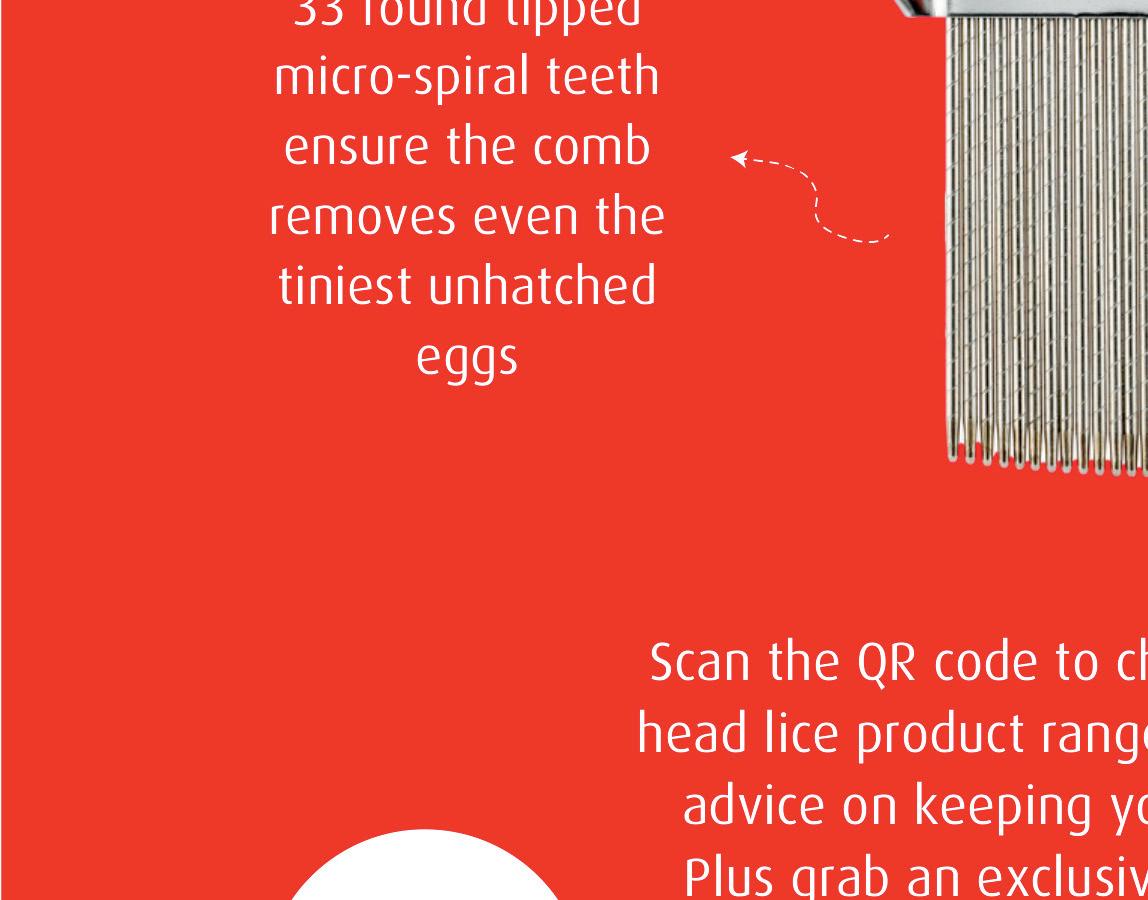





Child protection charity the NSPCC reports that its help service Childline receives nearly 40 contacts per day from children who feel unhappy.
Over the past year, Childline has delivered over 14,000 counselling sessions about low mood or unhappiness to children and young people who have contacted the service.
Delivering 14,253 counselling sessions last year with children struggling with feelings of low mood or unhappiness, trained Childline counsellors know how vital it is for young people to seek support when they’re struggling with their mental health.
The NSPCC has launched a new Childline campaign, ‘Find Your Calm’, to encourage all children to learn di erent ways of coping with frequent low mood to find what works for them.
Unhappiness was the second highest sub-concern seen by Childline under the main concern of ‘mental health’. Nearly 40 percent of these counselling sessions were with young people aged between 12 and 15. Many of the young people who spoke to Childline on this topic were also concerned about issues such as loneliness, confidence, loss and anxiety.
A new Childline film follows four teenagers going through their own individual coping methods.
While Childline does provide counselling for issues centred around abuse, young people can talk to its trained counsellors about any concern a ecting them.
“I’ve been really struggling with low mood recently. I’ve not been able to get out of bed as I don’t have any motivation. I feel numb but really down, it’s hard to explain. I don’t speak to any of my family members about anything and I have a counsellor, but I don’t know when I am due to see them again and the CAMHS crisis lines are only open in o ice hours. I wouldn’t ring anyway, so it’s really only Childline I can speak to when I feel like this” said one 14-year-old girl speaking to Childline.
Childline o ers a variety of ways in which young people can seek support. This includes round-the-clock counsellors available via phone and direct messaging, as well as the option to send an email.
There are also plenty of online resources to support children on the Childline website, www.childline.org.uk, and moderated message boards let young people speak with each other about the concerns they may be having.
“We know that many children are struggling with feelings of unhappiness. There are lots of reasons why this could be – problems at home, with their friends, societal factors or schoolwork” says Shaun Friel, Childline Director, adding: “We would encourage all children to reach out for support with these feelings, and Childline is here to listen. It doesn’t matter how small the concern may seem – we are here for every young person.”
Parents are being warned to avoid certain colours of swimwear for their children this summer because they can’t be seen underwater.
According to a survey by a holiday specialist, twothirds of children wear blue, white or grey swimwear which is not visible underwater, meaning that if they get into trouble swimming, they are extremely difficult to spot. The report calls for the government to review legislation around selling blue, white and grey-coloured swimwear marketed at children.
The company tested the most popular shades of swimwear at a depth of 2m to analyse which colours could be seen and blue, white and grey became almost invisible at the short depth.
Olympic swimmer Rebecca Adlington OBE backs the campaign and says she was unaware of the dangers.
“I’ve swum my entire life and I’ve only recently
become aware that there are certain colours that can’t be seen underwater,” she explains. “As a parent, I feel like I should have been aware of this sooner.
“I’m urging the future government to review the legislation around selling blue, white and grey swimwear to children so that retailers are being safe and helping look after our children by not selling unseeable swimwear that could put them in danger.”
“At the Royal Life Saving Society UK, it is our mission to ensure that everyone enjoys water safely,” says Matt Croxall, RLSS UK’s charity director. “We’re delighted to raise awareness of the importance of water safety.”
The charity is urging parents to choose brightly coloured swimwear for their children while planning their holidays. “Brightly coloured swimwear makes it even easier to keep your child under constant supervision when playing and swimming in the water,” he added.

Are parents equipped enough to support their children’s education?


Does your child struggle with maths? Do you struggle with maths? It’s okay to admit if you need support to help improve your child’s maths skills; you’re not alone. According to the Organisation for Economic Co-operation and Development (OECD) data, 57% of English adults have a numeracy skill equivalent to or lower than Level 2 (UK Entry Level 3, expected at age 9 – 11).
The problem these statistics highlight is the knock-on effect on the next generations. If a parent’s numeracy skills are low, this could have an impact on their child’s numeracy.
AE Publications understands the struggle that parents face. For over two decades, AE Publications’ books have not only provided
solid study programmes for children, but also contain the necessary information and knowledge for parents to be able to support their child in maths and English.
We know that parents are desperate to help their children, but often are not confident themselves or find that techniques have changed since they were at school.
AE Publications has developed a tried-and-tested method of improving numeracy. The fi rst step is always to understand what level your child is at. This can be discovered by your child taking the AE Publications Free Online Maths Test , as it covers all the main areas of the maths curriculum for school years 3 to 6. Before

a child takes the test, we also like to encourage parents to take the test. It’s a great way to fi nd out what your child is learning, and for parents to see for themselves how much they remember from their school days.
The AE Publications free online maths test provides feedback on how your child is currently performing. Before any programme of study is embarked upon, it is crucial to know exactly what difficulties your child may be facing and where they are succeeding.
AE Publications has a full range of workbooks, testbooks and testpacks that have been used by thousands of youngsters alongside their parents, tutors and teachers – with enormous success
The maths range helps build your child’s mathematical knowledge and numeracy. The workbooks are simple to follow, with step-bystep instructions; just pick up a book and work through it. Parents can work together with their child, as this is often a step towards independent learning.
The range has been created by Dr Stephen Curran, a highly experienced teacher, tutor, academic and former government education adviser. The workbooks provide clear explanations with straightforward how-to methods, followed by worked examples and plenty of practice questions.
Dr Curran comments: “I know from my professional experience how important education and learning are, and teaching is my passion.
“I helped advise the government on the maths curriculum, and since then the UK has been moving up the PISA world rankings in that subject.
“I began tutoring privately in 1990 and use methodologies that are easily understood by children.
“This same methodology has been used by AE Tuition in its tuition centres for over 35 years.




“The name says it all - Accelerated Education Publications. We believe in enhancing children’s performance in the key subject areas of maths and English.
“I often receive messages of thanks from those who studied with us or have used our workbooks – and many are now using the workbooks with their own children.


AE Publications has published over 120 titles in maths, English, verbal reasoning and non-verbal reasoning for children in Year 3 to Year 7. The range is ideal for core support to advance children’s learning and to improve their chances in entrance exams, such as the 11-plus, and SATs.
Why not take the AE Publications Free Online Maths Test yourself? Use the QR code or link below. tests.aepublications.co.uk
“I know from my professional experience how important education and learning are, and teaching is my passion.”
Dr Stephen Curran
You can also receive a 10% discount off the range by using the exclusive promocode MathsSuccess10 when you visit aepublications.co.uk

If the thought of maths lessons makes you run screaming, think what it’s like for the kids. Is there any way to make maths fun?
Mathematics is often perceived as a challenging subject, particularly because the ways maths is taught these days can have little resemblance to the way parents learned it when they were young. Unfortunately maths, which forms the basis of technology and the physical sciences, is becoming more and more essential for career development, so if you don’t want you kids to be left behind, it’s important to find some strategy to make them take to and enjoy maths, whether it involves home tutoring, remote learning, classroom instruction, or the use of mock exams.
One of the greatest advantages of home tutoring is the ability to tailor lessons to a child’s specific needs and interests. Personalized learning can help address individual challenges and build on strengths. Tutors can incorporate a child’s hobbies and interests into maths problems to make the subject more relatable and engaging. For instance, if a child loves sports, maths problems can involve calculating scores or statistics.
Using interactive tools and games can transform maths from a mundane subject
into an exciting adventure. Board games, apps and online platforms can provide interactive and enjoyable ways for children to practice maths skills. These tools often incorporate elements of competition and rewards, which can motivate children to participate actively and improve their skills.
Integrating technology into maths education can enhance engagement and make learning more interactive. Tools like graphing calculators, educational software, and maths-based video games can provide diverse ways for children to explore and understand mathematical concepts. Virtual reality (VR) and augmented reality (AR) are emerging technologies that can offer immersive learning experiences, such as exploring geometric shapes in a 3D environment.
Hands-on activities, such as building models, cooking, or shopping, can also make maths more tangible and practical. Measuring ingredients, budgeting for groceries, or constructing a model using geometric shapes are excellent ways to apply maths in real-life contexts. These activities help children understand the practical applications of maths, making it more relevant and engaging.
In remote learning environments, virtual manipulatives and educational apps can play a significant role in making maths fun. Apps can offer interactive and visually appealing ways to learn maths concepts. Virtual manipulatives, such as online abacuses or fraction bars, allow children to experiment with maths problems visually and interactively.
The ‘gamifying’ of mathematics lessons can also significantly enhance engagement and motivation in remote learning. Online platforms can turn maths learning into a game, incorporating elements such as points, levels, and rewards. By making the science exercise part of a larger game, children can find joy in solving problems
and progressing through challenges. Use of online collaborative tools, such as Google Classroom or Microsoft Teams, can help create a sense of community and collaboration among students. Group activities and competitions, such as maths quizzes or problem-solving challenges, can foster a fun and interactive learning environment. Collaborative tools also allow for real-time feedback and support from teachers and peers, making learning more dynamic and engaging.
In a classroom setting, interactive lessons can make a significant difference in how children perceive and enjoy maths. Teachers can use smartboards, projectors, and interactive whiteboards to present maths concepts in a visually appealing and interactive manner. Incorporating videos, animations, and interactive exercises can help break the monotony of traditional lectures and keep students engaged. Group activities and peer learning
can make maths more enjoyable and less intimidating. Cooperative learning strategies, such as “Think-Pair-Share” or “Jigsaw,” encourage students to work together to solve problems and explain concepts to each other. This collaborative approach not only makes learning fun but also helps children develop social and communication skills.
Setting up maths centres or stations around the classroom can provide a variety of activities for students to engage with. Each station can focus on a different maths skill, such as measurement, geometry, or algebra. Rotating through stations allows students to experience different types of activities and keeps them engaged through movement and variety. Activities can include puzzles, manipulatives, and hands-on projects.
Mock exams can be an excellent tool to make maths practice purposeful and structured. By simulating real exam conditions, children can familiarize themselves with the format and timing
of actual exams, reducing anxiety and building confidence. However, it’s essential to frame mock exams as a learning experience rather than a highstakes test.
Providing immediate feedback on mock exams is crucial for helping children understand their mistakes and learn from them. Positive reinforcement, such as praise and rewards for effort and improvement, can motivate children to keep practicing. Constructive feedback should focus on specific areas for improvement and strategies to tackle similar problems in the future.
Turning mock exams into a game can make the experience more enjoyable. For example, creating a “maths tournament” where students earn points for each correct answer and compete in a friendly competition can add an element of excitement. Rewarding students with certificates, badges, or small prizes can also motivate them to participate and perform their best. »

Most children in year 5 have not experienced sitting an important exam or learnt how to manage their feelings in the lead up to an exam. As the outcome of the 11+ exam may dictate a child’s educational journey over the next five years and beyond, it should not be their first exam experience. It’s a good idea to introduce them to the process via a mock exam that aims to ease children into the process. The mock exam does not just test academic ability, but also tests a child’s mindset, and enables them to see their own mistakes or misunderstandings. All of this is beneficial in giving children a taste of what can be expected on the day of the exam.
Using storytelling to teach maths can make abstract concepts more concrete and relatable. Creating stories or scenarios that involve maths problems can capture children’s imagination and make learning more enjoyable. For example, a story about a treasure hunt that involves solving maths puzzles to find the treasure can make maths feel like an adventure.
Connecting maths to real-world applications can help children see the relevance and importance of the subject. Projects that involve real-world problems, such as planning a garden, designing a playground, or conducting a survey, can make maths feel meaningful and practical. These projects can also help children develop critical thinking and problemsolving skills.
Celebrating achievements in maths, whether big or small, can boost confidence and motivation. Creating a maths ‘wall of fame’, holding maths celebrations, or awarding certificates for milestones can make children feel proud of their
accomplishments. Recognizing effort and progress, rather than just perfect scores, helps create a positive and encouraging learning environment.
Making mathematics fun for children is essential for fostering a love for the subject and building a strong foundation for future learning. Whether through home tutoring, remote learning, classroom instruction, or mock exams, there are numerous strategies to engage children and make math an enjoyable experience.
By incorporating interactive tools, hands-on activities, gamification, and realworld applications, educators and parents can transform maths from a daunting subject into an exciting adventure. Celebrating achievements and providing positive reinforcement further encourages children to embrace the subject with enthusiasm and confidence. With the right approach, every child can discover the joy of learning mathematics. ■


































































































How do you get your kids away from their digital devices and out in the fresh air? Try a treasure trail for a healthy family outing
It can be hard to drag your kids away from their tablets and mobile phones and get them out in the fresh air, but it’s important for their mental and physical health that you do it – the impact of overuse of digital devices on children can include poor sleep, bad posture and resulting strain on the back, neck and shoulders, wrist pain and carpal tunnel syndrome, eye strain, headaches, stress, obesity, and exposure to bacterial infection.
The trouble with getting kids outdoors is that easily get bored with just walking in the fresh air - competitive sport is one good solution, but another is to engage their brains with some form of mental challenge. An increasingly popular outdoor family pastime is the ‘treasure trail’. This can involve the whole family, providing exercise
by stealth while absorbing parents and kids in a mental challenge. See the website at www.treasuretrails.co.uk to see how it works!
Here’s how Treasure Trails work; there are treasure hunts, detective mysteries and spy missions in place in towns, villages, and cities all over the UK. Whether exploring a new place or looking for hidden treasures in your local area, with Treasure Trails you’ll see the sights, solve the clues, and above all, have fun with your family or team. You can either follow the clues on an app, or, if you want a real digital detox, download a PDF file and print it out, or have details of the treasure trail posted to you.
There are clues of all di iculties to solve, so it’s as much fun for the parents as the
little ones, and the backstory involving fun treasure, detective and spy themes will immerse kids as much as parents. The key is to get the whole family working together to solve the mystery or complete the mission.
Treasure trails are self-guided, with easy-to-follow directions, so the brilliant part is that there’s no need to book, and you can set o on your adventure whenever you like. There are treasure trails all over the country so you can search by location to find one convenient for you. Some treasure trails even include real prizes drawn from teams who submit correct answers to all the clues on the trail.
So the next time the sun’s out but the kids are glued to their digital devices, get them out and about on a treasure trail, and the whole family will be the winners! ■



1.
Choose your themed treasure hunt. Will you explore somewhere new or find hidden treasure on your doorstep?
2. 3.
Gather your fellow explorers. Will you be detectives, treasure hunters or spies for the day?
Have an adventure the whole family will enjoy. Will you solve the mystery and find the treasure? Head to www.treasuretrails.co.uk/dr-ranj and unlock an exclusive discount today!




Dads and male caregivers are being given a bum deal in toilets throughout the UK, according to a campaign that is pushing for a change in the law.
UK feminist organisation Love & Power, backed by Oxfam and the British Toilet Association (BTA), is campaigning for more access to nappy changing facilities for male caregivers.
Parents are being encouraged to join the organisation and track where facilities are available, as well as encourage their local restaurants, bars and council to provide baby changes for all.
The campaign is also pushing for legislative change that would make it a requirement for all restaurants and public toilets to have baby changing facilities available to men and women. Find out more at www.loveandpower.co.uk/bum-deal-campaign
“Every baby needs their bum changed at some point and it’s ridiculous to think that only mums can do that,” said Charlotte Fischer, a codirector of Love & Power. “Yet the vast majority of public toilets and many in bars and restaurants don’t have changing facilities at all, or only have changing facilities in areas used by women.”
Tottenham Hotspur football club has become the campaign’s first official “Fair Change” venue, after making sure there were nine accessible bathrooms that all caregivers could use in its stadium.
Donna-Maria Cullen, the executive director at Spurs, said the recognition “promotes the clear message that parenting is for all and dispels the notion that changing nappies is solely the job of the female caregiver”.
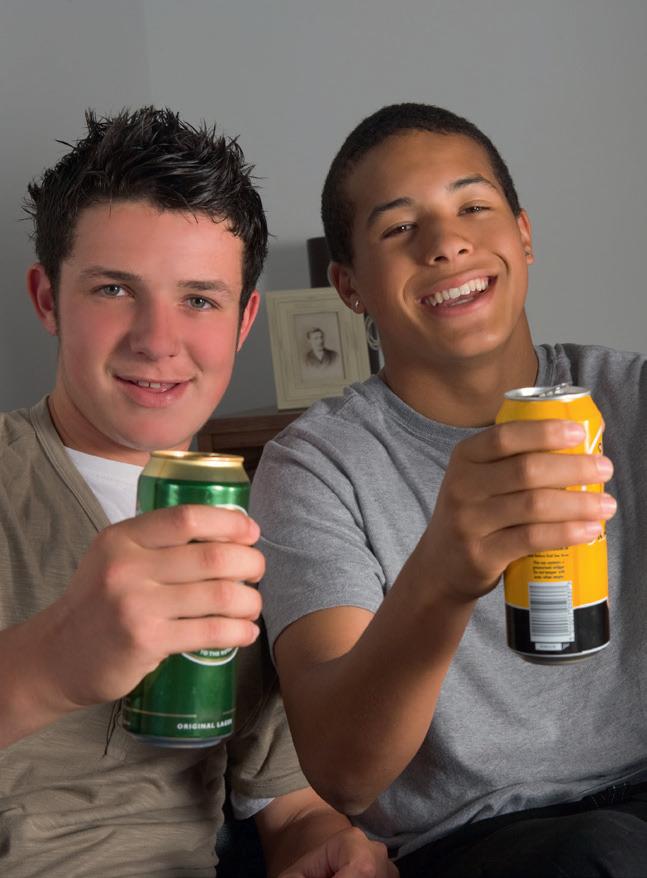
A report published in the journal Behavioural Sciences suggests that parental attitudes to alcohol can have an effect on children’s drinking habits in later life. But the results are not quite what you might expect: Professor Robert Leeman of Northeastern University says that either being too strict or too permissive about alcohol use can have a negative effect. “There’s anecdotal evidence that if we demystify alcohol for our kids, then they’ll be less likely to be at risk later on. That’s not what the data says” he comments, adding: “The reason why people use these substances is they feel really good in your brain. I think we need to be honest about that, tempered with (a reason) why you need to not use them or use them moderately when you’re of age.”
Charity Family Lives (www.familylives.org.uk) has published advice for parents with mental health problems. The charity says that if you are parenting while managing a mental health condition, it can be especially tough if you are not getting the right support. The most important tips are:
❖ It’s important to remember that many parents with mental health conditions are fully capable of giving their child a safe loving home, with excellent care. As with any illness, it is essential you ask for support when you need it, in order to ensure both you and your family stay safe and well
❖ Try to build a support network around you and your children, this may include friends, family, health professionals, teachers and support groups
❖ Agree on a crisis plan of action that both you and your children understand
❖ Remember that asking for help is a strength, it is vital you ask for help when you need it
The advice includes guidelines for anxiety, bipolar disorder, psychosis and obsessive compulsive disorder, and includes links to support organisations such as MIND, Anxiety UK, Bipolar UK and OCD UK. It also recommends Side by Side, ( sidebyside.mind.org.uk ) an online community at Mind, offering non-judgemental peer group support for any mental health condition.


In a recent opinion poll by charity Parentkind (www.parentkind.org.uk), 83 percent of 2,496 parents surveyed said they think smartphones are harmful to children, with almost eight out of ten parents of primary school children saying they would support a ban on smartphones for under-16s.
The charity says that there is increasingly clear evidence that smartphone and social media addiction is dangerous and harming young people, with one in five older teenagers saying that social media has led them to think that “life is not worth living”, and an estimate that 400,000 older teenagers are receiving suicide and self-harm content every month, and nearly half of teenage girls have received unwanted sexual images or messages from strangers through their smartphones.
Parentkind has published an open letter to politicians asking them to tell parents what they plan to do to protect children from the worst of social media, as well as their views on a smartphone ban for children under 16.
Among the charity’s suggestions is that the government should get tough on tech firms by forcing them to use the latest Facial Recognition Technology to turn a smartphone into a ‘dumb phone’, without access to social media apps and age-inappropriate content for children under the age of 16.
We all worry about children getting involved with drug or alcohol abuse, but many children are at risk living in households with parental substance misuse problems

Across the UK, many parents use alcohol and/or drugs recreationally. For many, whilst there may be periods of binge use, the overall impact on their daily functioning is likely to be minimal as will be the impact on children and young people in their household.
But for a proportion of children and young people, their parents or carers will be dependent on drugs and/or alcohol, and misuse of these substances can dictate the way the family functions, having a significant impact on the children and young people in the home. Where parents are using illegal drugs, there may be an impact on the family from dealers, criminal gangs and police involvement. Children and young people’s views about alcohol and drugs and their use
will be influenced by the value base and life experience of the adults in the household.
The Safeguarding Network, led by social workers John Woodhouse and Andrew Martin, recognises the increasing requirement on organisations to fill the void left by decreasing social care budgets, with little by way of support, particularly when something is not deemed to meet social care thresholds.
One of the concerns commonly addressed by the Safeguarding Network is that of parental substance misuse, the long-term misuse of drugs and/or alcohol by a parent or carer.
This includes parents and carers who: h Consume harmful amounts of alcohol
(for example, if their drinking is leading to alcohol-related health problems or accidents);
h Are dependent on alcohol; h Use drugs regularly and excessively; h Are dependent on drugs.
It also includes parents who aren’t able to supervise their children appropriately because of their substance use.
Any child can experience abuse and neglect. However, some children face additional vulnerabilities which either make them more likely to experience abuse and neglect, less able to report it, or for the signs not to be noticed so easily.
During pregnancy, drinking and drug use can put unborn babies at risk of birth defects, premature birth, being
born underweight and with withdrawal symptoms. Babies and young children are at increased risk due to their dependency on their carers to meet their needs. Furthermore, those with additional care needs such as low birth weight, disability or the impact of maternal drug use whilst pregnant are at increased risk of ongoing harm.
Adolescents who have been living in homes alongside parental substance misuse may start to display behaviours or mental health problems due to the long-term exposure. They may also engage in risky behaviours such as using substances themselves.
Children may take on additional caring responsibilities in the home due to their parents’ substance misuse, including caring for the parent and/or siblings.
Children with special educational needs and/or disabilities (SEND) are particularly vulnerable to all forms of abuse and neglect. Children with SEND living in a home with a parent with substance misuse issues are at increased risk of abuse and neglect.
Families in which one or both parents/ carers misuse substances are at increased risk of domestic abuse occurring due to the
substance misuse. In other families, adults experiencing domestic abuse may go on to develop substance misuse problems. Similarly, parents/carers who misuse substances may go on to develop mental health problems, or those with mental health problems may be at increased risk of misusing substances.
Families in which a parent/carer has learning difficulties may be at increased risk of developing substance misuse issues.
The Children’s Commissioner’s annual study of childhood vulnerability in England estimated there are around 471,000 children living in families where 2 factors of domestic violence, parental mental ill health and alcohol or drug misuse are present, and 103,000 children in families where all three factors are present.
Families in which parental substance misuse, domestic abuse and mental health issues are all present are at high risk. Children and young people living in homes where there is parental substance misuse can experience:
h Abuse or neglect;
h Issues with their development;
h Psychological harm;
h Exposure to criminal activity;
h Poor school attendance and poor attainment when in school;
h Risks to physical and mental health (including by substance ingestion).
The NSPCC has identified a number of factors which reduce the impact of parental substance misuse on children, including the child being able to ask for help, parents being willing to acknowledge their difficulties and seek help and support, and positive relationships between the parent and child. Also helpful are social support being available to the family, the parent and child having good general physical and mental health, having one parent who does not misuse substances, and being able to maintain daily routines.
If you have worries about parental substance abuse, you can contact the NSPCC Helpline by calling 0808 800 5000, emailing help@NSPCC.org.uk; www.wearewithyou.org.uk for drug, alcohol or mental health advice; or adfam.org.uk, a national charity tackling the negative effects of drugs and alcohol on family members and friends. ■


How can play be designed to stimulate the senses and promote inclusivity for children of all abilities?

The value of play for sensory, physical and emotional development is undeniable, but for some children, neurodiverse or mobility conditions make it difficult for them to engage with standard toys or play equipment.
The brain develops more with use in response to a more complex and stimulating environment – the theory is called ‘experience dependent plasticity’. Robyn Heggs, owner of the company
Sensory Playground says: “Our personal experience of diagnosis gives us a unique perspective and we understand the importance of sensory aids and their practical uses within the adult and child neurodiverse community.
“We are proud to be able to offer a range of sensory items. reaching our goal of ensuring that the right products are available to all, as we know that finding the right product can make such a difference, from something as simple as being able to brush your teeth, to something bigger
such as being able to make it through a full school or work day.” Find out more about Sensory Playground from the website at www.sensoryplayground.co.uk
But what is it about sensory toys that aids neurodevelopment? Animals raised in a complex and engaging environment have more dendrite development and brain synapses than those raised with no stimulating or engaging features, and the same is true for humans. Stimulation of the senses through sensory play leads to increased brain development, and helps with developmental difficulties.
Sensory play achieves this by stimulating the five main senses - sight, hearing, touch, taste and smell – as well as the functions of balance and proprioception (body position awareness), improving ability and supporting cognitive growth.
Any child can benefit from a sensory play environment, though they are particularly helpful for children with
developmental disorders such as autism or sensory processing disorders. For instance, a child may find it difficult to play appropriately with a peer when there are conflicting noises in the background; through sensory play exploring sounds and tasks, the child learns to adapt to being able to block out the irrelevant noise, and focus on the task at hand.
Sensory play equipment ranges from outdoor installations such as playhouses, tunnels and sandpits, to indoor items including special light and sound installations.
The latest thinking in inclusive playgrounds includes use of colours and shapes designed to engage all children, regardless of their sensory processing abilities. Interactive panels and textured pathways that stimulate tactile and visual senses and promote cognitive development provide a sensory-rich oasis where children can play, learn, and grow, with children of all abilities able to have have access to play experiences. ■






Digestive disorders in dogs can range from minor issues like gas and bloating to more serious conditions such as pancreatitis and inflammatory bowel disease. Addressing these issues requires a holistic approach, including dietary changes. A diet high in easily digestible ingredients and free from common allergens can prevent and alleviate many digestive problems.


Fibre is o en overlooked but is essential for a dog’s digestive health. Dietary fibre helps regulate bowel movements and prevents constipation. It also aids in maintaining a healthy weight by promoting a feeling of fullness, which can prevent overeating. Integrating fibre into a dog’s diet supports a healthy digestive system and reduces the risk of digestive disorders.

The key components of a dog’s diet include proteins, fats, carbohydrates, vitamins, and minerals. Each of these nutrients plays a vital role in various bodily functions and contributes to overall health.
Protein is a crucial component of a dog’s diet, necessary for muscle development, tissue repair, and immune system function. Highquality protein sources include meat, fish, eggs, and some plant-based proteins like peas and lentils. Ensuring that dogs receive adequate protein helps maintain their energy levels and promotes a healthy coat and skin.




Proper nutrition is fundamental to the health and well-being of dogs. Just like humans, dogs require a balanced diet rich in nutritionally-savvy proteins, fruits, vegetables and herbs.
preservatives like BHA, BHT, and ethoxyquin are o en used to extend shelf life but can have harmful e ects. Opting for natural preservatives such as vitamin E (mixed tocopherols) or vitamin C (ascorbic acid) is a healthier choice. Better yet, choosing dog foods that avoid artificial preservatives altogether can contribute to better long-term health.



The gut microbiome, a complex community of microorganisms living in the digestive tract, plays a significant role in a dog’s overall health. A balanced microbiome supports digestion, nutrient absorption, and immune function. Probiotics, which are beneficial bacteria, can help maintain this balance, aiding in preventing and treating digestive issues such as diarrhoea and inflammatory bowel disease.

Preservatives in dog food can lead to health issues over time. Chemical





Freeze-dried dog food is an excellent option for those seeking a nutrient-dense, preservative-free diet for their pets. The freeze-drying process preserves the nutritional integrity of raw ingredients, providing dogs with a diet close to what they would eat in the wild. This method also ensures that the food is free from harmful bacteria and parasites, making it safe for consumption. Freeze-dried foods are easy to store and prepare, o ering convenience without compromising on nutrition. ■







As loving pet parents, we all want to feed our dogs the very best food. Well now you can with the latest phenomenon in the pet food market - freeze dried food. Brought to you and developed by pet mum and leading vet and pet nutritionist, Dr Veneta Kozhuharova DVM, MRCVS, Cert.CFHVNut., Dr Veneta marries the convenience of a traditional kibble with the nutritional value of a raw diet.
Key Benefits:
The intricate freeze-drying process safeguards both the nutritional structure and shelf life of the products.
Contains all the essential nutrients such as protein, vitamins, minerals and antioxidants that your dog needs.
It is convenient and easy to use, highly digestible, grain free, is a complete meal, uses British human-grade natural ingredients such as raw meat and vegetables and is high in protein
Supports your dog’s microbiome
Suitable for all sizes and breeds of dogs from 6 months of age
Kibble makes excellent dog training treats
Designed to tackle every day issues with dogs such as anxiety, joint problems, poor digestion and skin irritations
Helps to maintain a healthy weight
Available in five varieties
Comes in two bag sizes 125g and 500 g












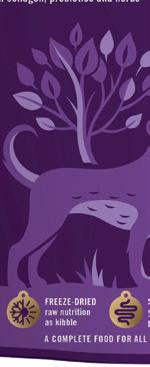








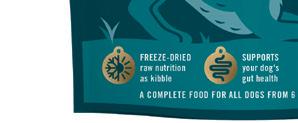

































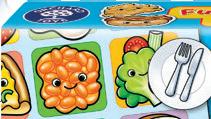
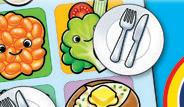





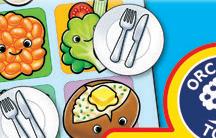




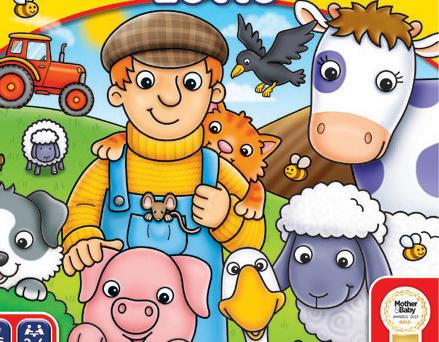







































































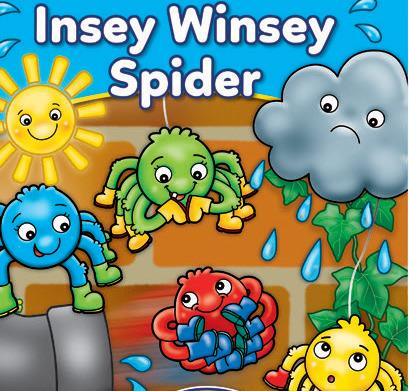
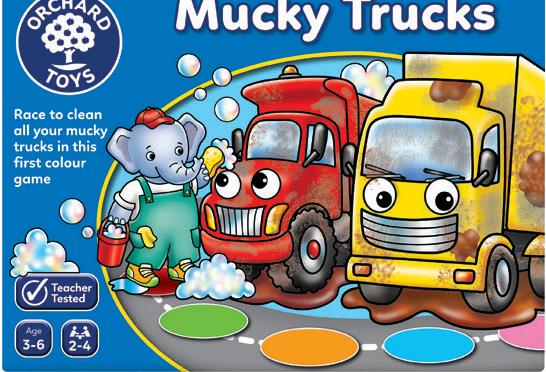









Toys play a crucial role in child development, providing more than mere entertainment. Which are the best types for your child?
While it’s recognised that digital resources have a part to play in child development, traditional toys, such as educational games, puzzles, and colouring books, hold a significant edge over digital resources in cultivating some essential developmental skills.
Physical toys require active engagement and manipulation, crucial for developing fine motor skills and physical coordination. Digital games often involve passive interaction, leading to reduced physical activity.
Traditional toys like puzzles and educational games promote cognitive development by enhancing problemsolving skills, spatial awareness, and memory. By figuring out how pieces fit together, children develop logical thinking and perseverance. Educational games often incorporate elements of mathematics, language, and science, making learning enjoyable and interactive Colouring books are excellent for improving fine motor skills and hand-eye coordination. The act of colouring within lines and selecting appropriate colours involves decision-making and attention to detail. This seemingly simple activity aids in the development of focus and concentration, crucial for academic success. Colouring books can also serve as a therapeutic tool, allowing children to express their emotions creatively. This form of self-expression provides a sense of accomplishment and boosts self-esteem when they complete a page or create something beautiful.
TEAMWORK
Traditional toys also significantly contribute to
social and emotional development. Board games and group puzzles encourage teamwork, cooperation, and communication.
Orchard Toys’ award-winning games, jigsaw puzzles, and activity books make learning fun - perfect for little ones starting at just 18 months old, the range is packed with fun and learning. From unicorns to dinosaurs, Orchard Toys’ games are designed to boost key early skills with easy, engaging gameplay that will keep children entertained play after play. Dive into the fun today at www.orchardtoys.com
Physical toys provide opportunities for children to learn about taking turns, sharing, and empathising with others’ perspectives. Such interactions are fundamental in developing social skills and emotional intelligence.
Physical toys also promote gross and fine motor skills. Building blocks, for instance, require precise hand movements and coordination. Activities like drawing and colouring strengthen the small muscles in the hands, preparing children for writing tasks in school.
Traditional toys encourage imaginative play, a critical aspect of cognitive development that digital resources often fail to foster. Excessive screen time is associated with attention issues and diminished social interactions. Traditional toys, conversely, encourage face-toface communication and collaborative play, essential for developing strong interpersonal skills. Investing in traditional toys is investing in a child’s future, ensuring they develop the essential skills needed to thrive in a complex world. ■
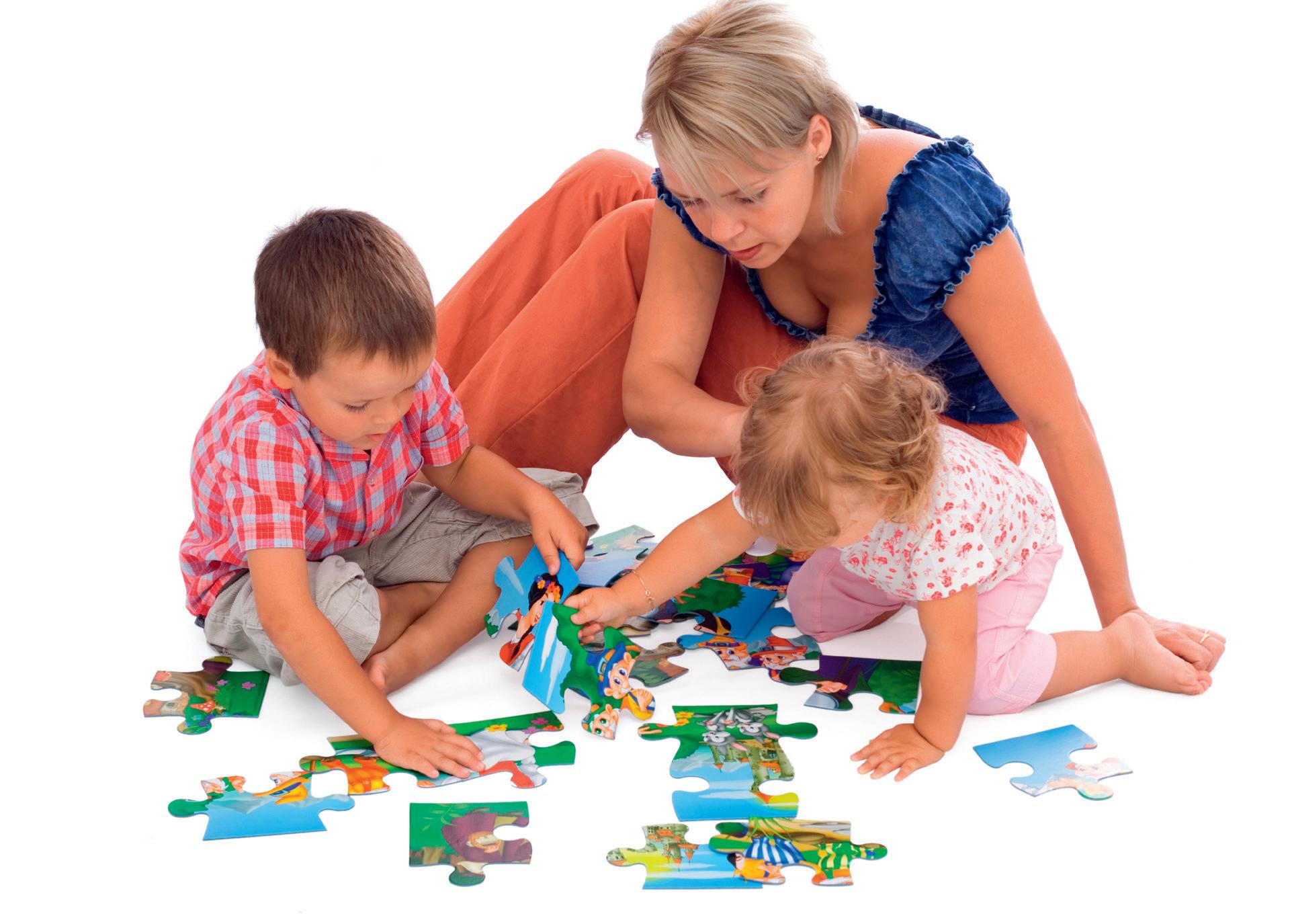










It’s never too early to try to pass on some culinary skills – but how do you start getting the kids working in the kitchen?
Getting kids interested in preparing food helps them to learn skills useful in later life, and gives them an interest in healthy eating. Here are some top tips for cooking with young children, older children and teenagers from the Association of UK Dieticians, the BDA.
h Allow plenty of time. Cooking with children can take up to twice as long as normal
h Get organised. Make sure you have everything you need before you start. Check the recipe carefully and make a list of everything you need, including equipment
h Repeat after us: a bit of mess is okay. Don’t get stressed about it – it’s all part of the process. Clean up as you go and get kids to help with this too
h Who’s doing what? Put some thought into which cooking tasks your child will
be able to do. To begin with, you may need to work this out by trial and error. If you’re cooking with more than one child, think about whether they’re going to take turns or have different jobs. A little bit of planning can save a lot of arguing!
Keep things simple to start with while you get a feel for what they can do. Don’t panic if things go wrong. Even if your recipes don’t turn out like the pictures, you will have had fun and learned some lessons for the next time you try.
Kids have a limited attention span, so for the one-to-fives, have another activity on hand, like colouring, to keep them busy if their attention wanders. But with your supervision, recipes which involve mixing, combining and assembling like dips, bread, scones, muffins, layered fruit and yoghurt pots work really well.
With close supervision from you, children from 6-11 can start to learn how to chop and peel safely – and feel like real chefs in the process. They’ll love to try weighing and measuring, peeling, chopping, crushing, mixing, whisking, squeezing, sifting, grating, rolling, rubbing-in and mashing. Get them decorating a pizza with as many different colours of vegetables as they can, or making a picture on their pizza using their toppings. Teenagers might want to take a more leading role in cooking, which is great, so long as you’re still on hand to supervise. If their friends are coming over, get them cooking the meal. Build up their confidence on the things they love to cook, maybe cakes or desserts, and get them to make their own ‘takeaway’ pizza, Chinese or Indian recipes rather than spending a fortune on a takeaway. ■
















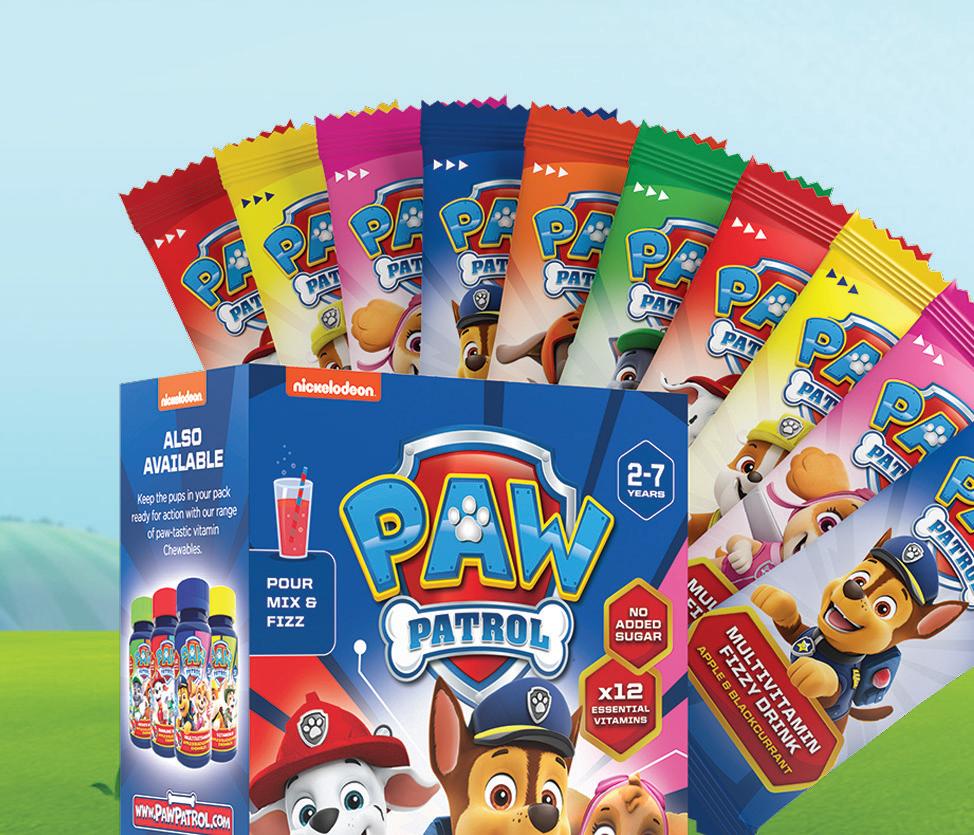














































































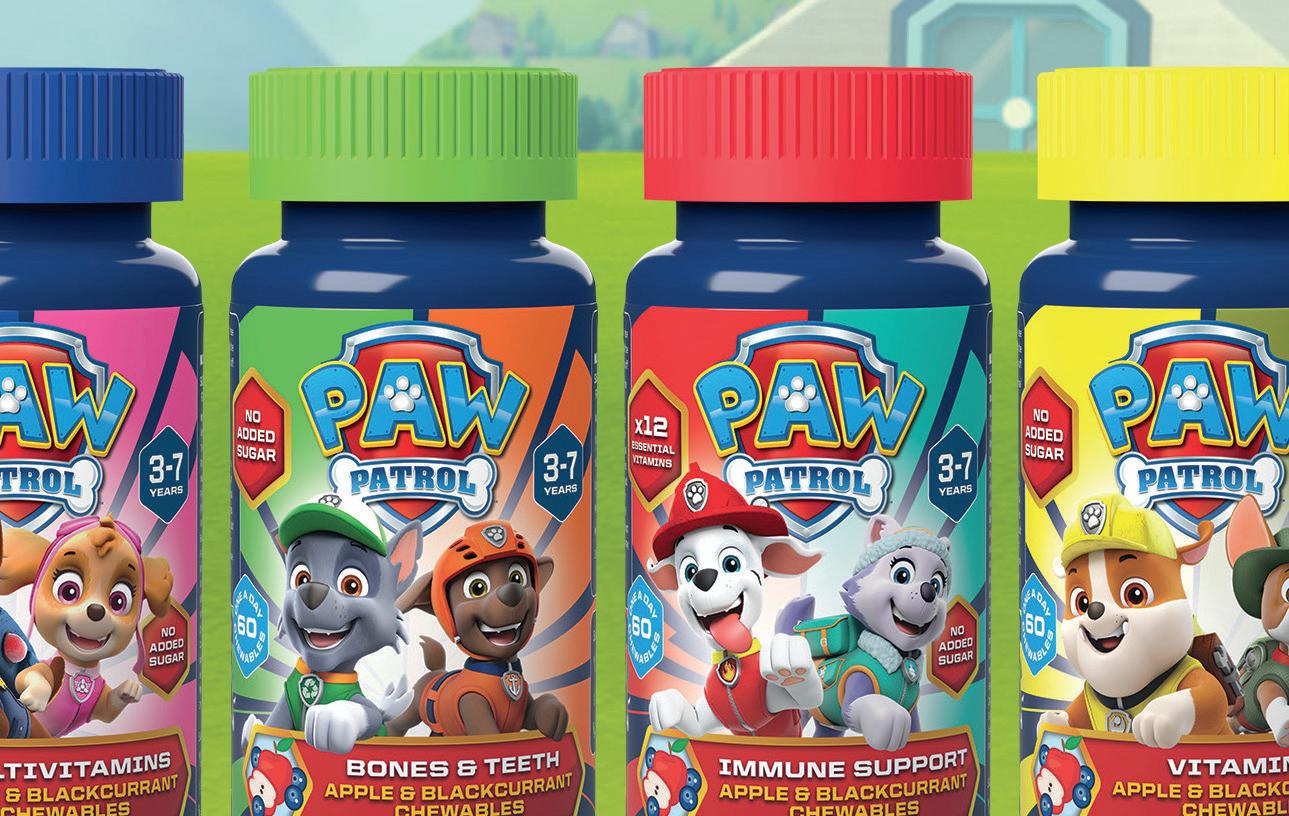



















POUR • MIX • FIZZ



vitamins. Easy to prepare, this delicious apple & blackcurrant flavour drink is a great alternative to traditional supplements. health of kids.


































AVAILABLE FROM










